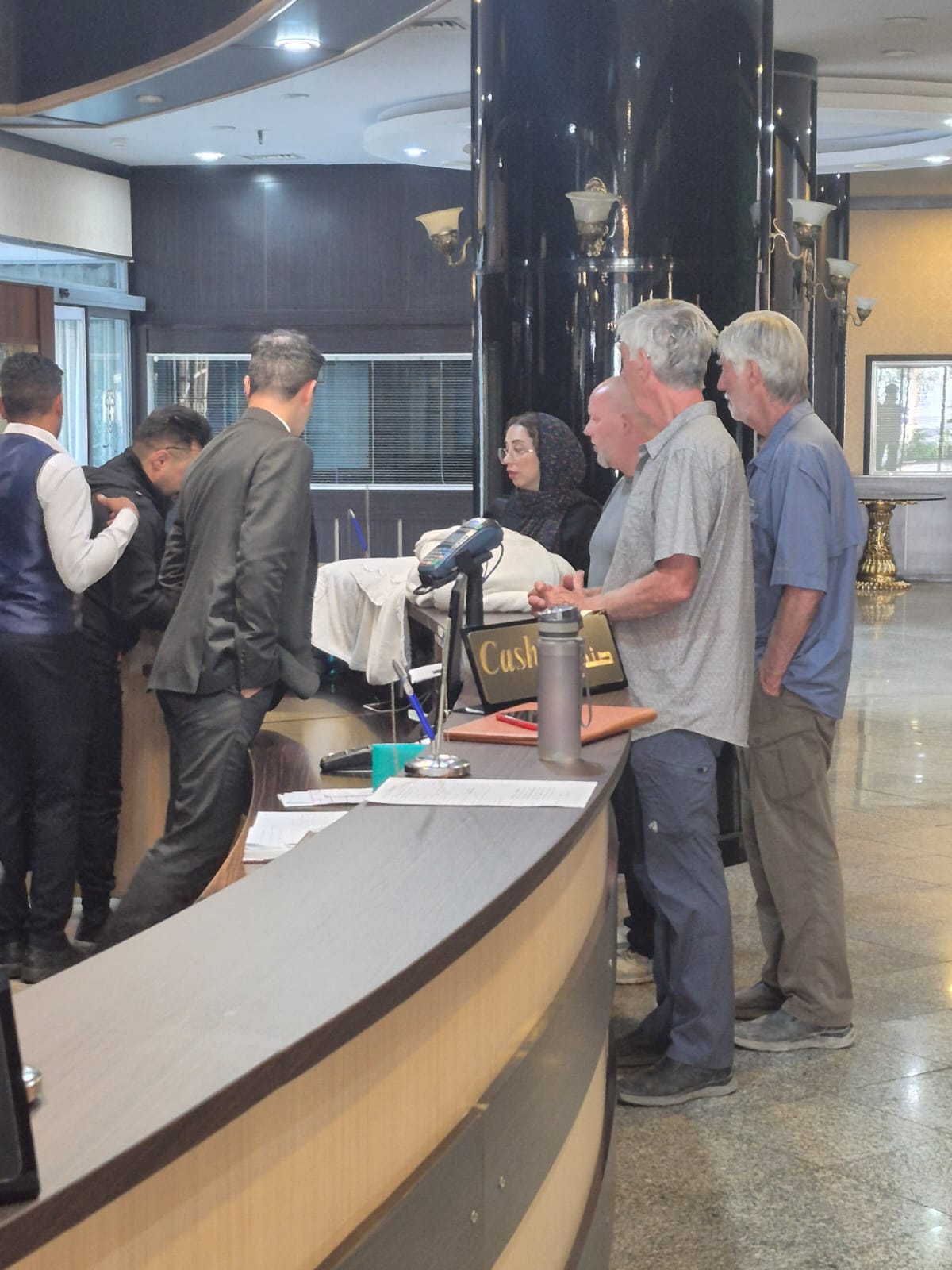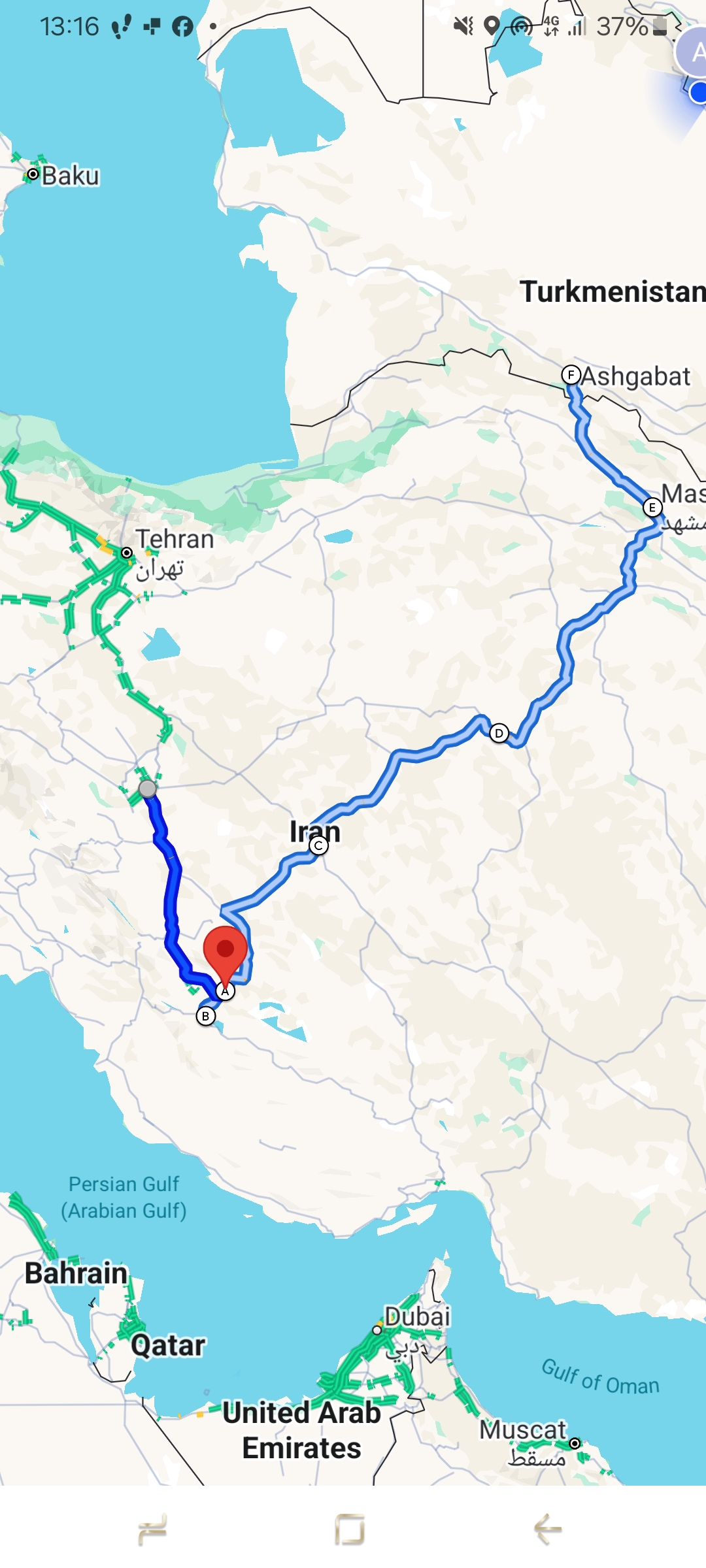Half way around Iran what have we found?
The flag has a green stripe on top for peace, a red at the bottom for defence and on the white in the middle the name Allah. Prior to the revolution it was a lion and sword in the middle.
Lovely friendly people. Everyone wants to say hello and welcome us to Iran. We are a novelty as few foreign tourists have been in for years. We frequently get grabbed to be in photos- Sue had a baby thrust into her arms for a photo, and once we had a whole large family settle around us for a photo.
They are concerned about the propaganda we might have heard from our countries and are critical of their own regime. An Islamic state does not make for an Islamic population.
Petrol is rationed meaning that filling the truck involves black market negotiations at the petrol stations to buy ration cards. This may mean several different visits to to petrol stations to be successful.
We have got used to squat toilets- can be an issue with headscarves threatening to trail onto the wet floor. We have also learnt not to expect much from public toilets. However I wasn’t brave enough to try with the added hindrance of a chador.
This is a land of the Old Testament. Familiar names keep coming in the Kings of the Persian empire and it is easy to make the connections. So let’s start there. After leaving Isfahan we headed to Persepolis and on the way to some royal tombs.
The first was Cyrus the Great founder of the Persian empire, and creator of the first human rights legislation. It was not a lot to look at but very meaningful to Iranians. Cyrus was born 600BC and died 530 BC. At that time the main religion of Persia was Zorostrian, as such, he believed in one God and was tolerant of beliefs in the countries of his empire. He allowed the Jewish people who had been taken to Babylon to return to Judea and helped them rebuild the temple that Solomon built. His tomb has become a symbol of freedom in recent years as people reflect back on their heritage.
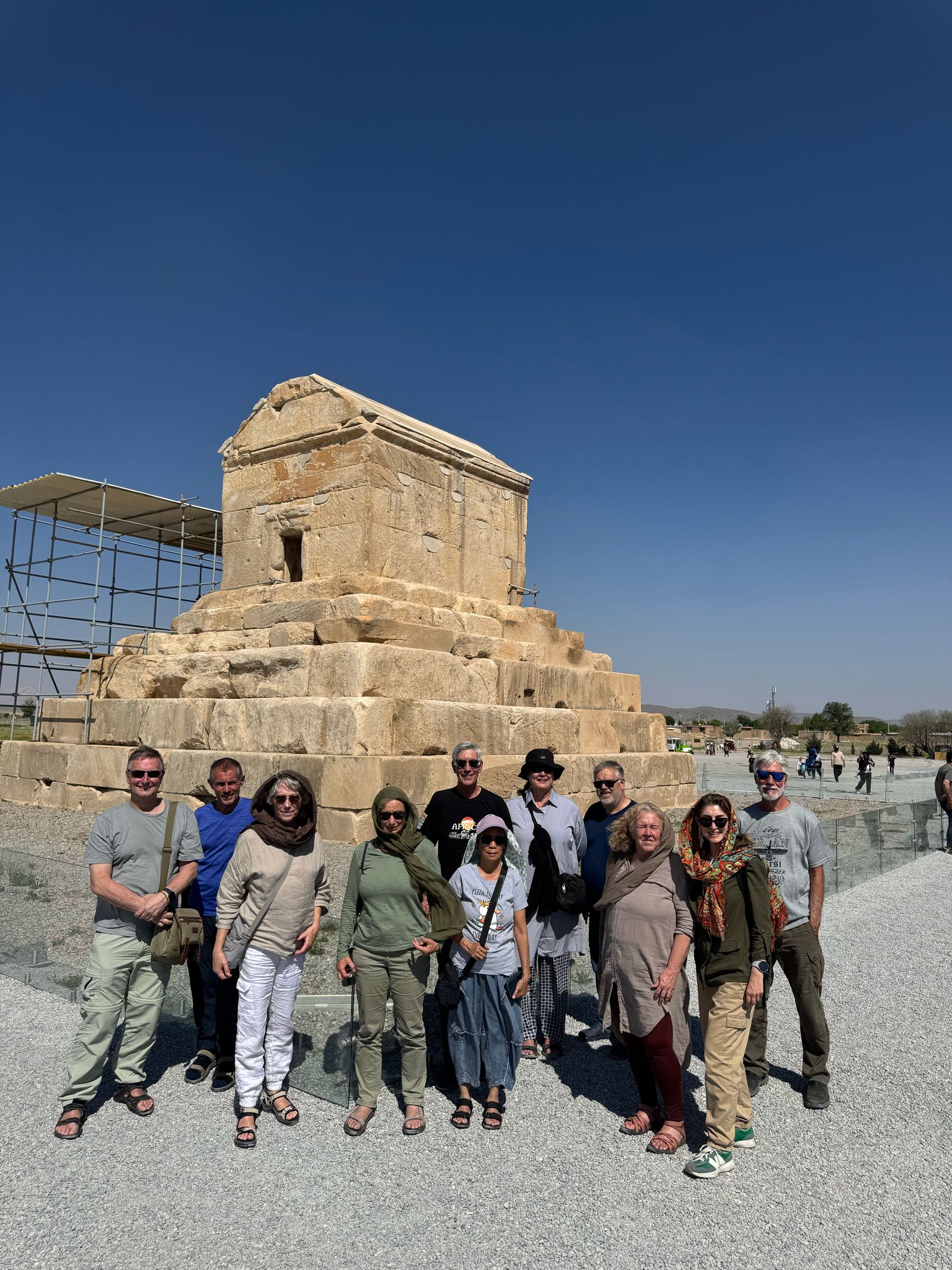
From here we went to memorials for other names. Xerxes and Darius. Xerxes famous for making Esther his queen, not as popular as Cyrus but still adhering to the Zorostrian principals.
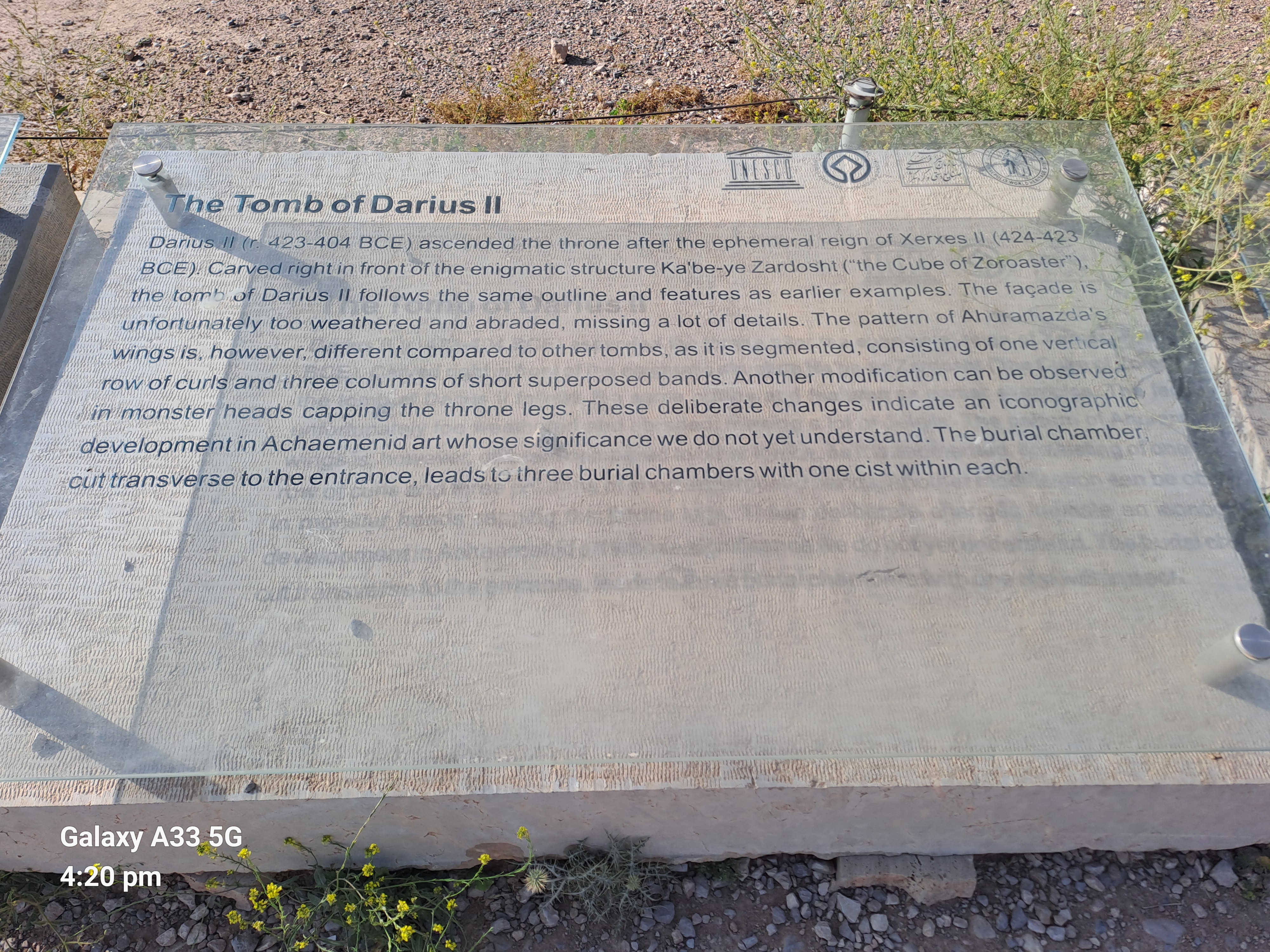
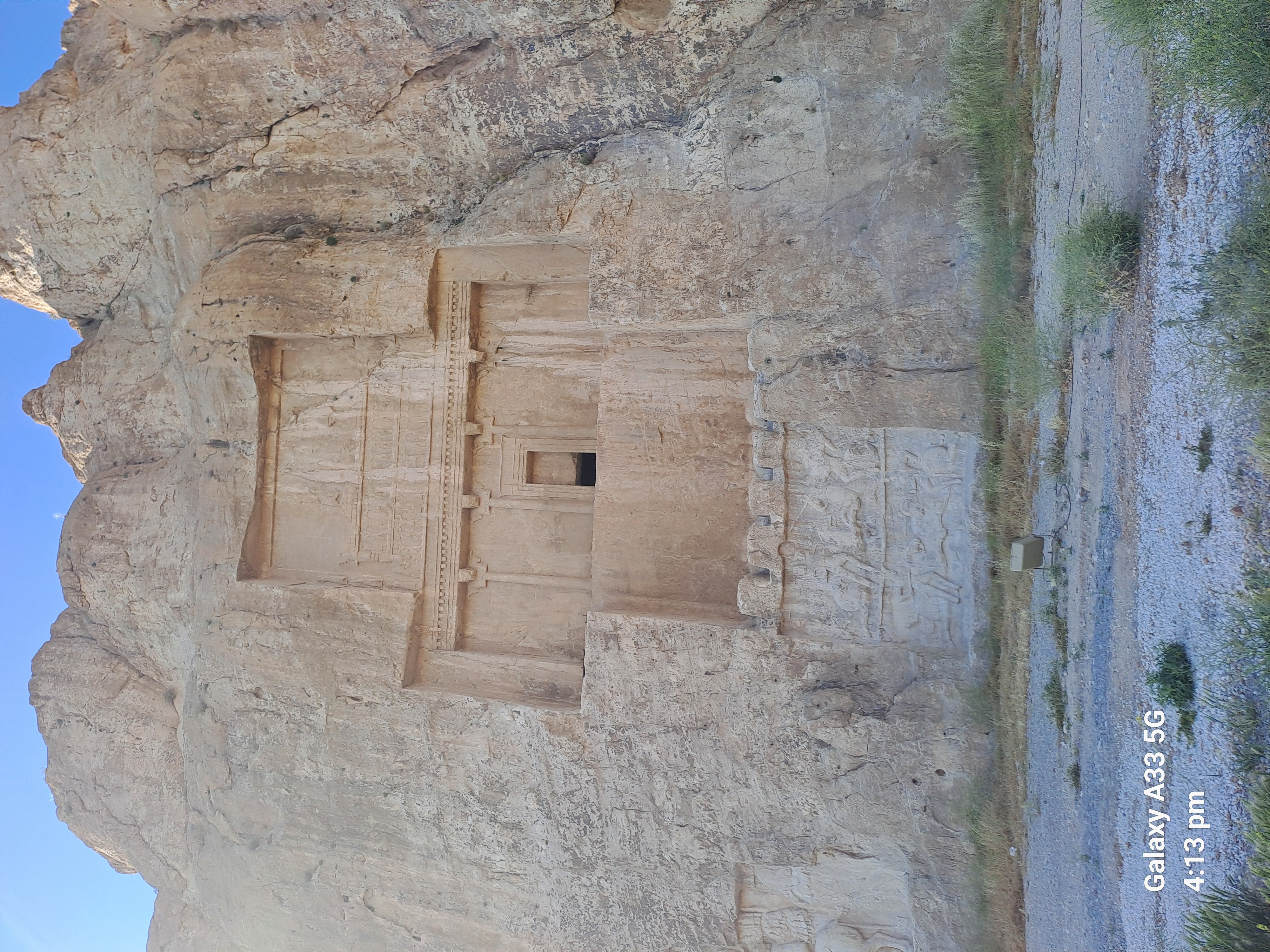
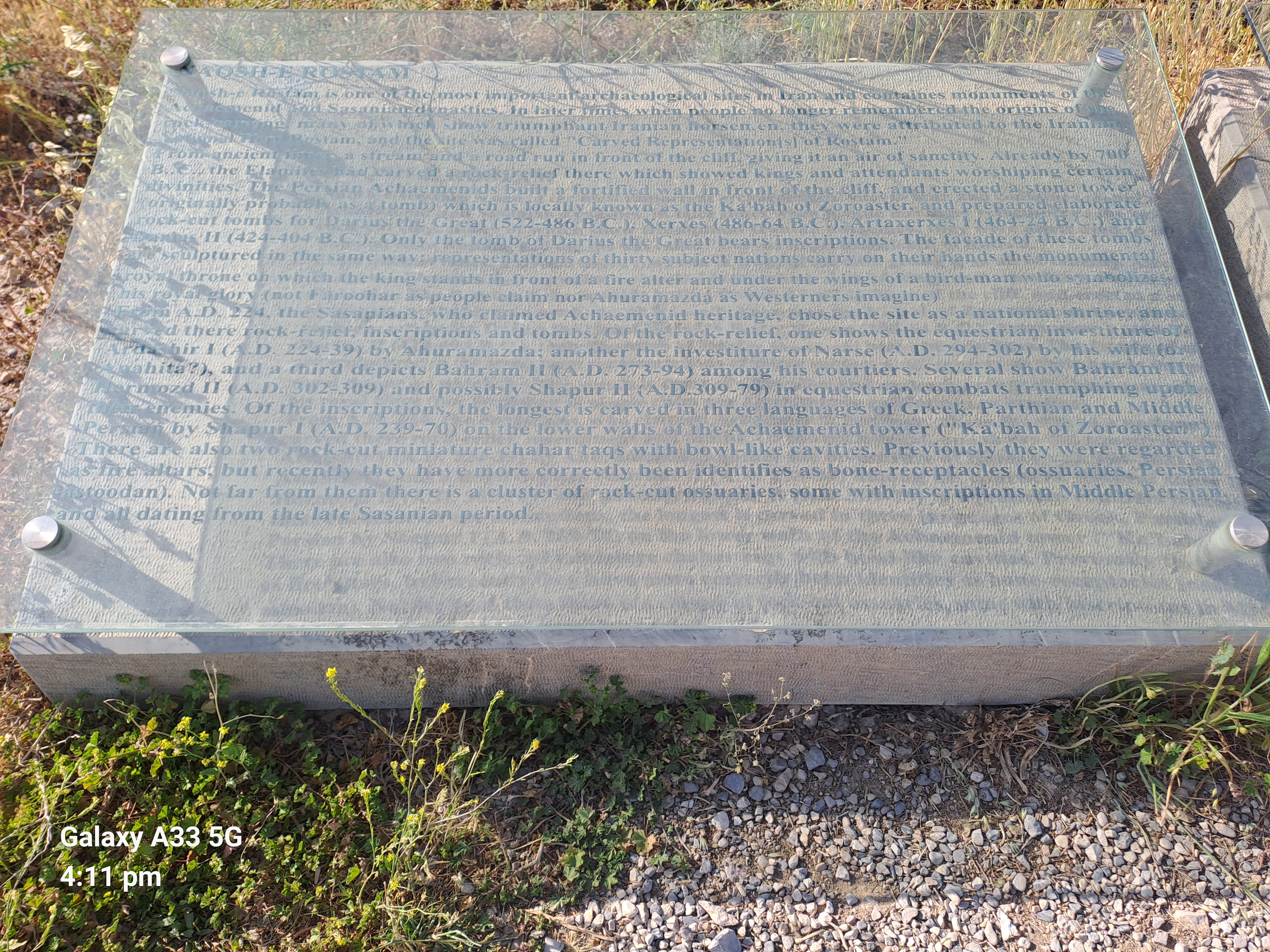
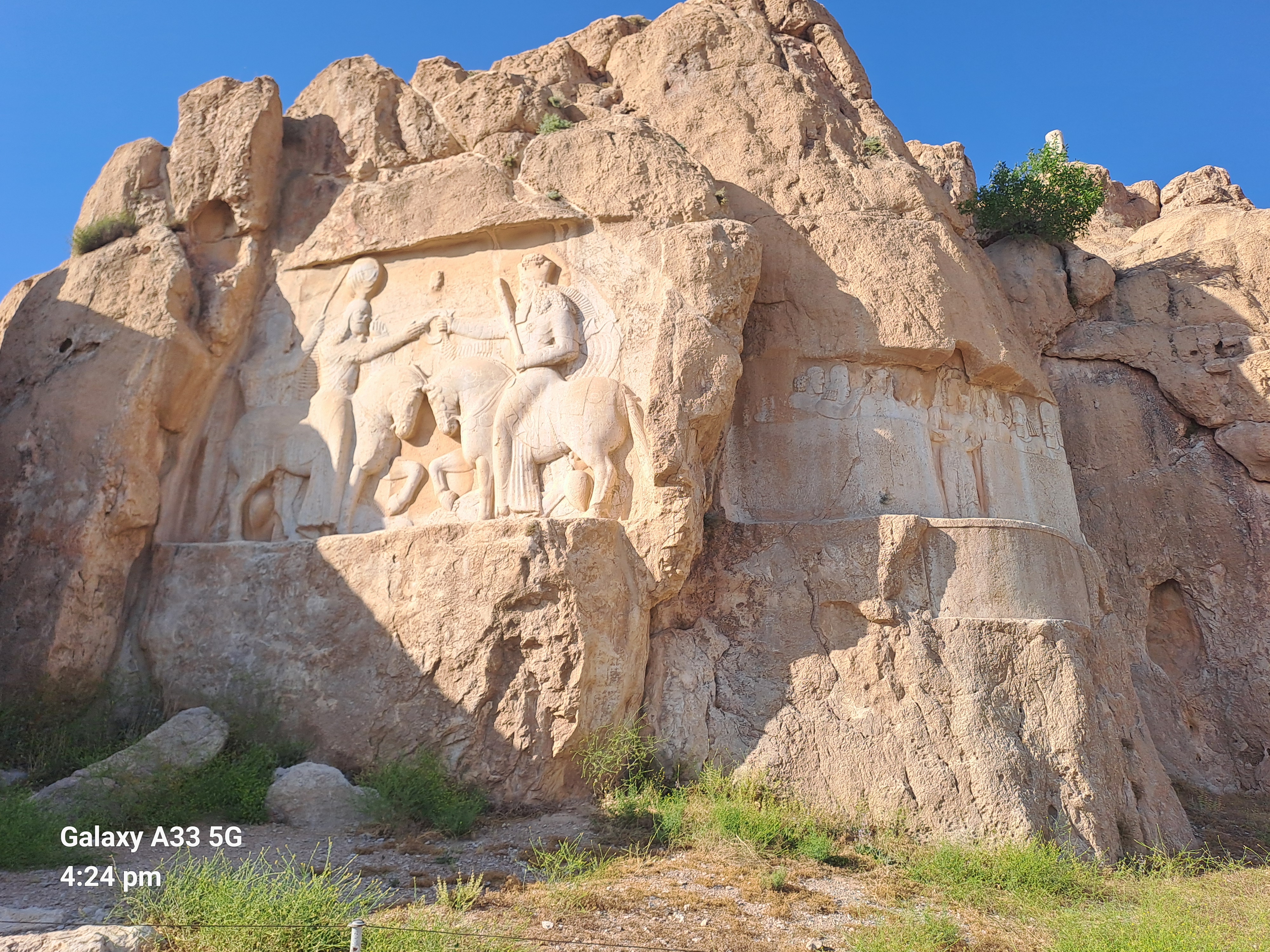
We arrived at Persepolis hotel ready to see the site the next day, but first we had more important things to do celebrating Ashley’s 60th and Sue’s 63rd birthdays.
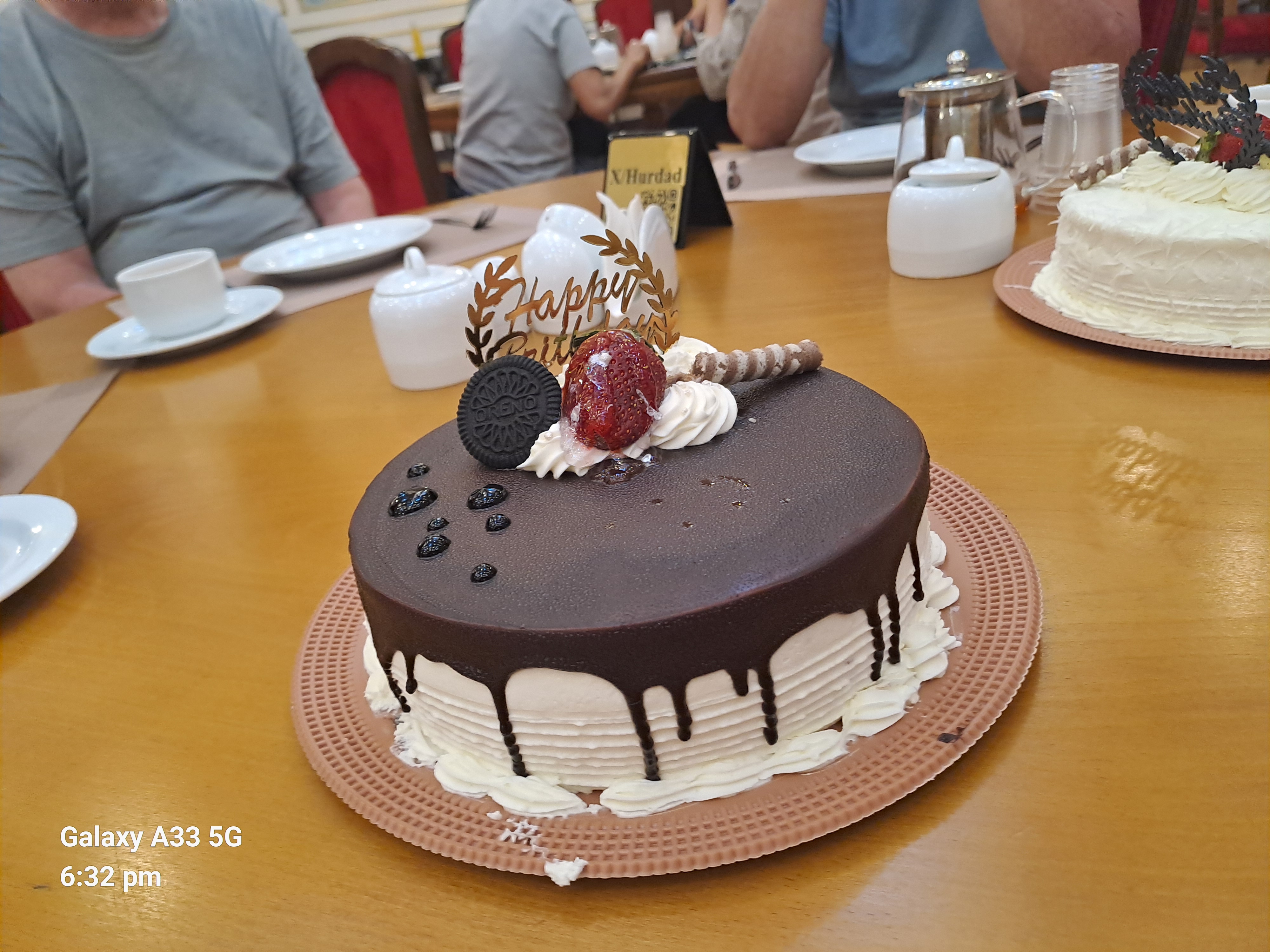
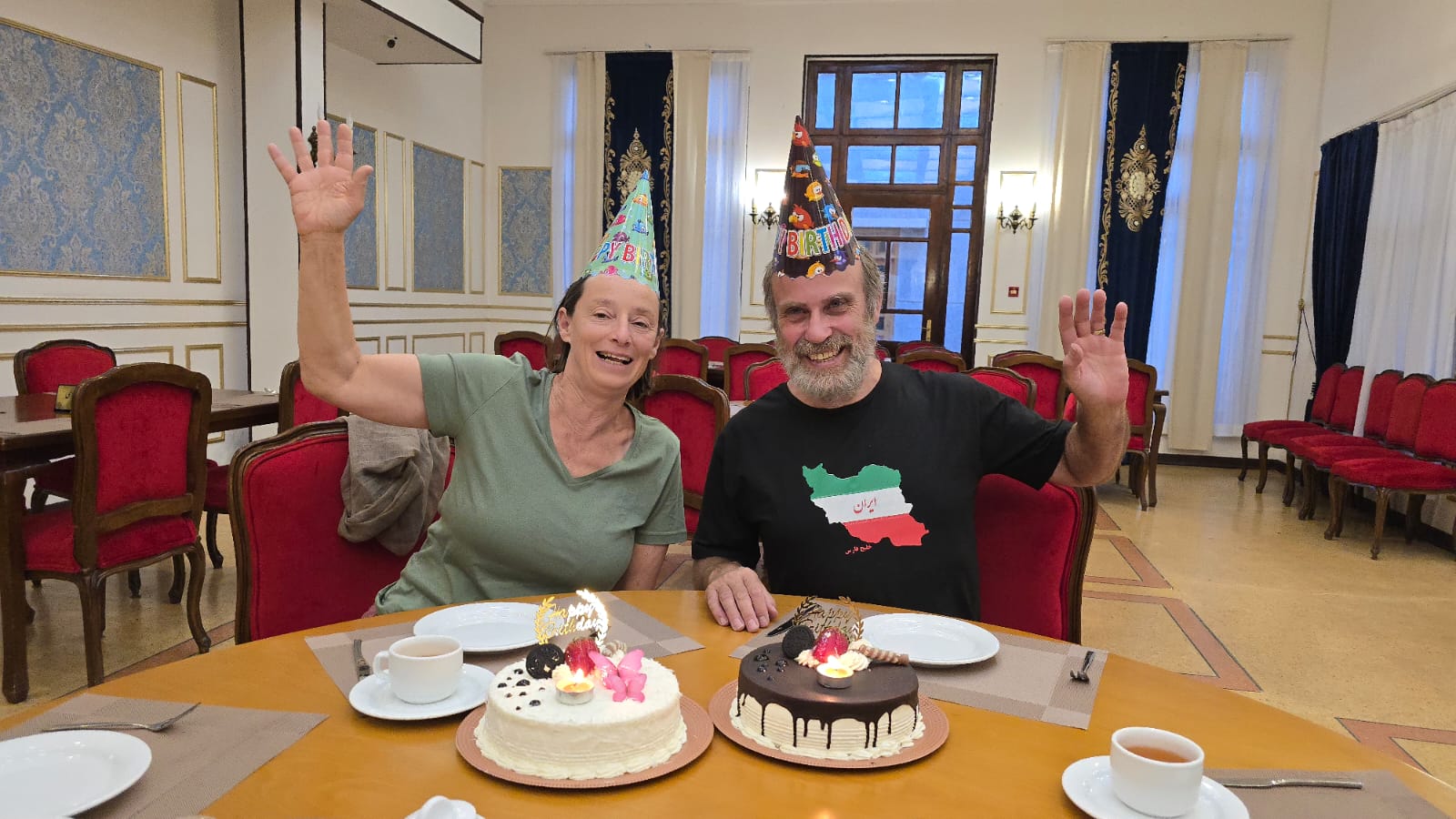
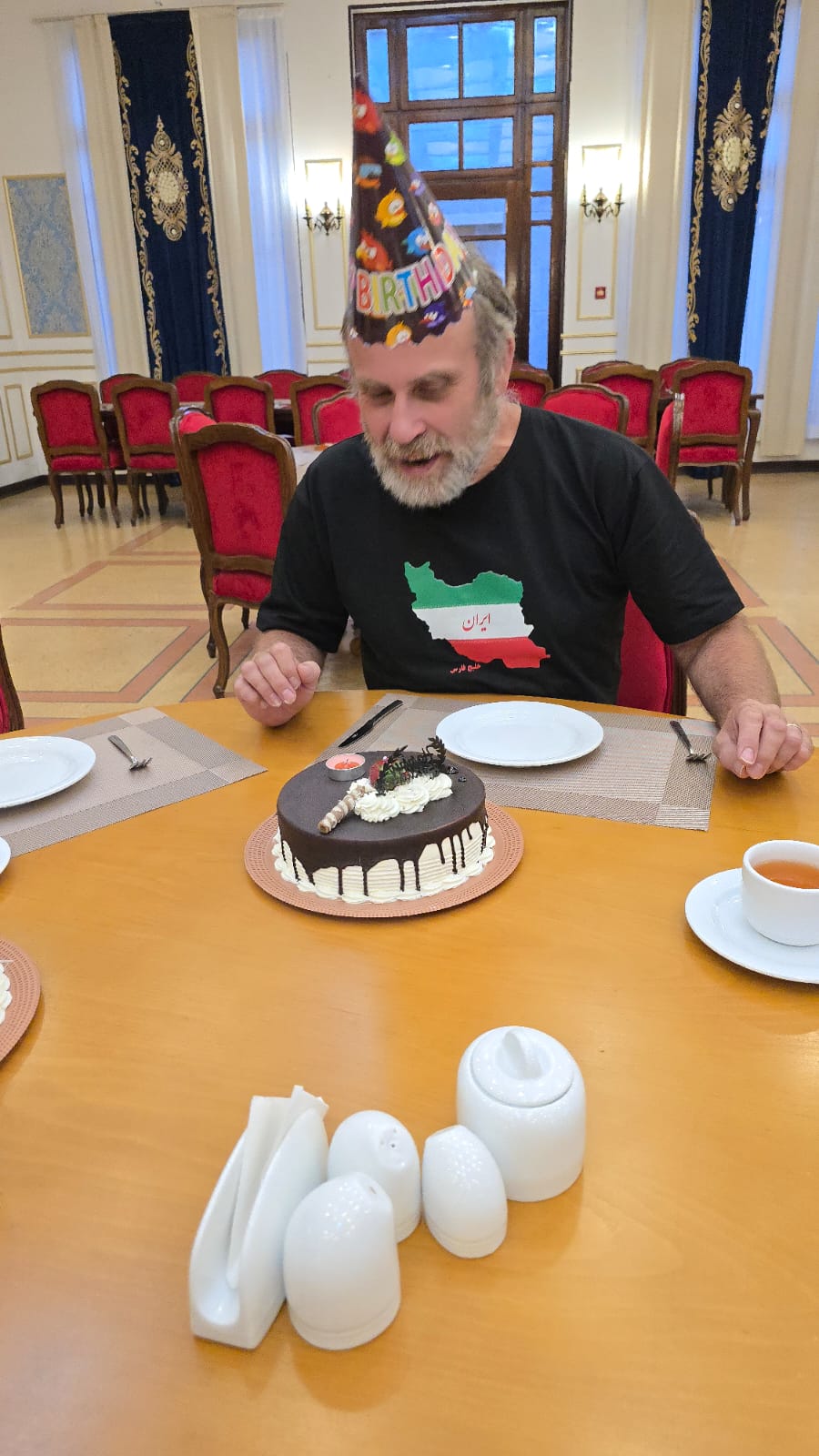
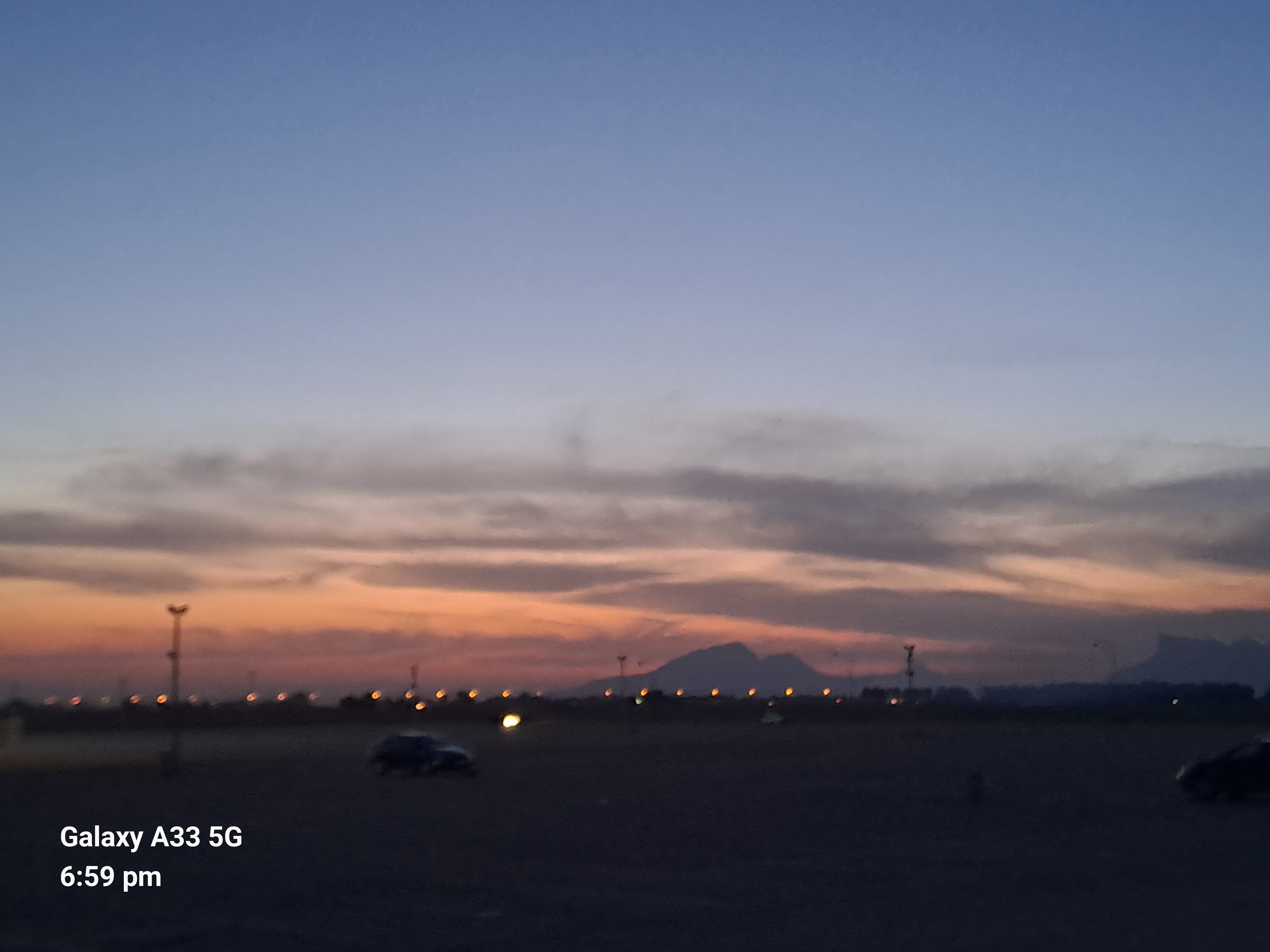
The next day we got to see Persepolis the Palace. The scale of this building was enormous. Although the site seemed smaller than Ephesus or Troy the actual building was bigger than anything else I’d seen.
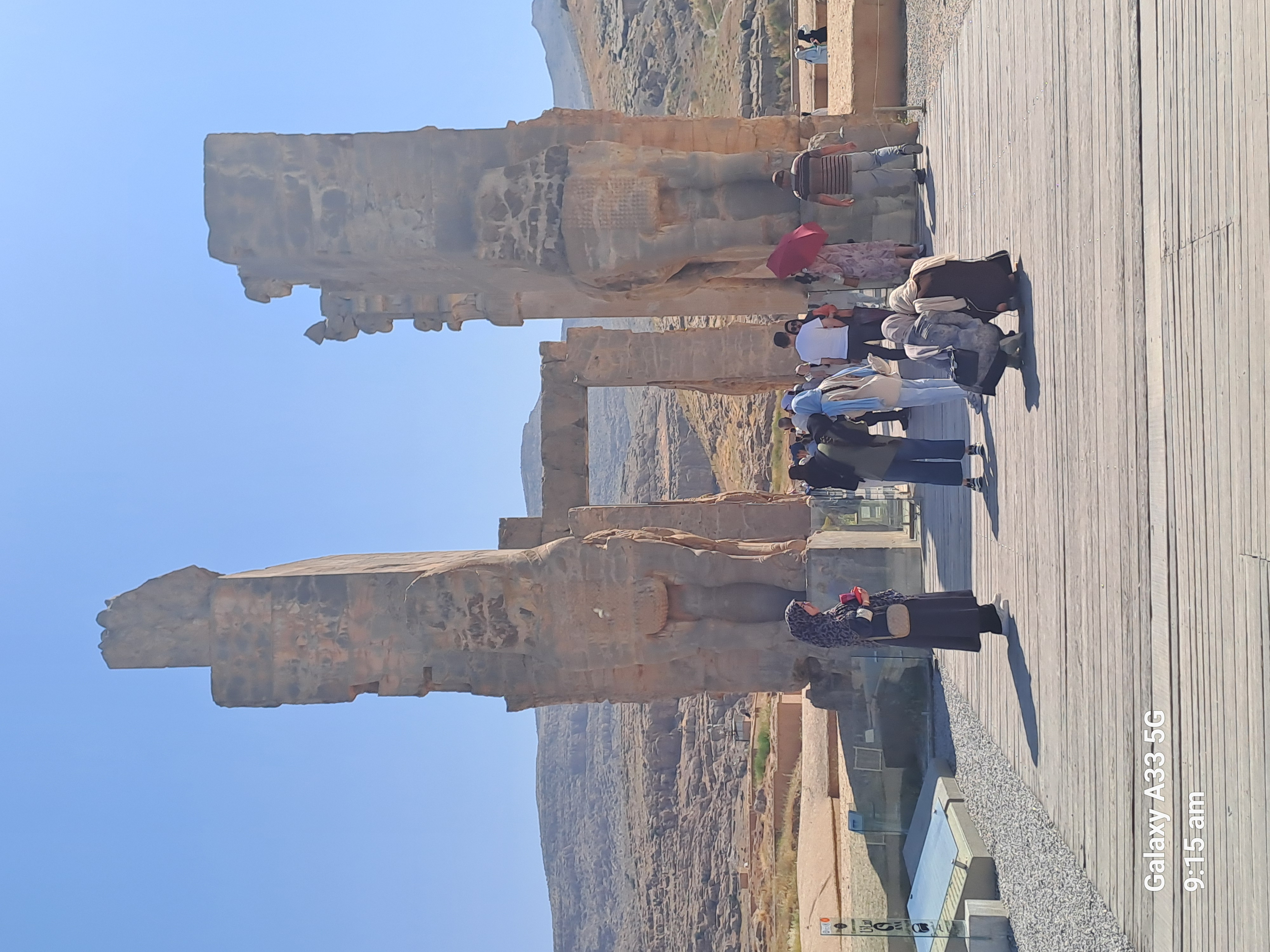
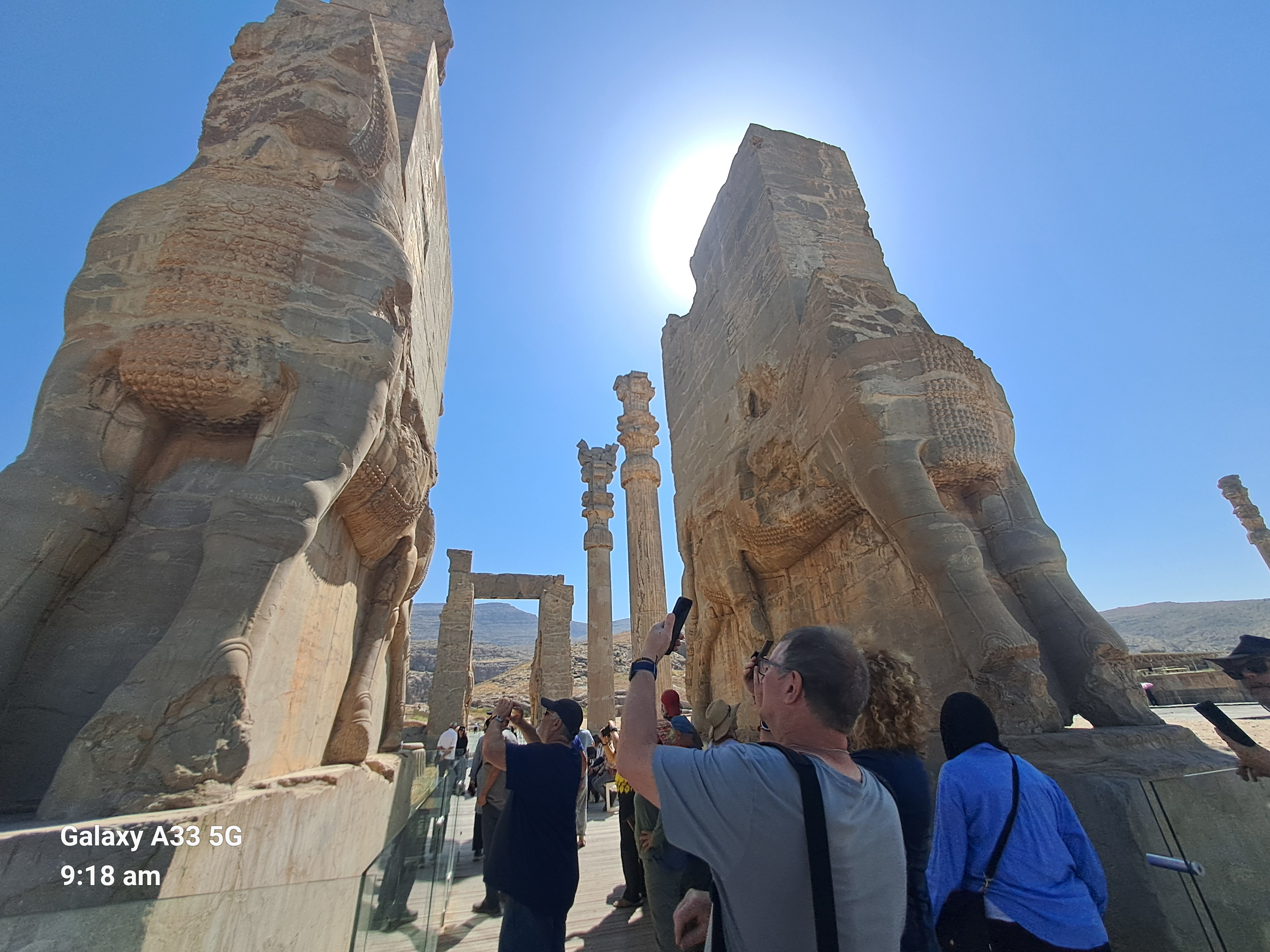
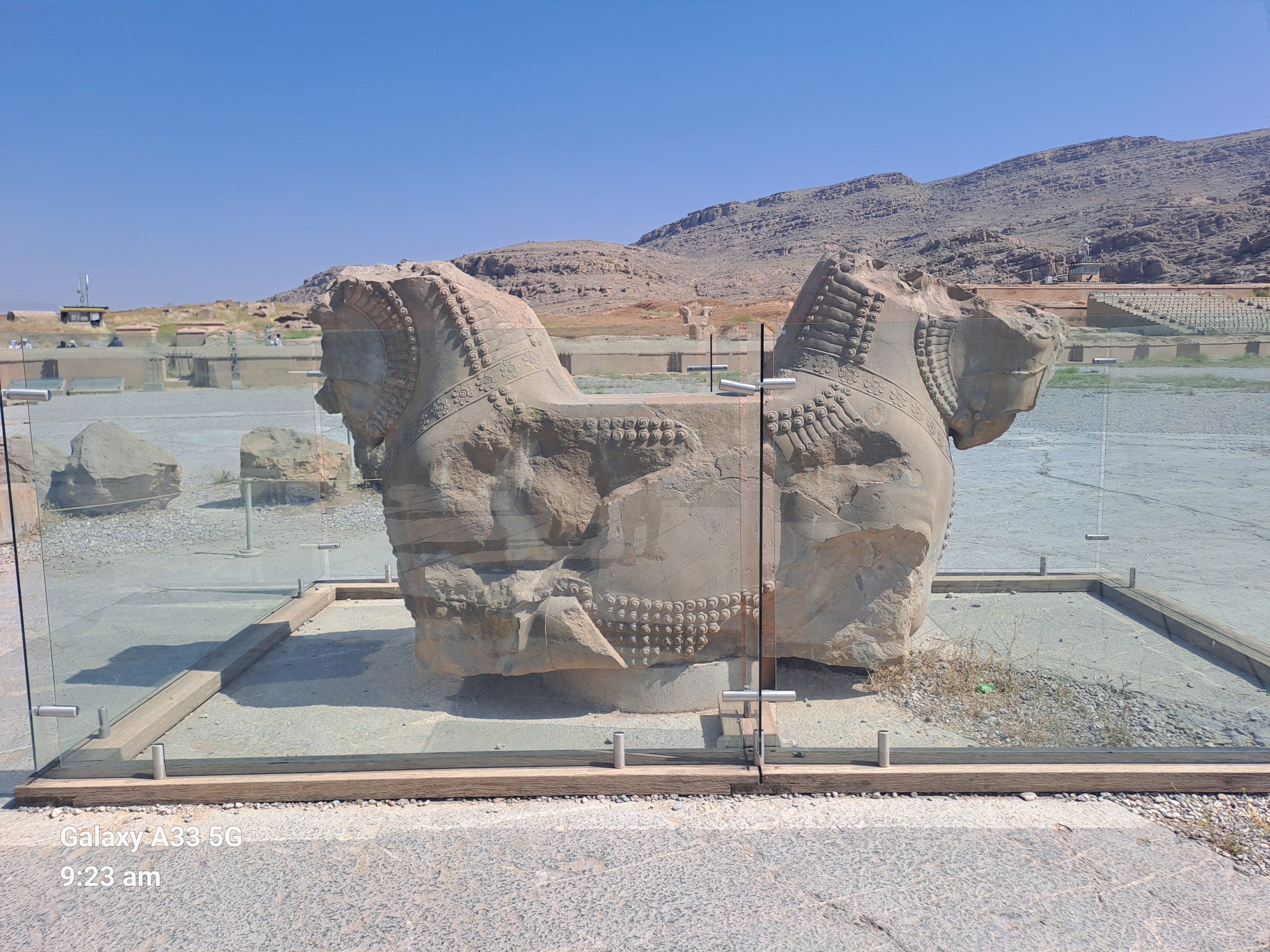
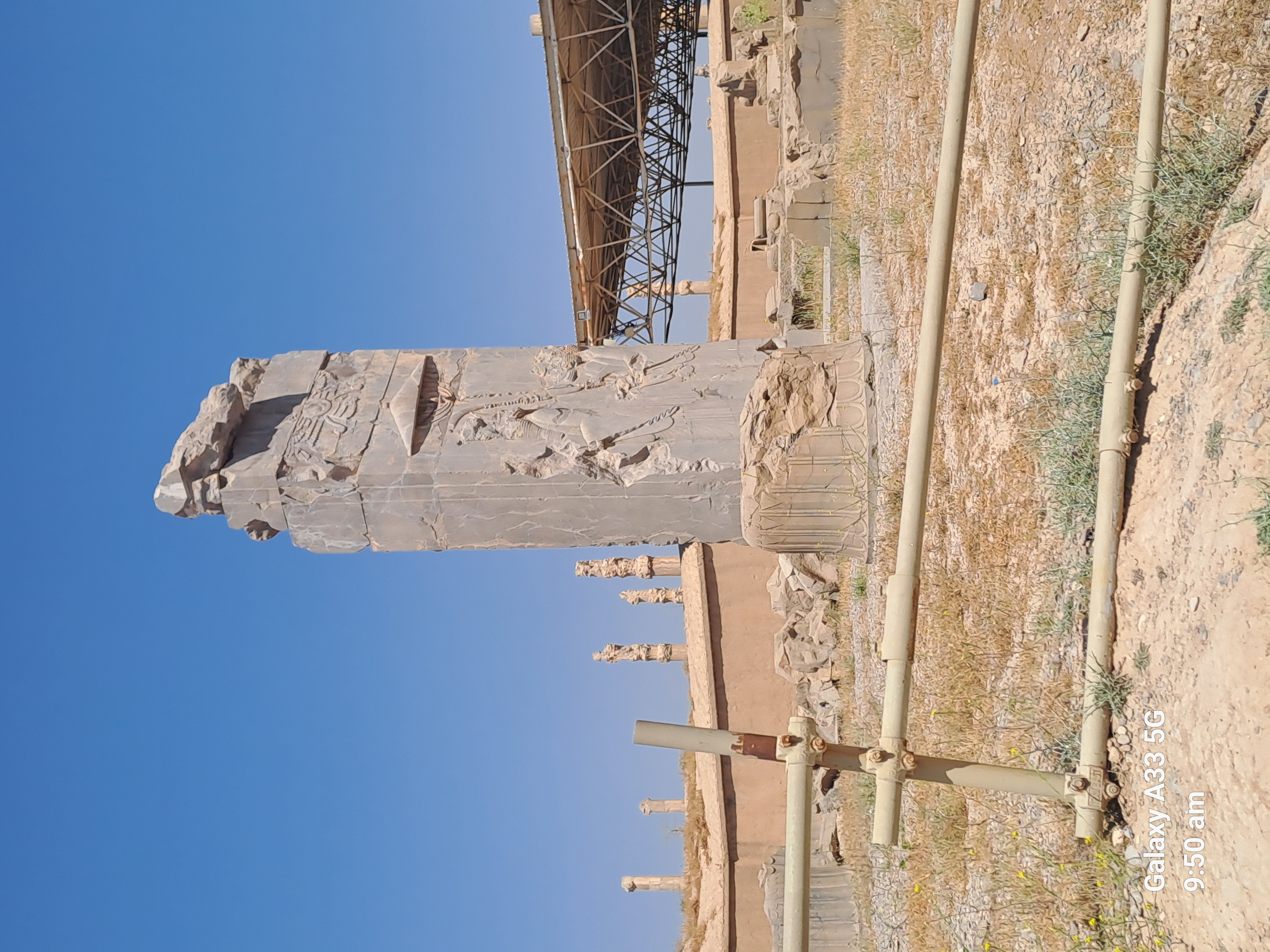
The wall murals depicted Meades and Persians mingling together in harmony I think the Persians were the ones with the flatter head covering.
The king had 10,000 men at arms at all times constantly being replaced as needed.

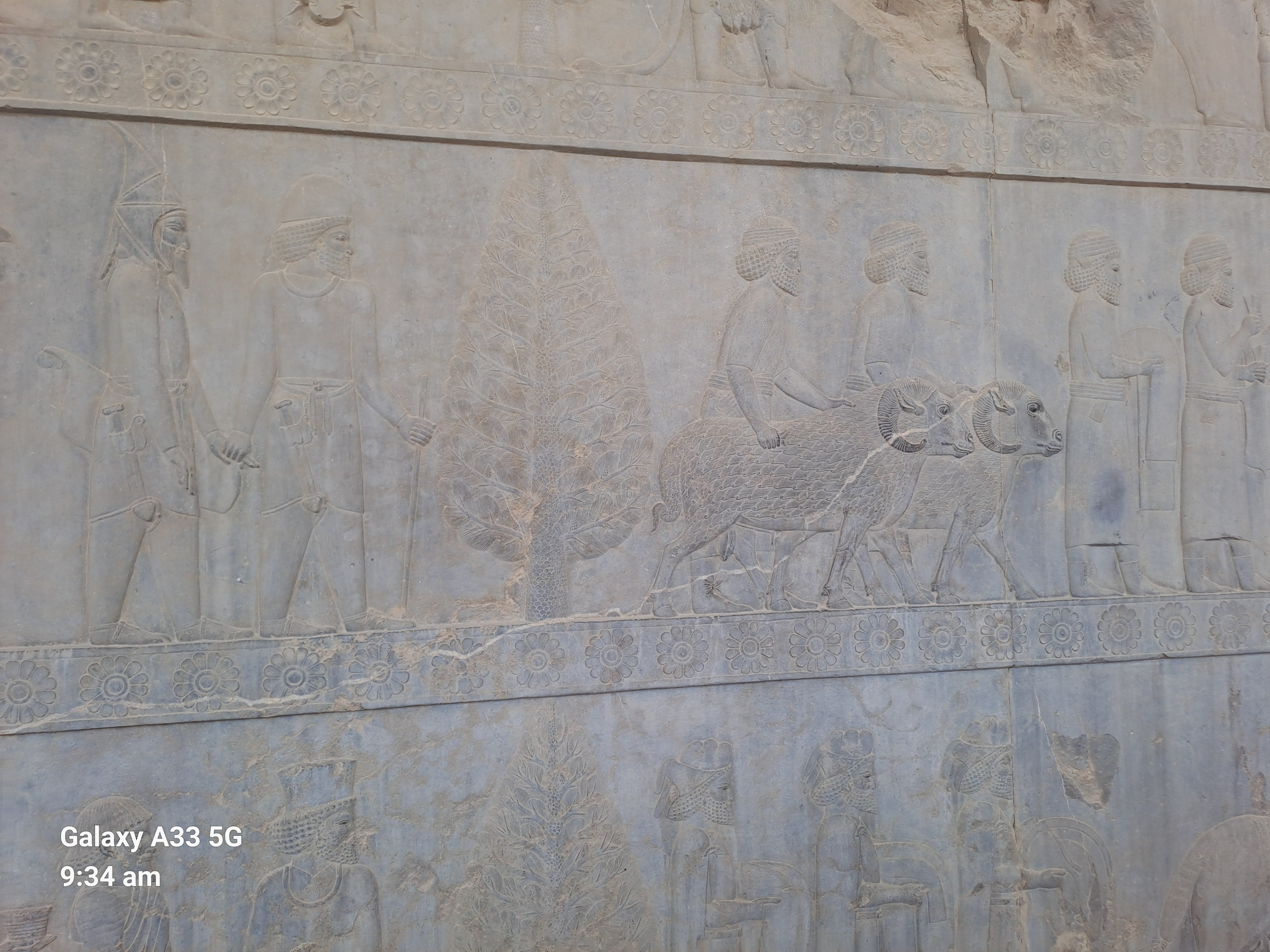
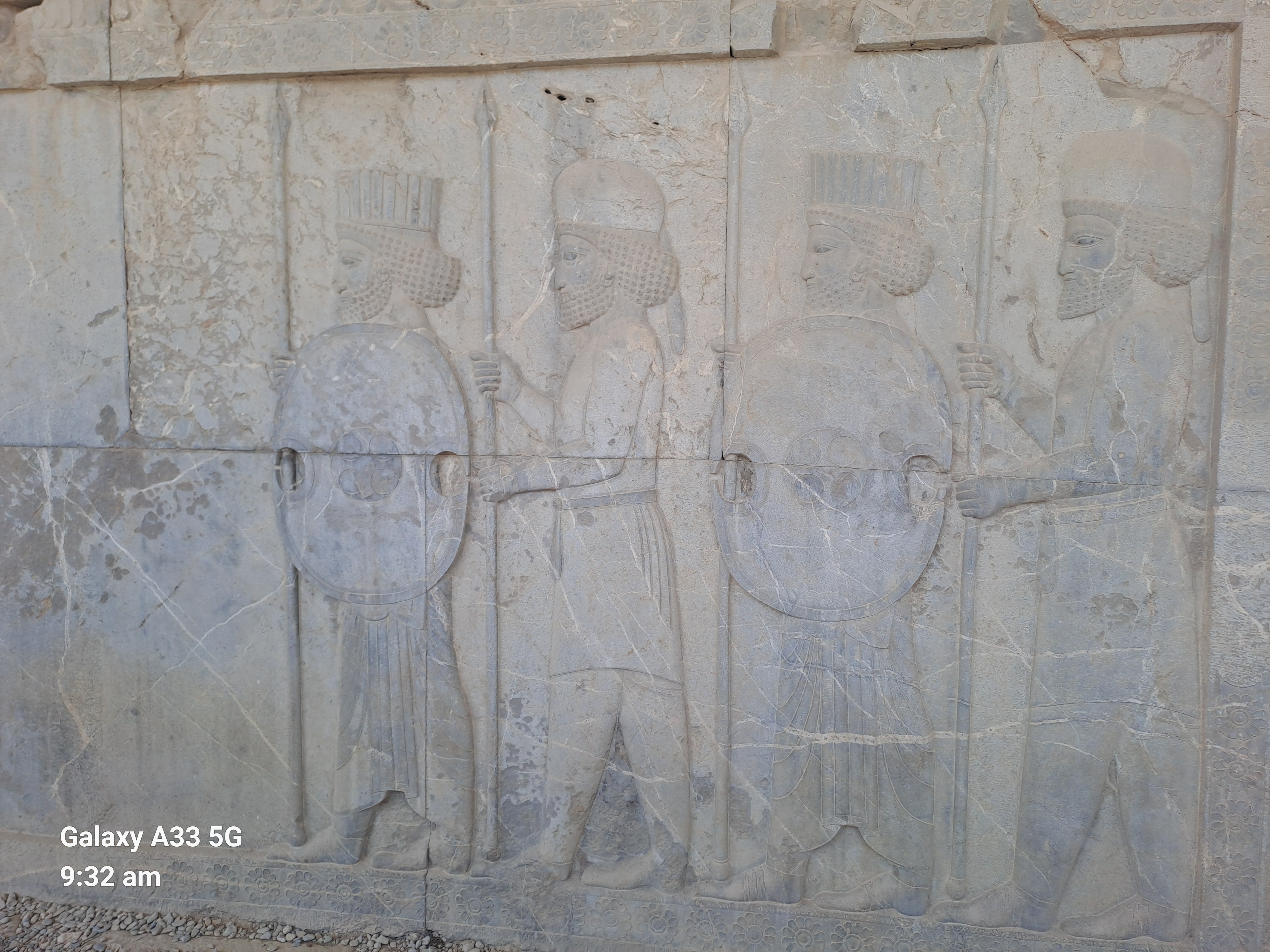
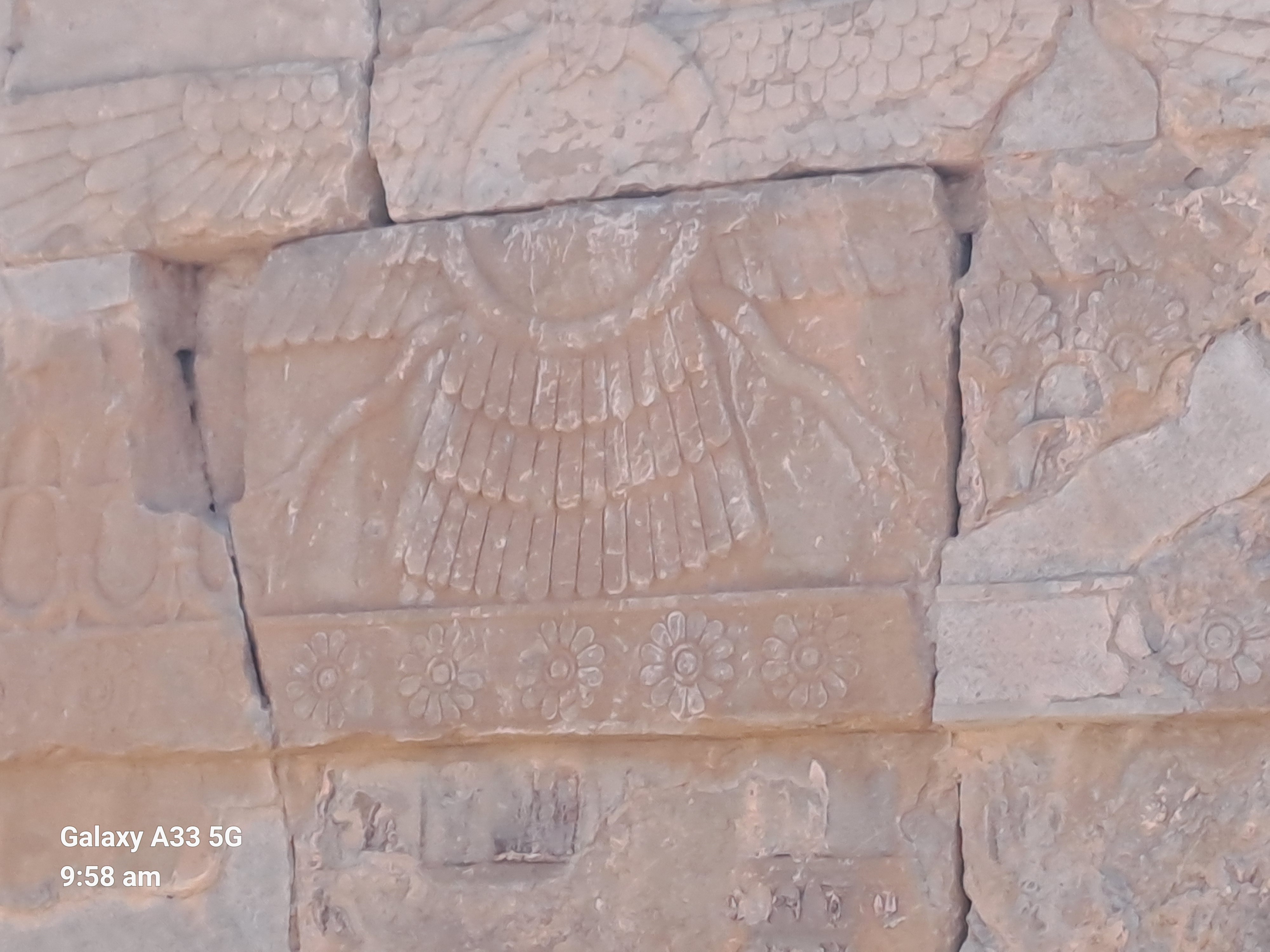
The Palace was designed or started by Cyrus the Great and added to by Darius.
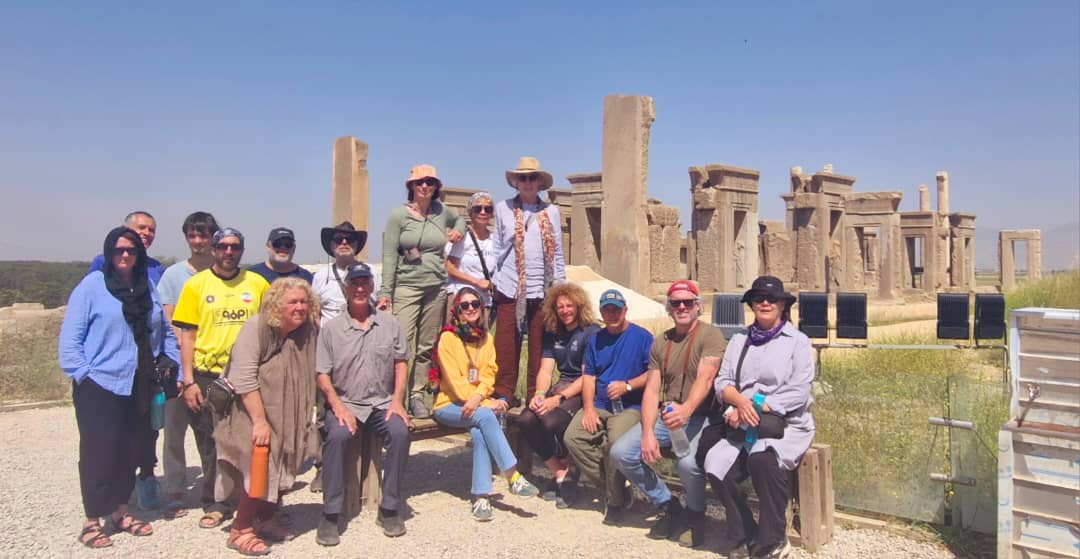
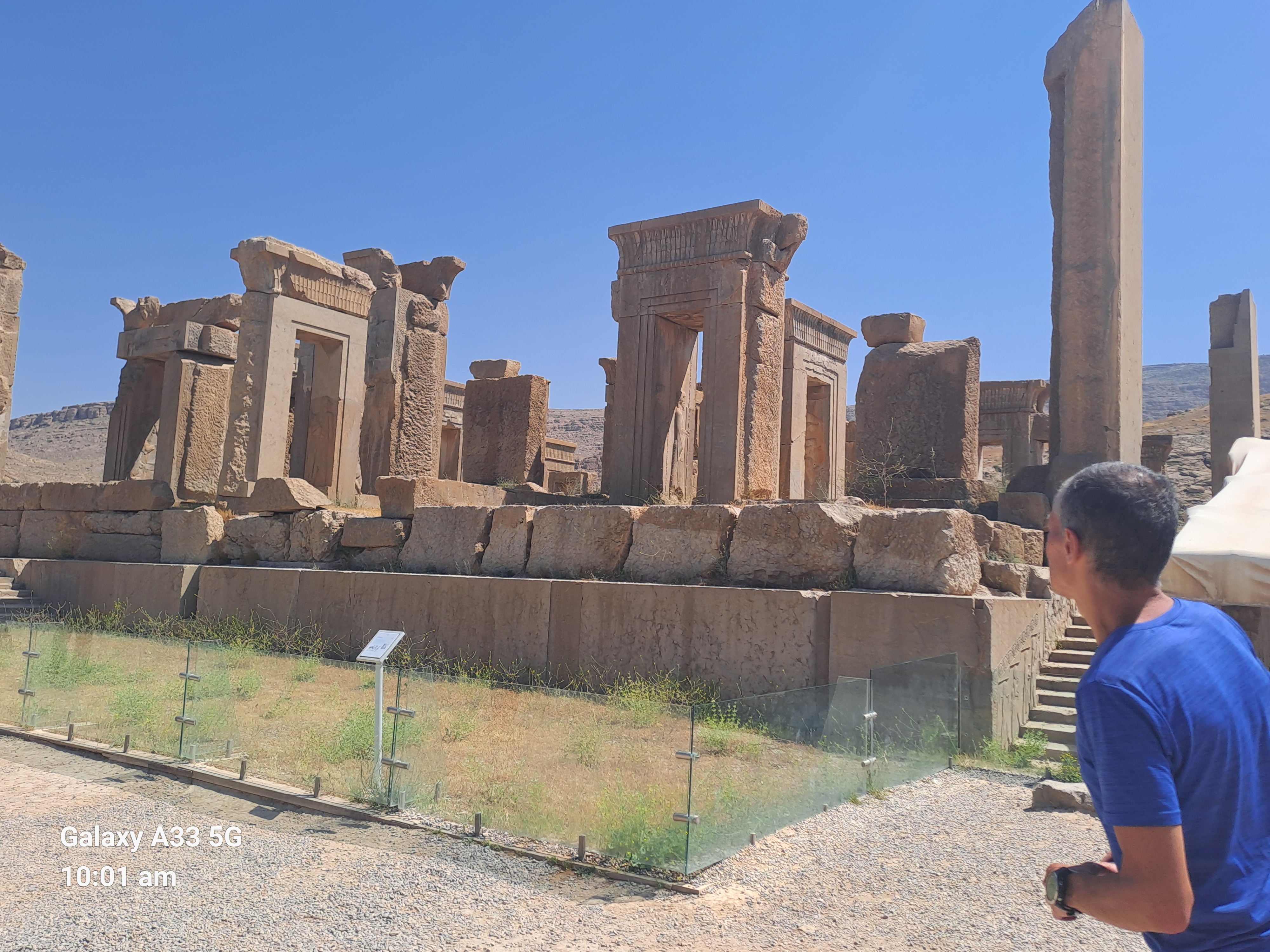
After Persepolis we moved on to Shiraz. No wine unfortunately. Here Ashley discovered the joys of the roof cafe and chocolate milk shake and cake!
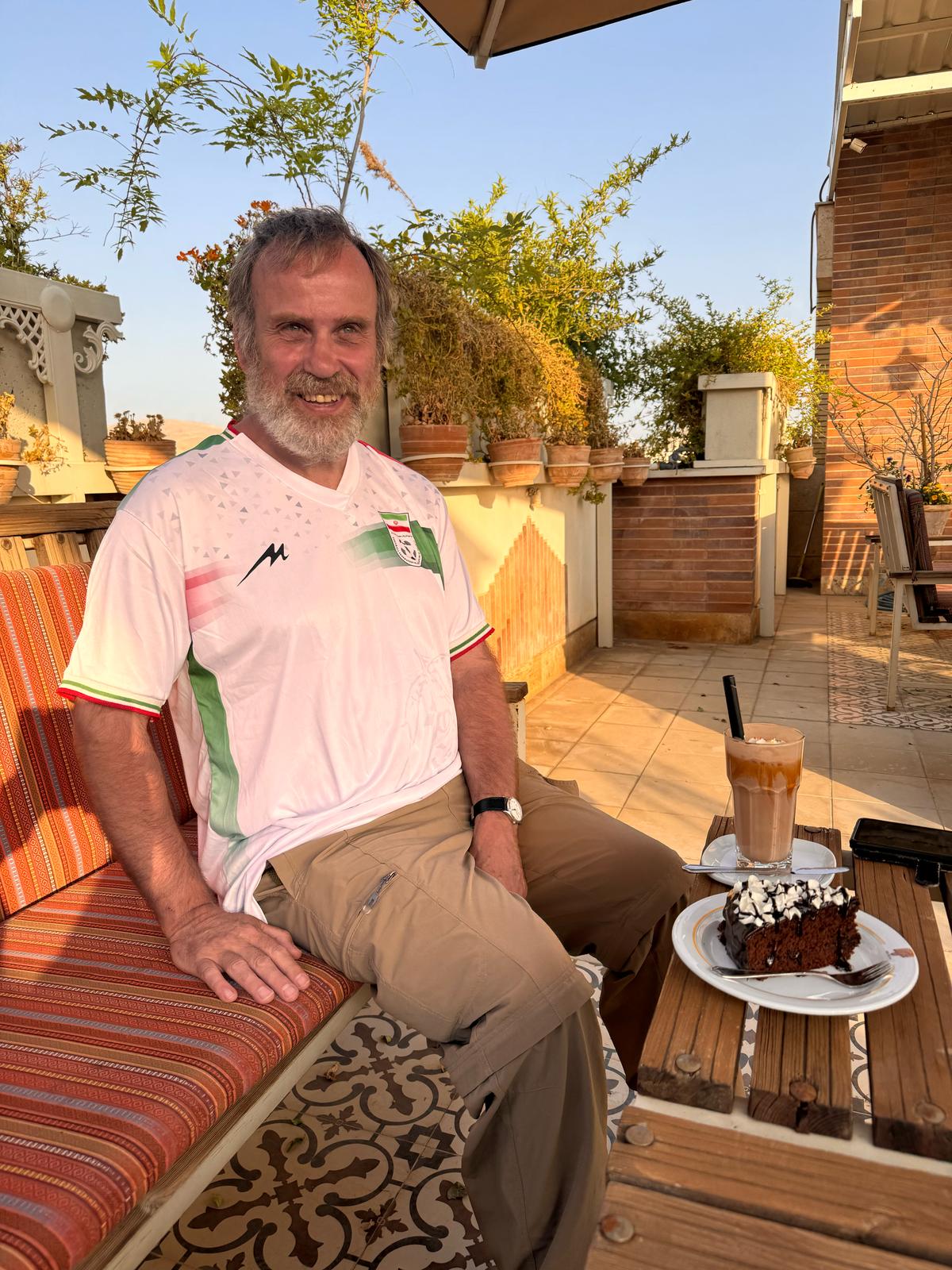
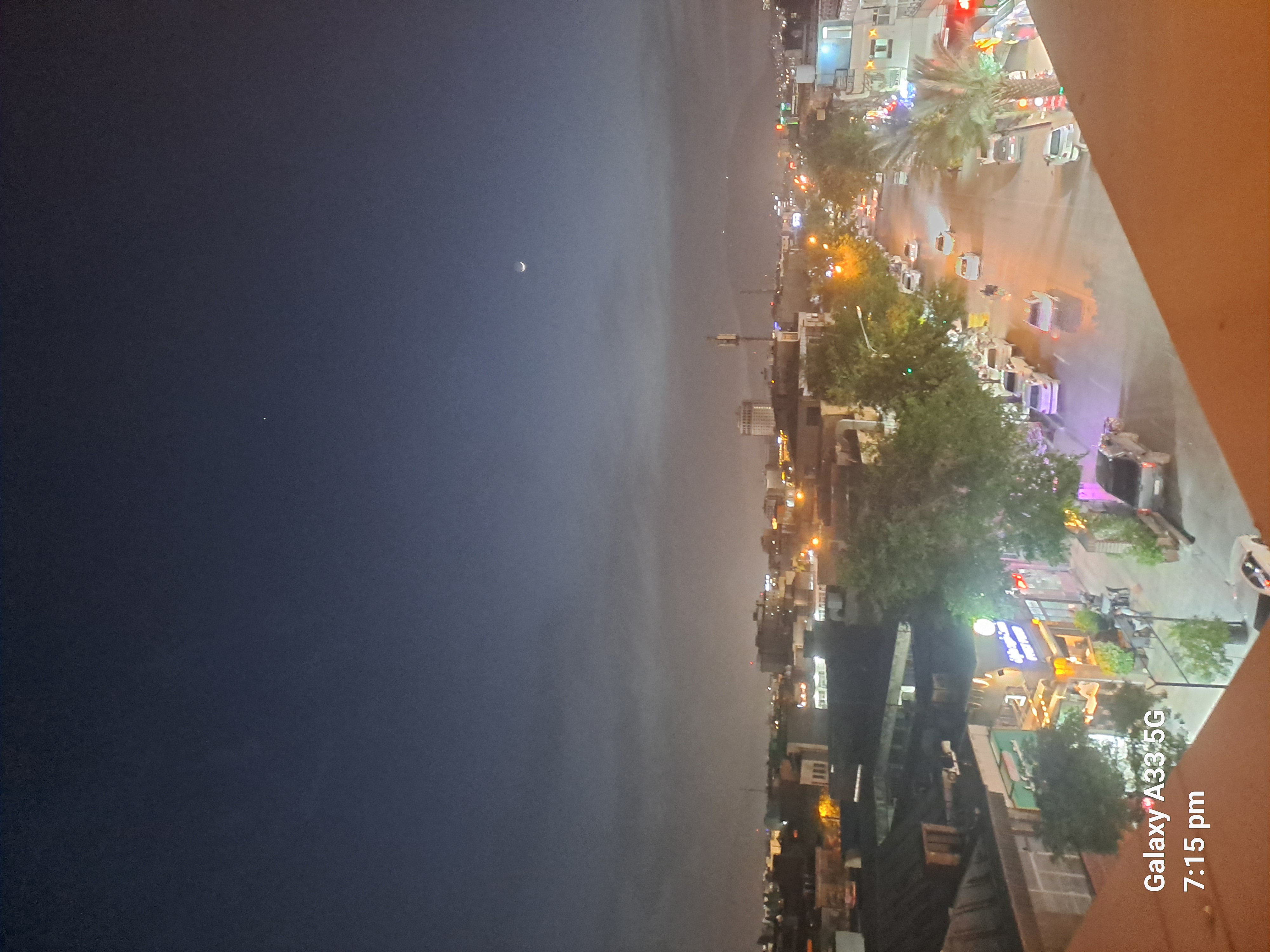

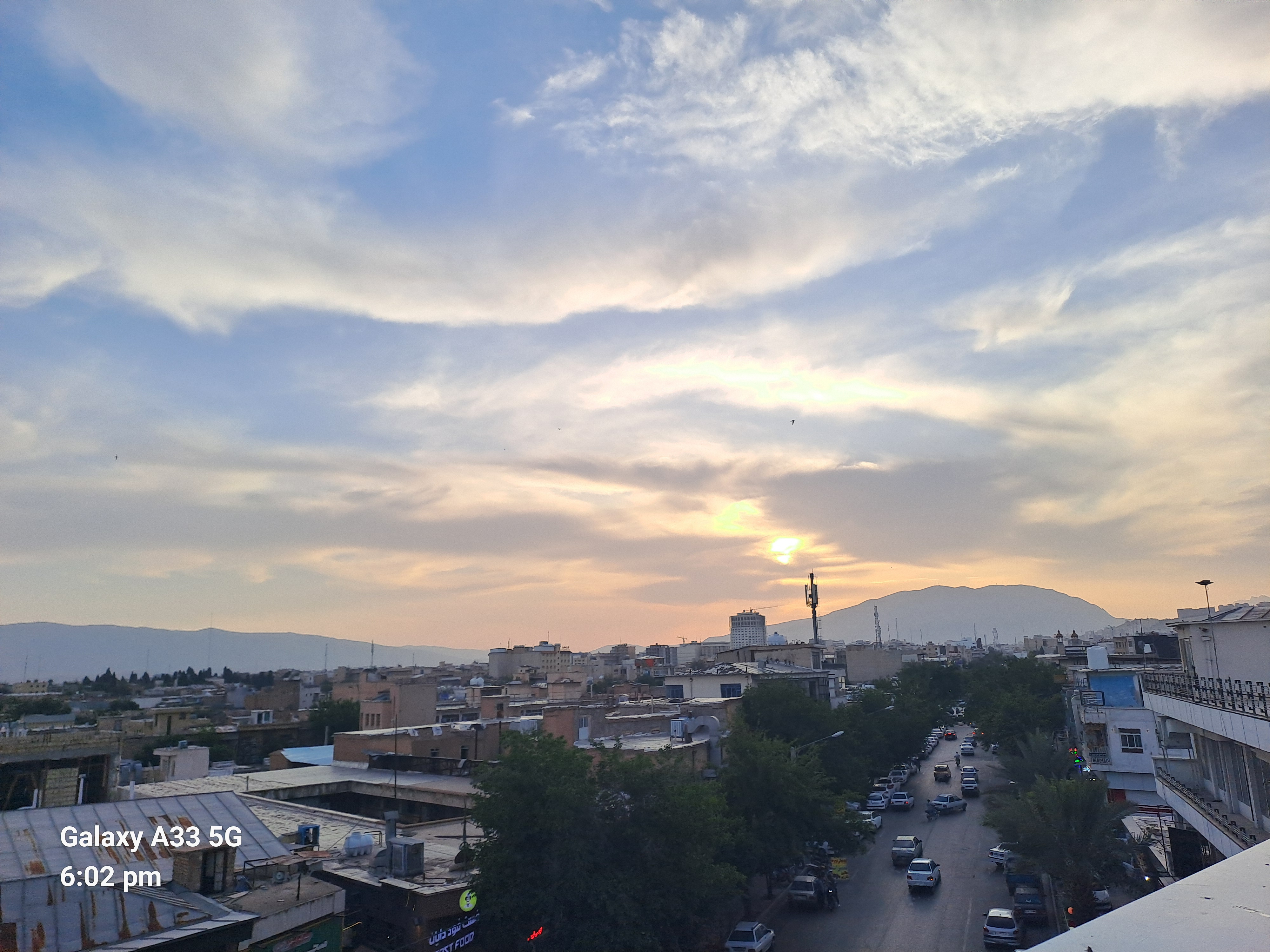
This area is stricter about dress in its mosques so us poor women had to add another layer and don a bedsheet (chador), just like dressing up as a child. It doesn’t get any easier as you get older. It kept slipping of and getting under foot. I couldn’t wait to get it off. Slipping it off in anticipation of returning it earned me a tap on the shoulder and a reminder 😒
This mosque was the rose mosque because of the pinks. The main attraction seemed to be getting a photo with the stained glass reflections. Another note that the population are not very observant.
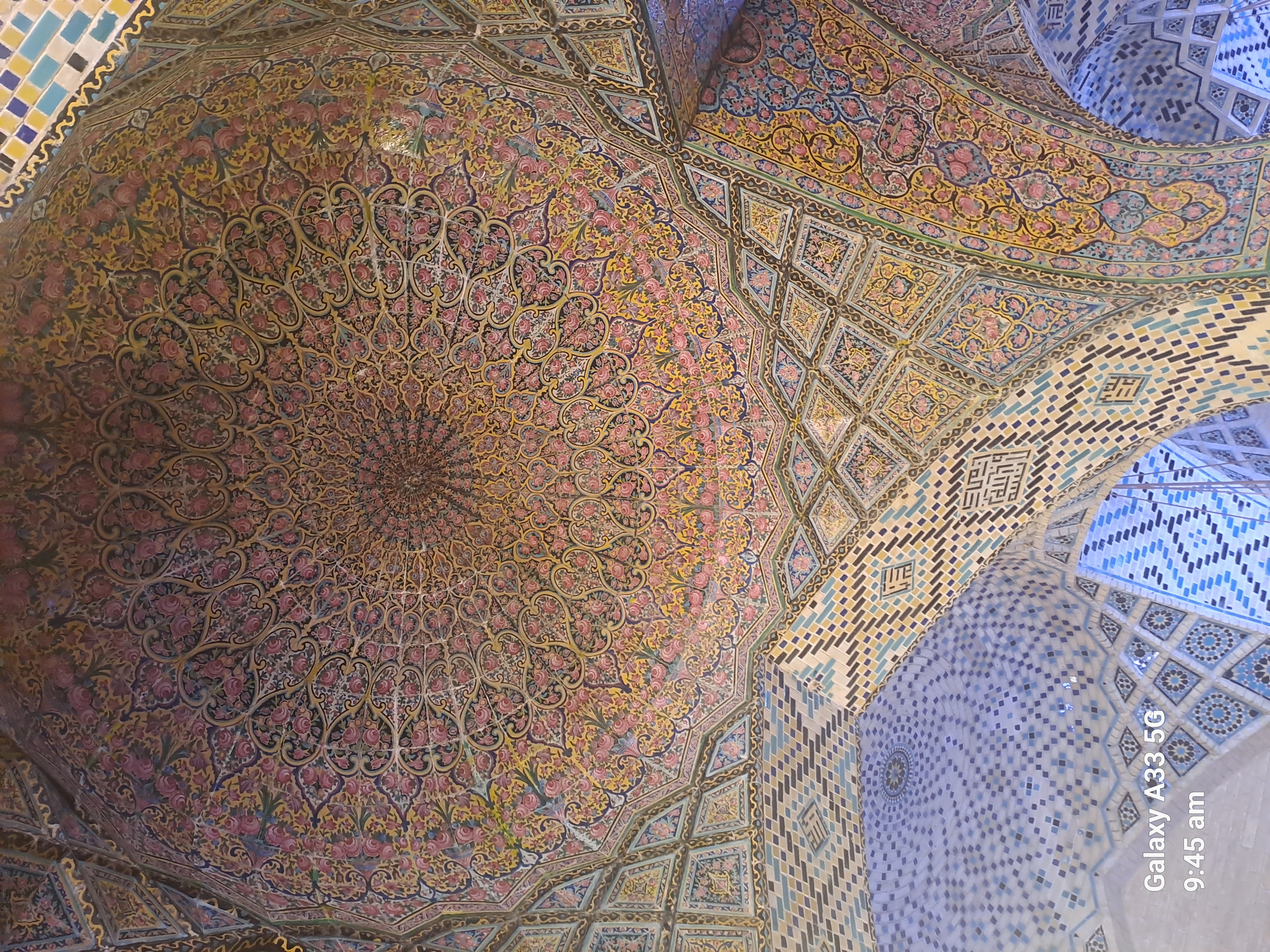
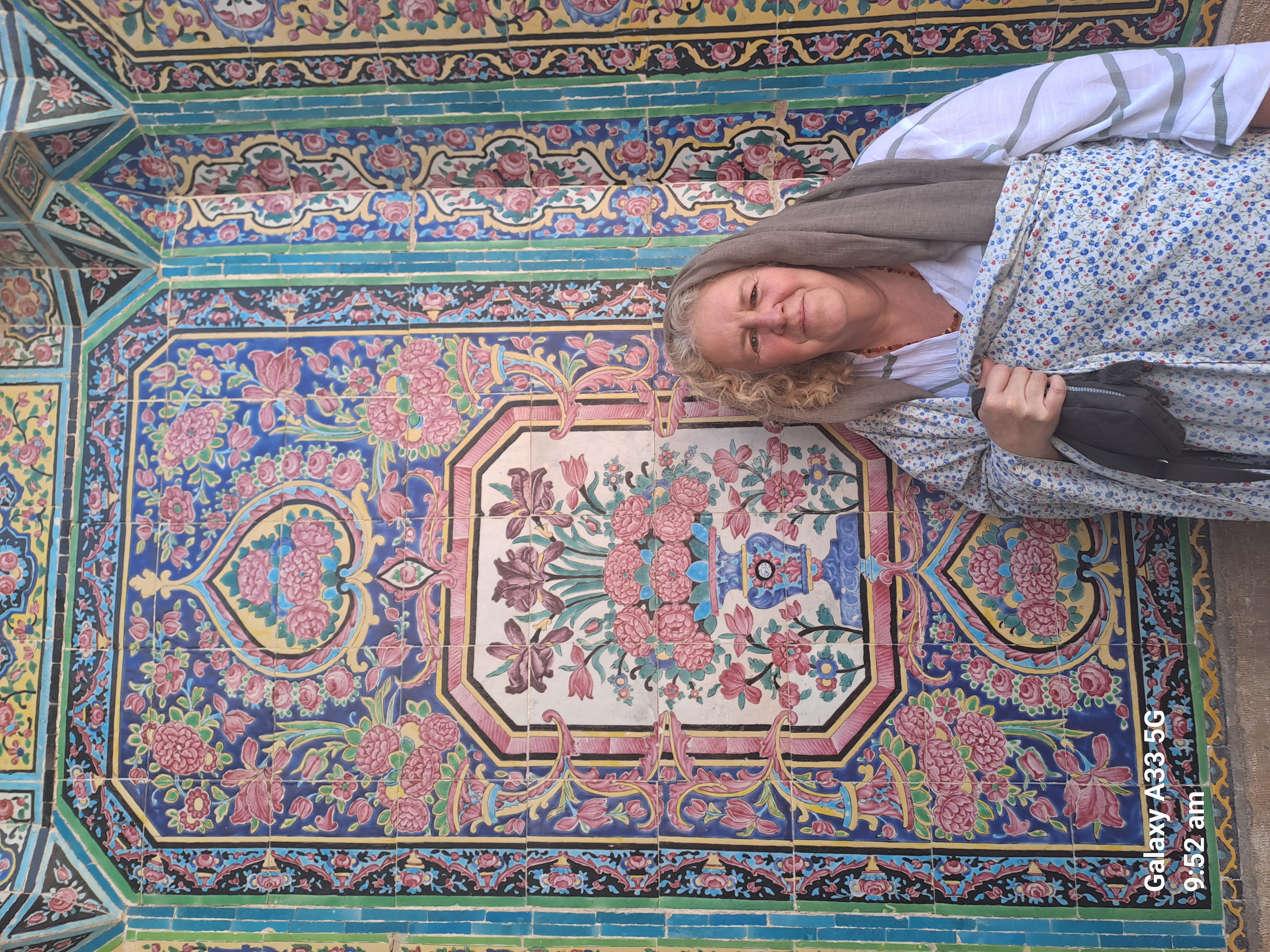
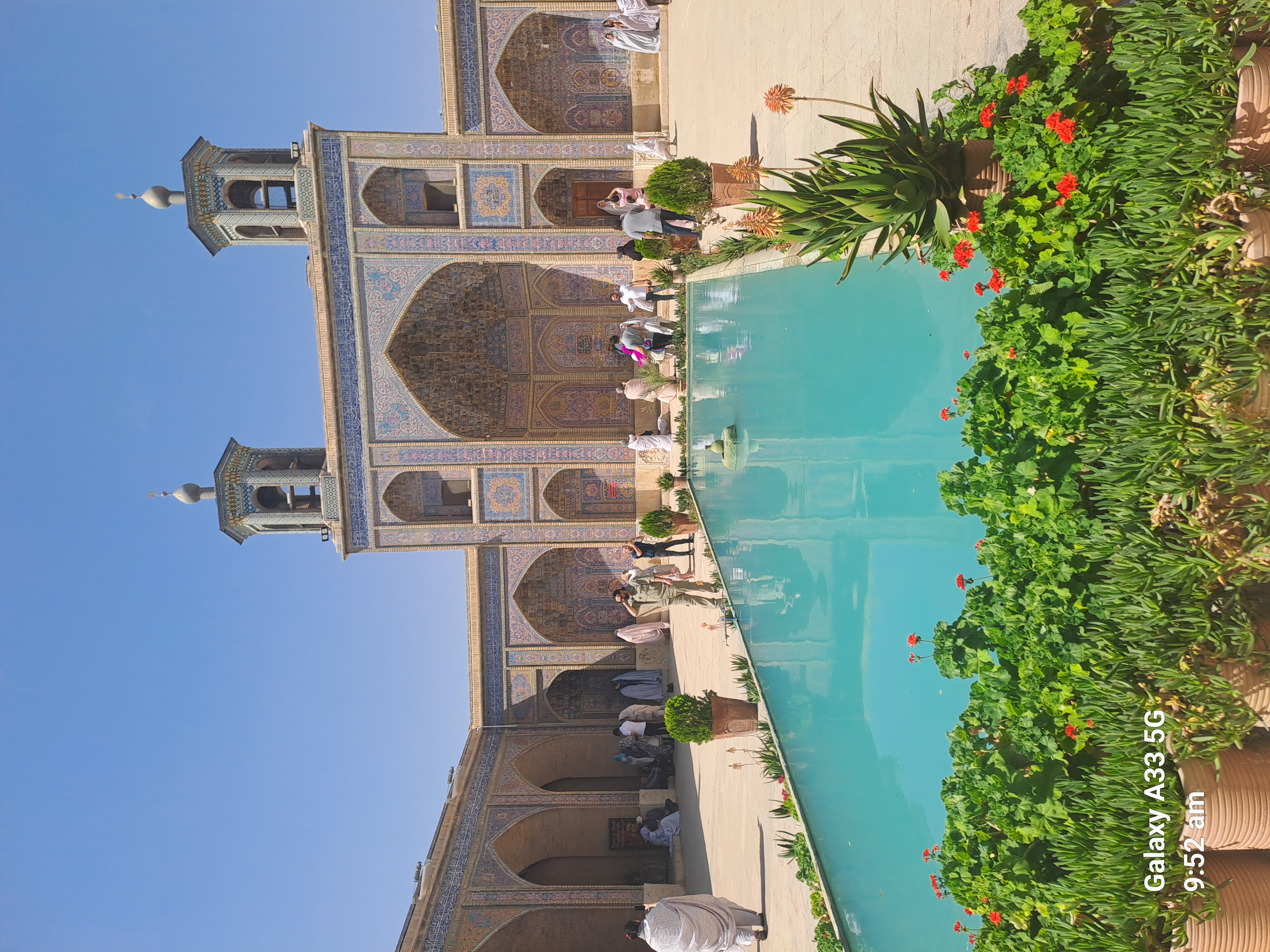
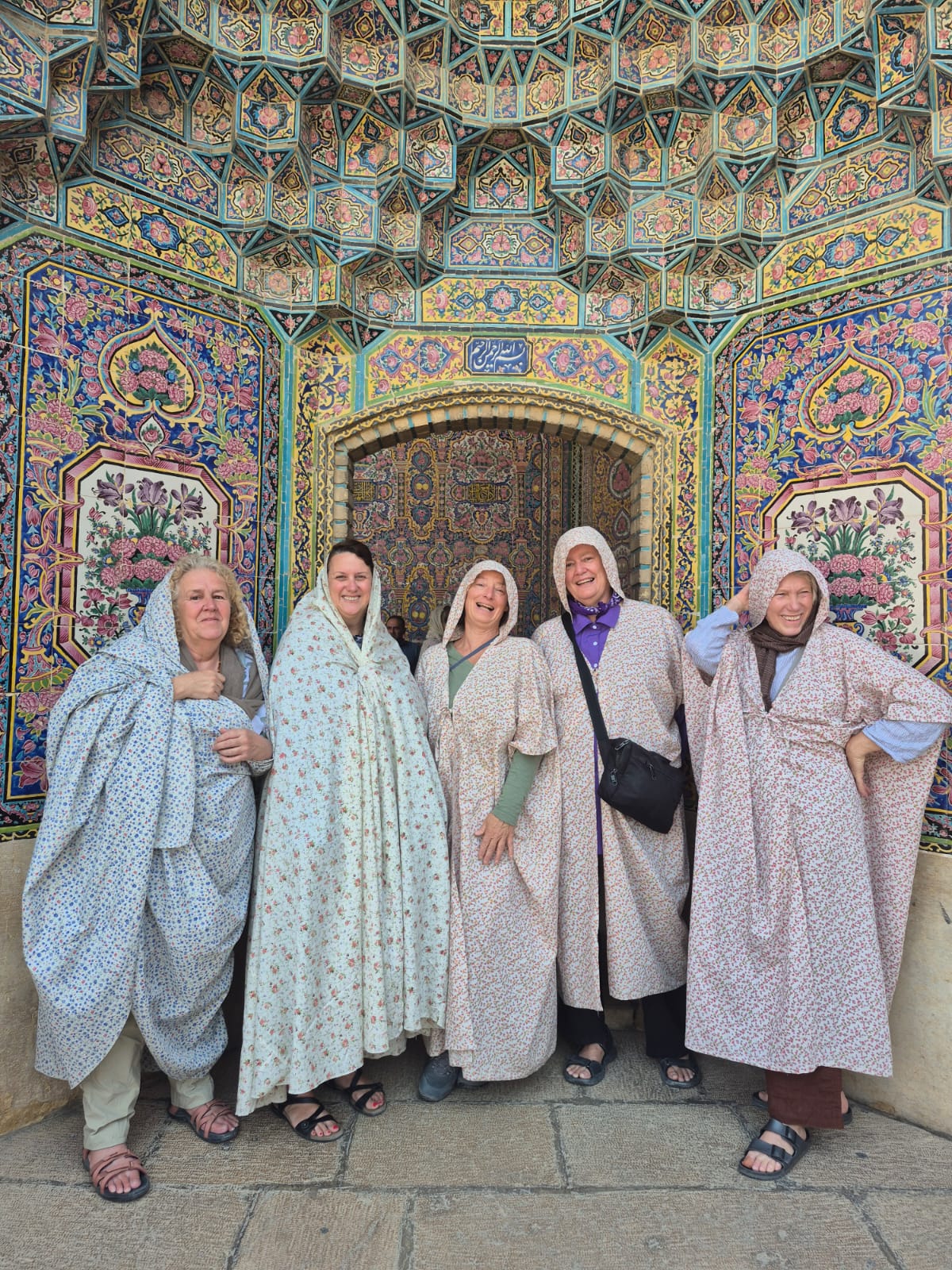
hjj

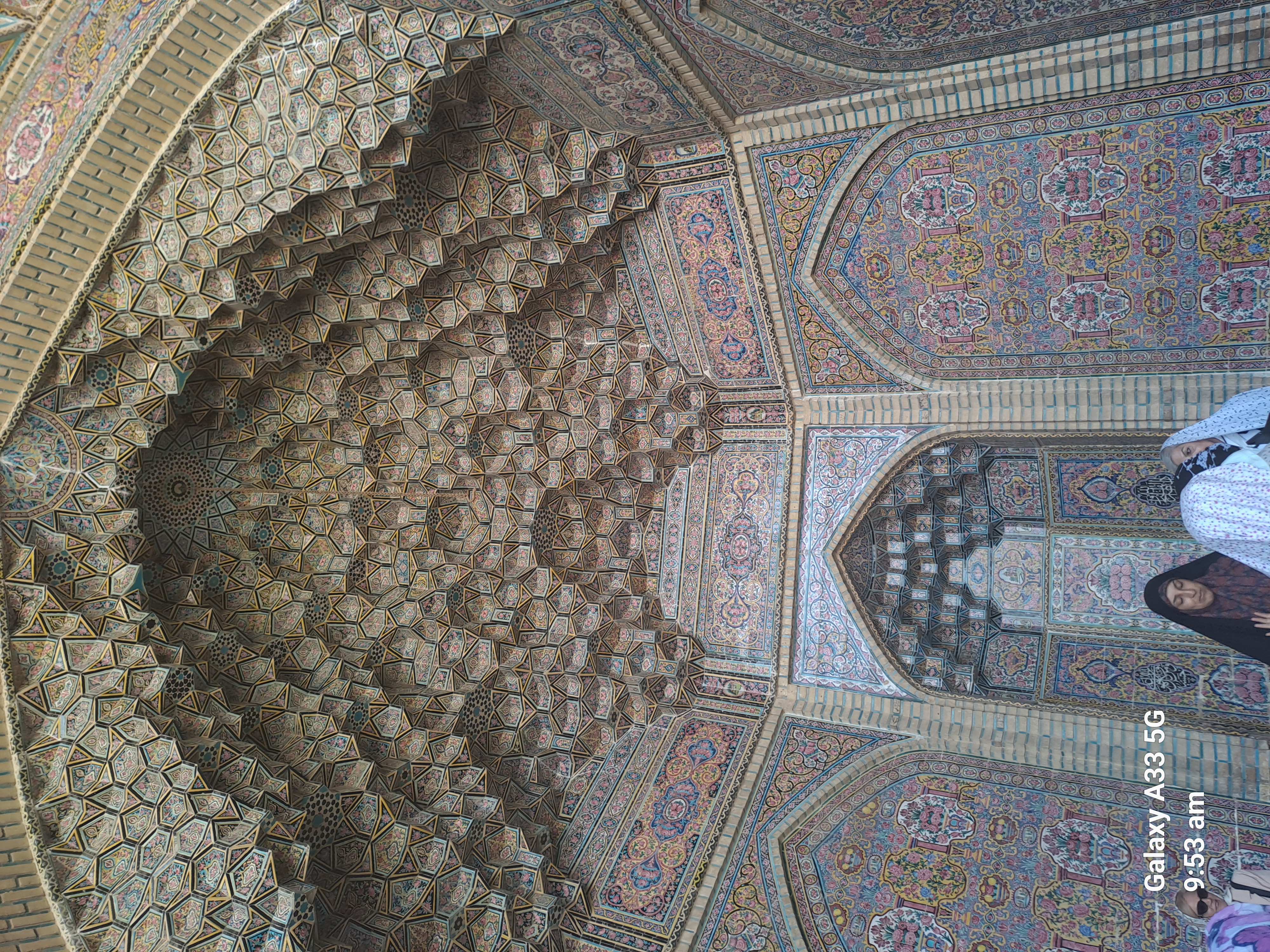
We then went to see the tomb of the poet Hafez
As our guide quoted from him we noticed other people mouthing along with her as the quotes are so well known. He is very popular and wrote about love. She when she translated to English we noticed references to wine. The current official meaning is that this refers to God rather than actual wine 😁 However unofficially…
People go to his tomb and knock and quote the first surah of the Koran.
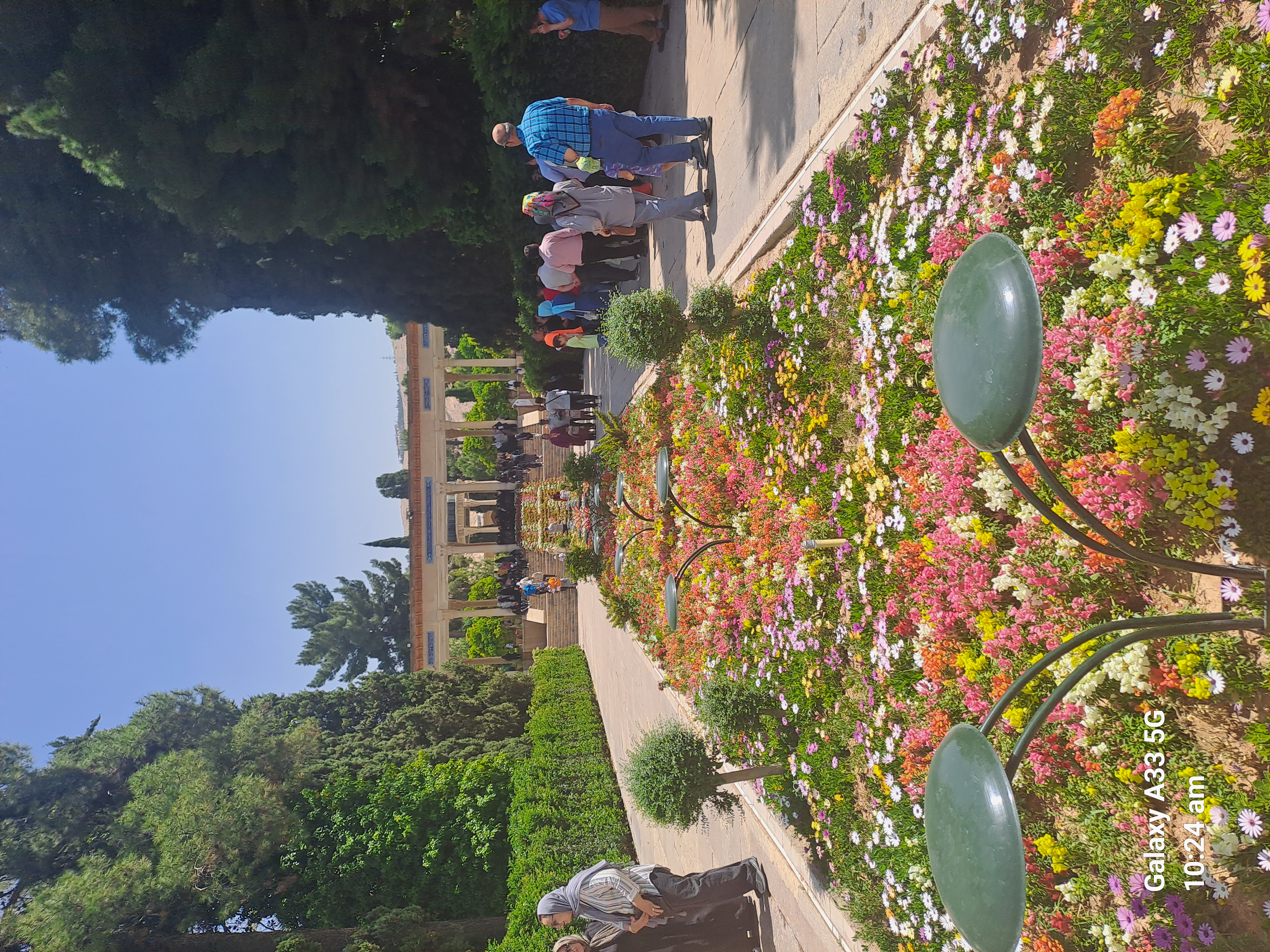
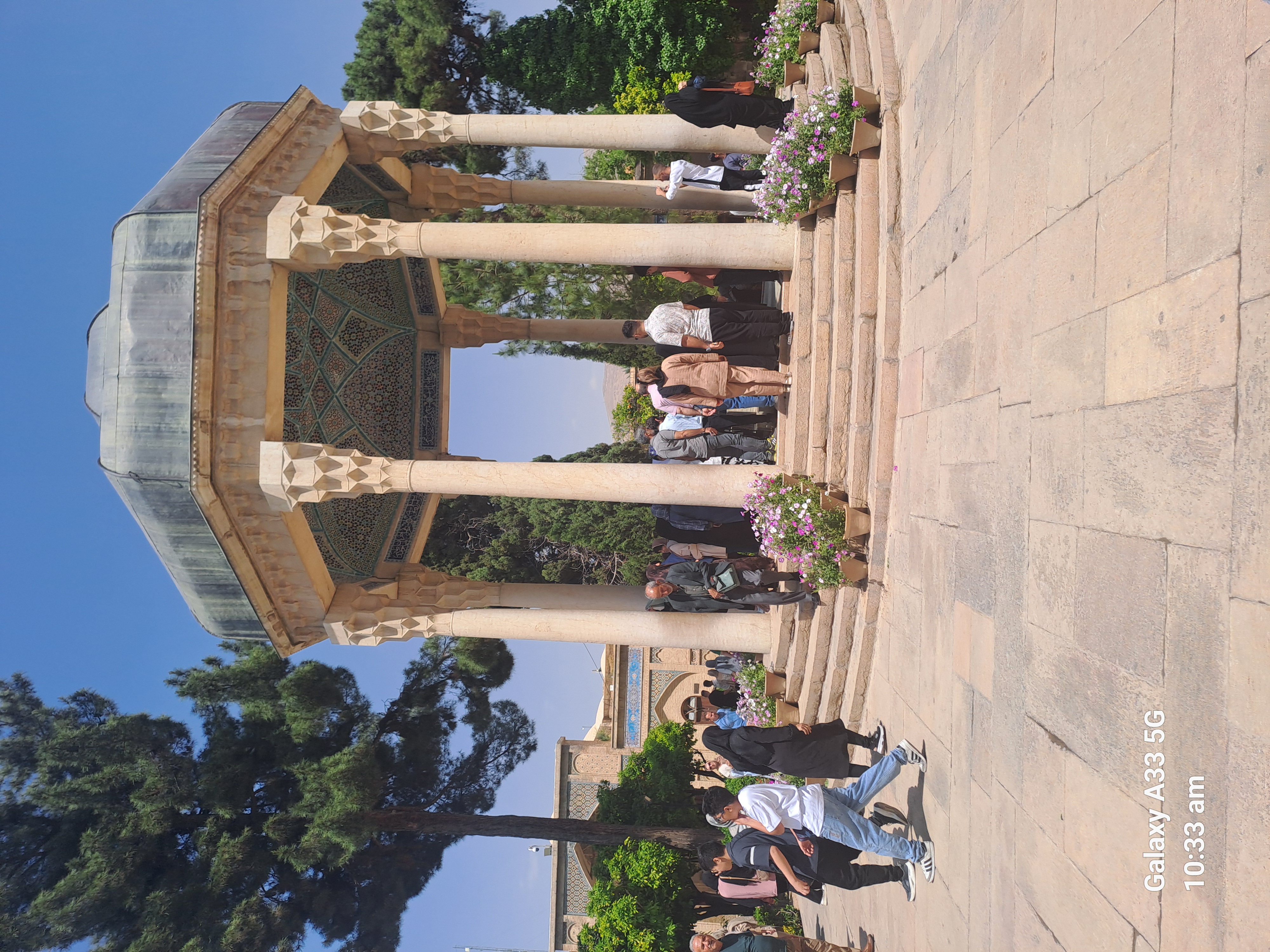
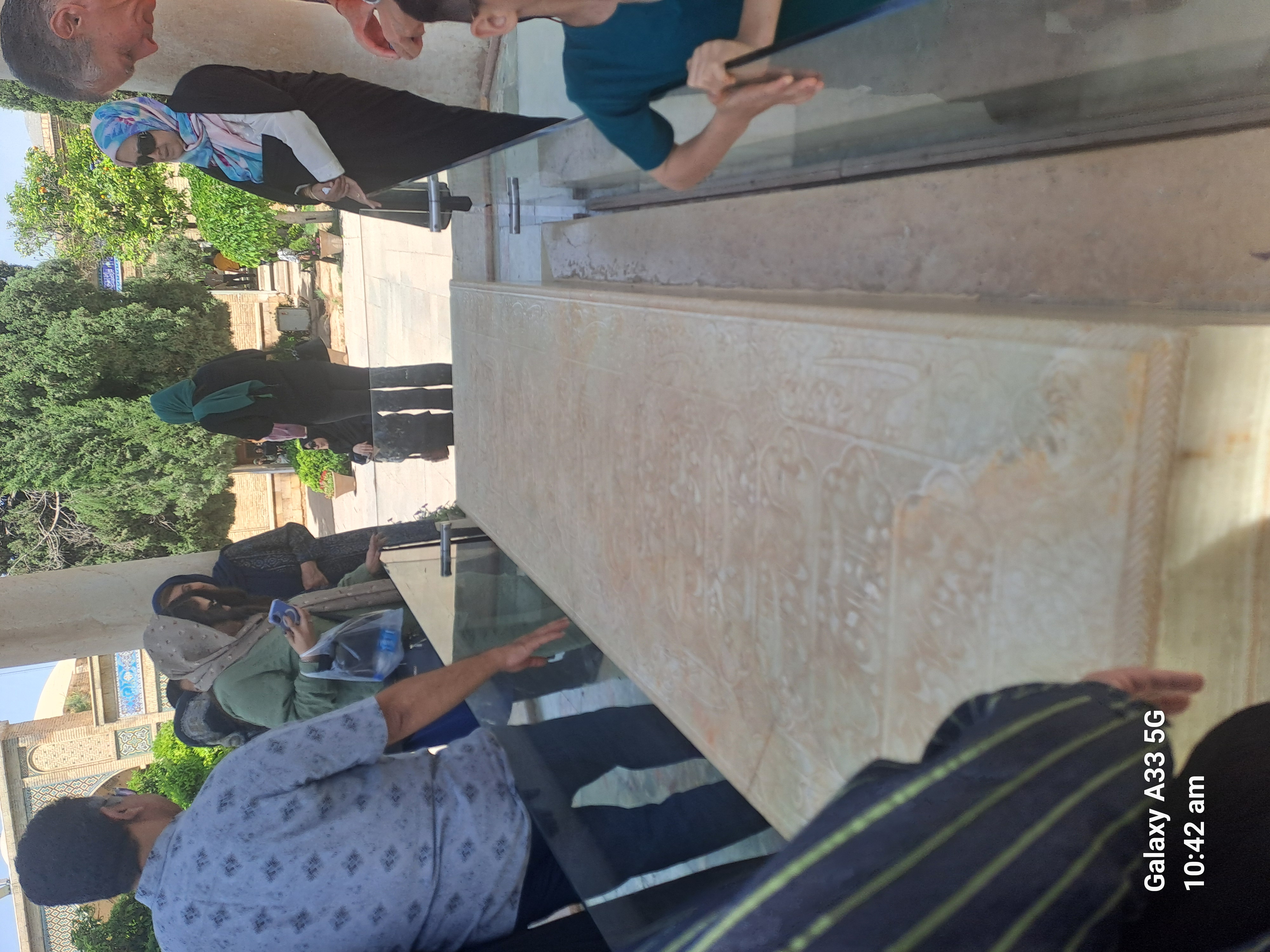
We has a flying visit to the gardens again these are set out with water features and shade. They also had a lovely cafe with water spraying lightly to cool the air down. I’ve tried to capture the gardens against the mountains in the background.
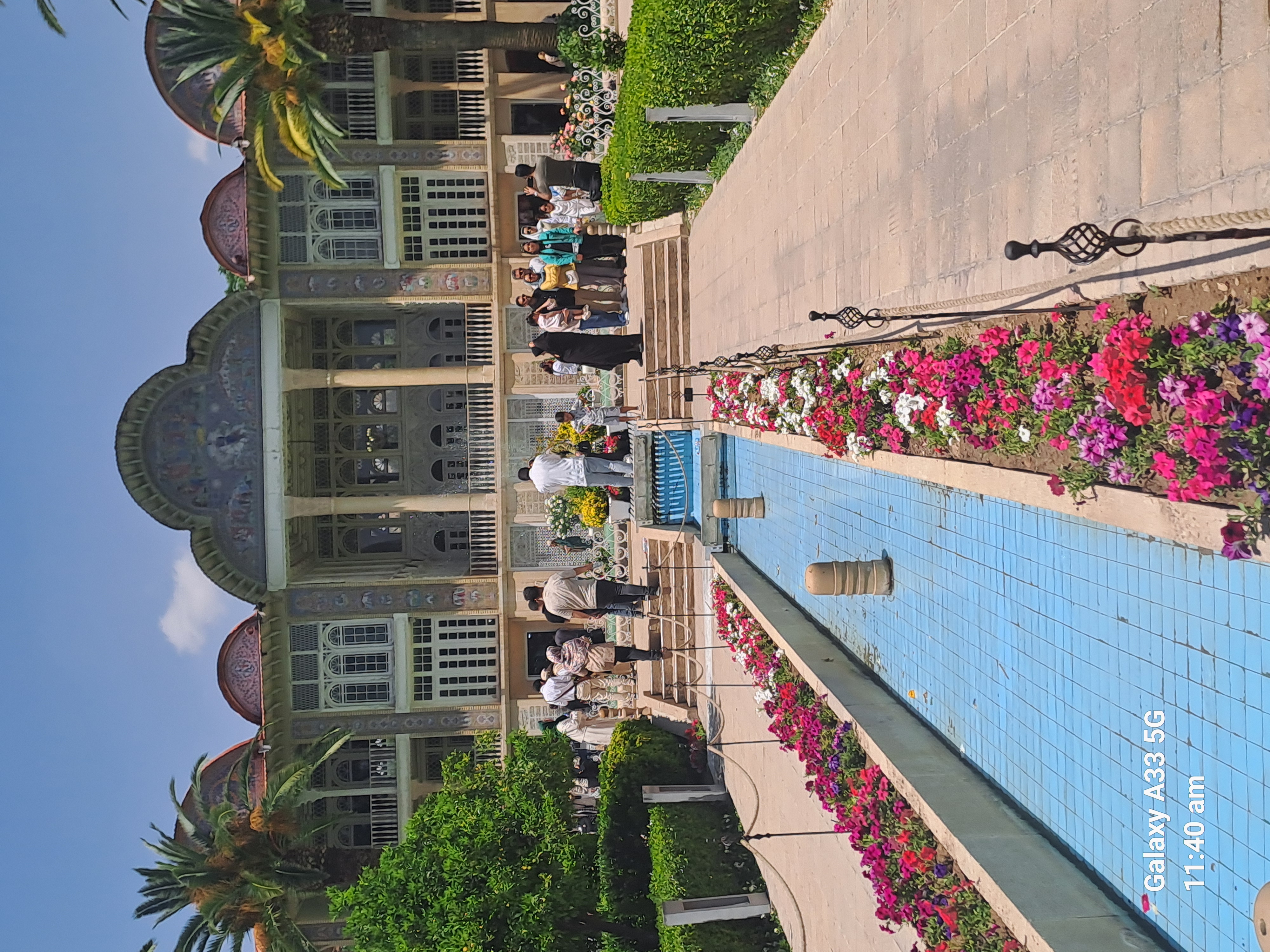
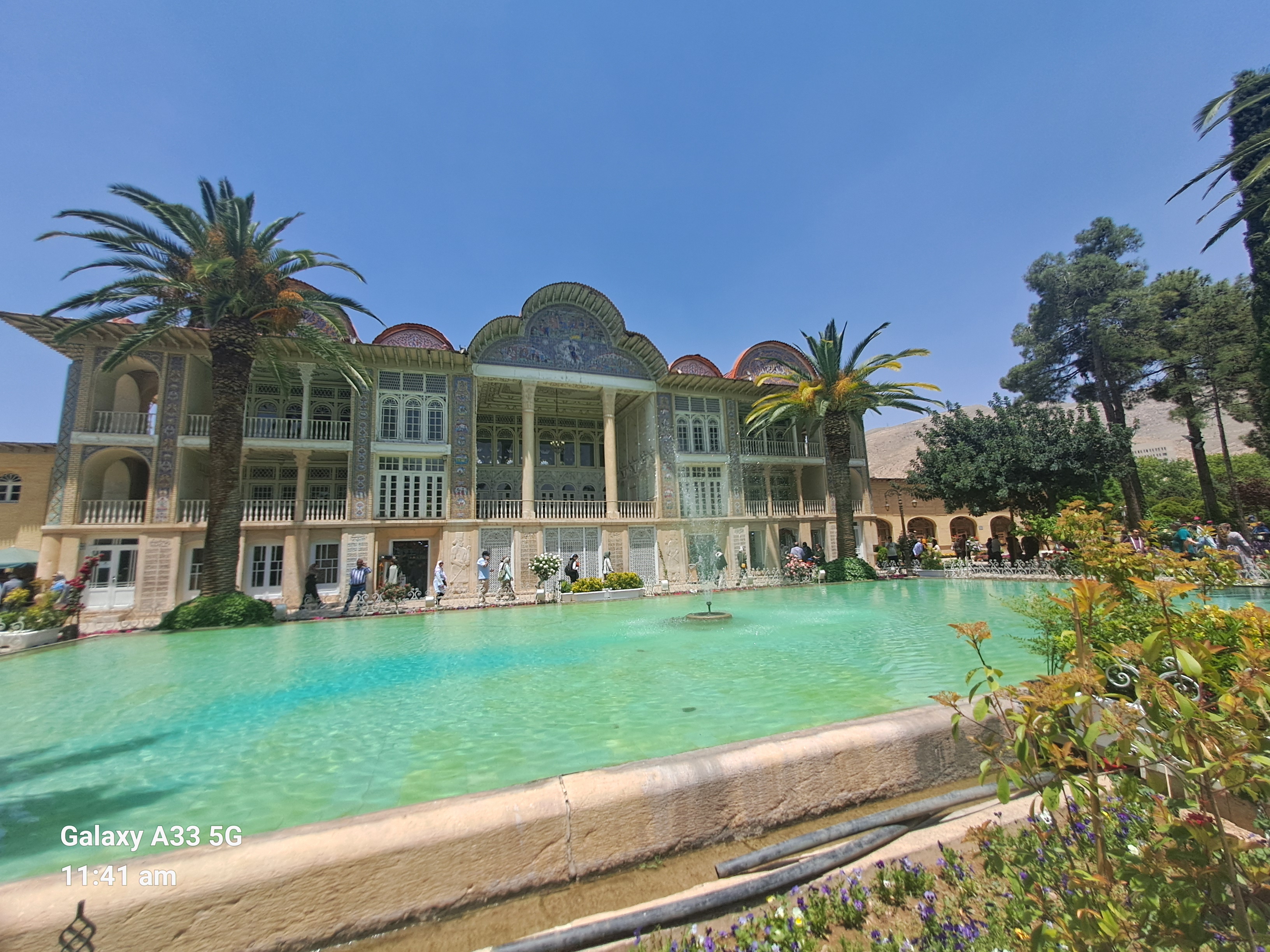
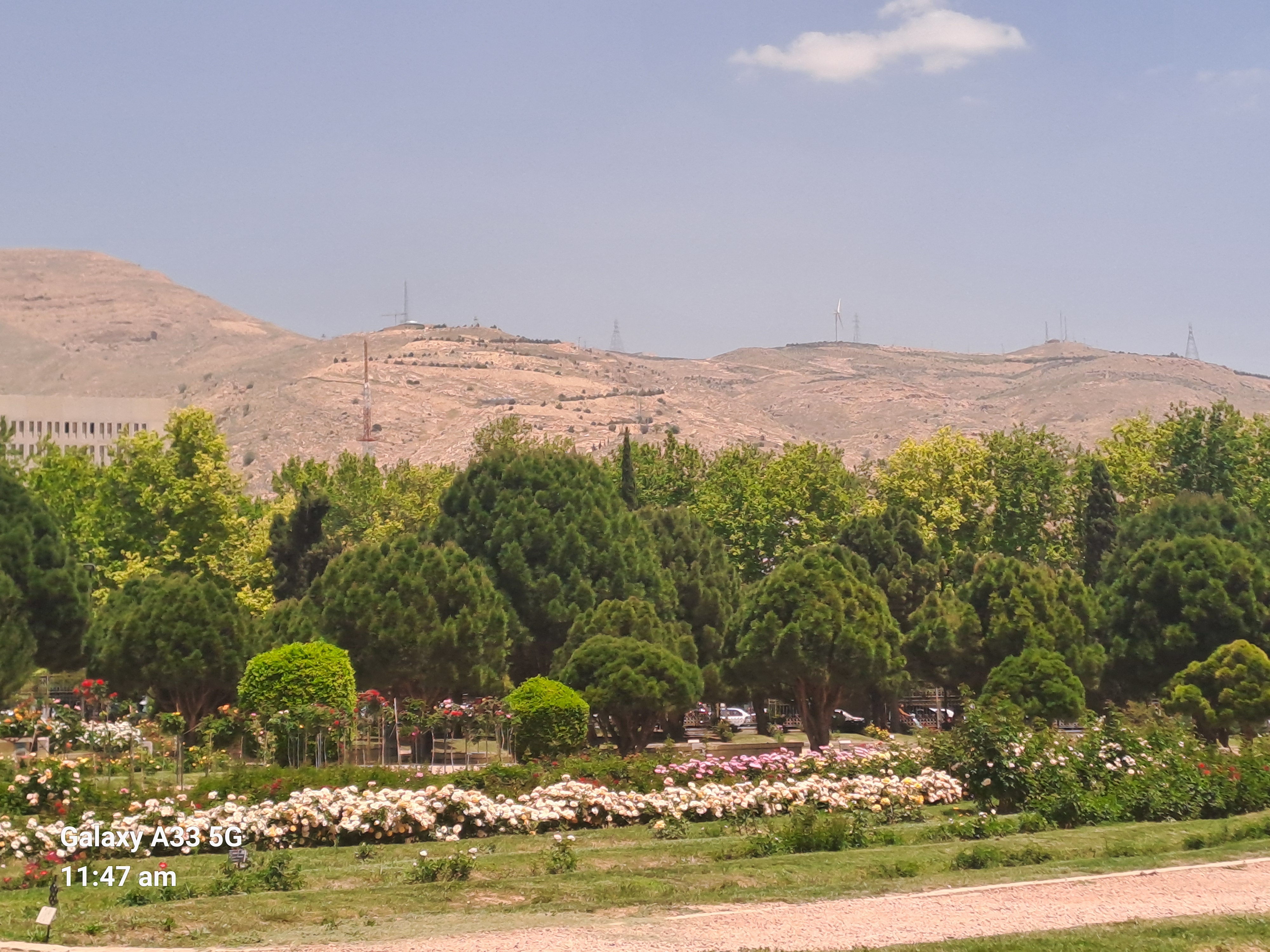

The night time was beautiful. All lit up and a party like atmosphere . There were many musicians playing on the street and sitting outside to eat felt magical.

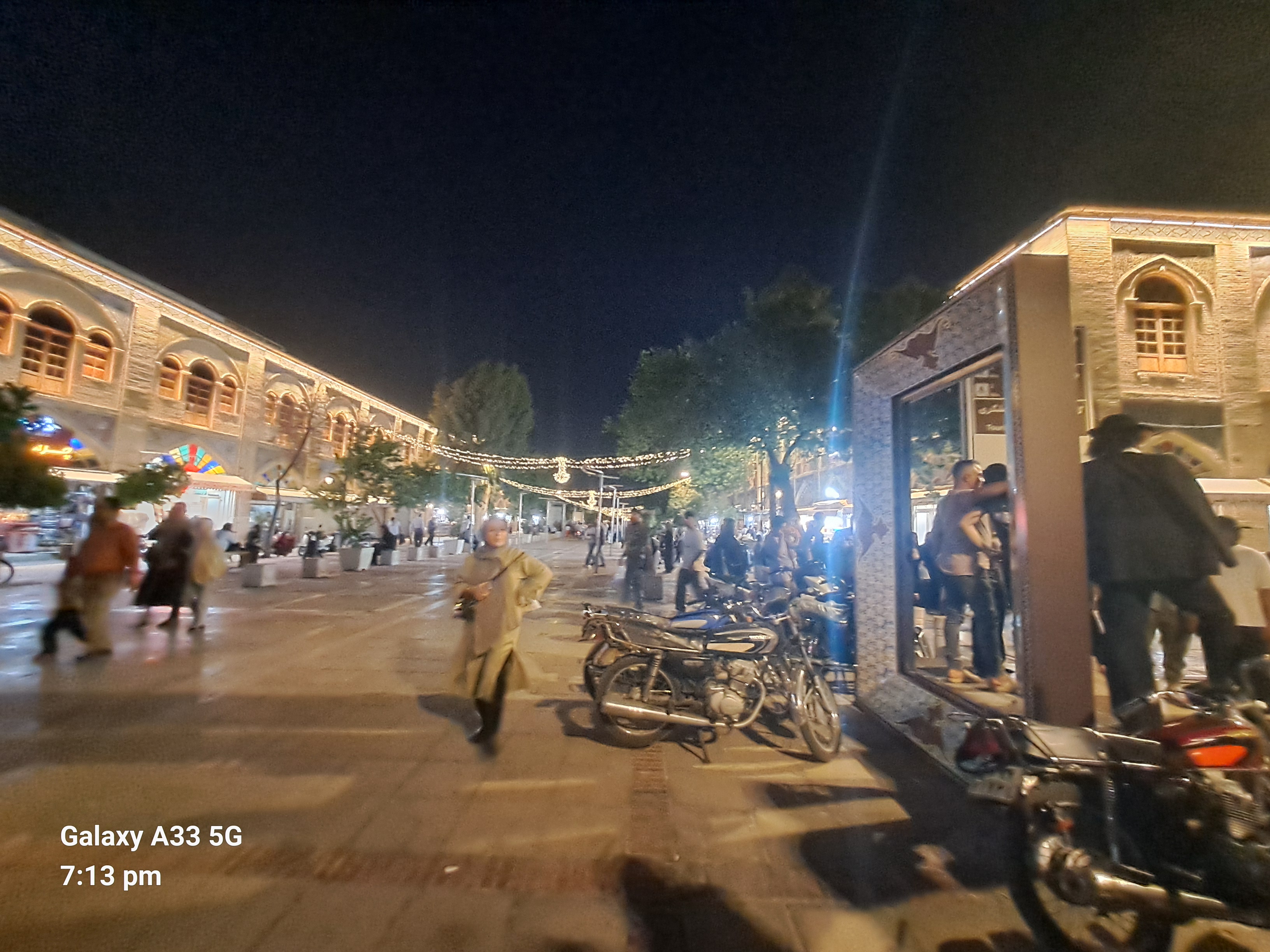
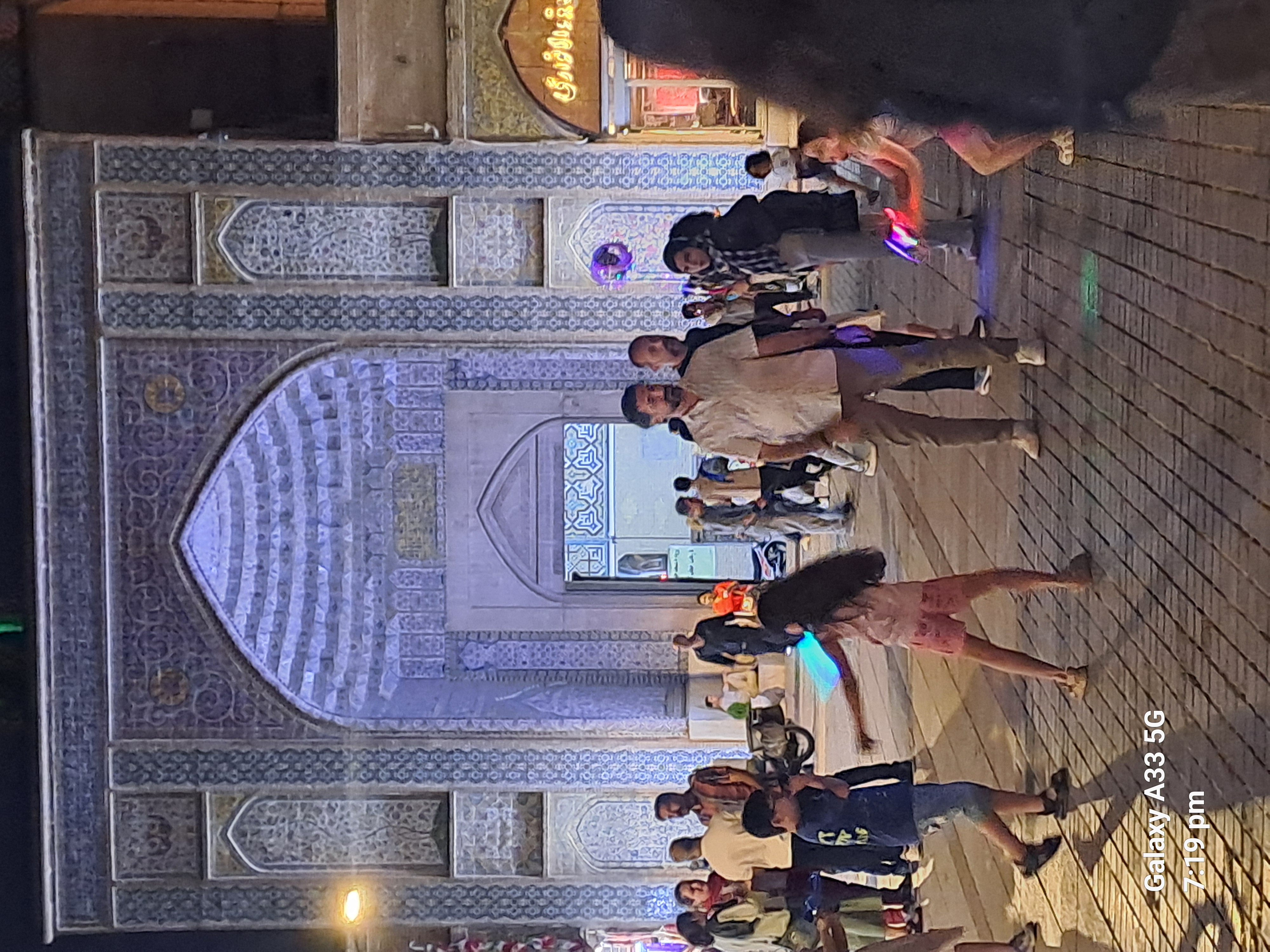
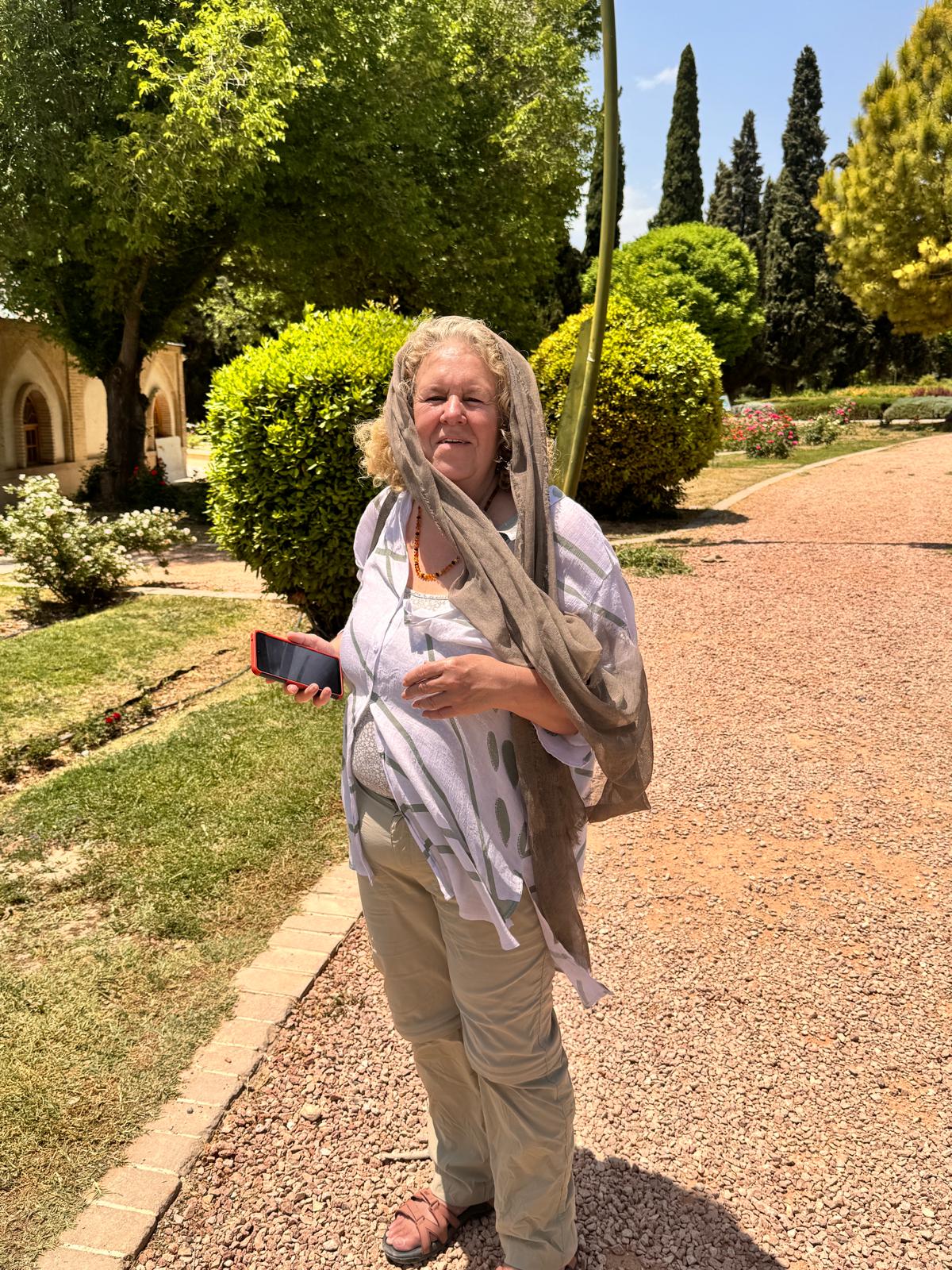
Ever moving onwards and into the desert we came to Yazd. A town of mud buildings and narrow covered alleyways in the old part. Aqueduct run under the town
We had an evening drink and saw the sunset from one of these buildings.
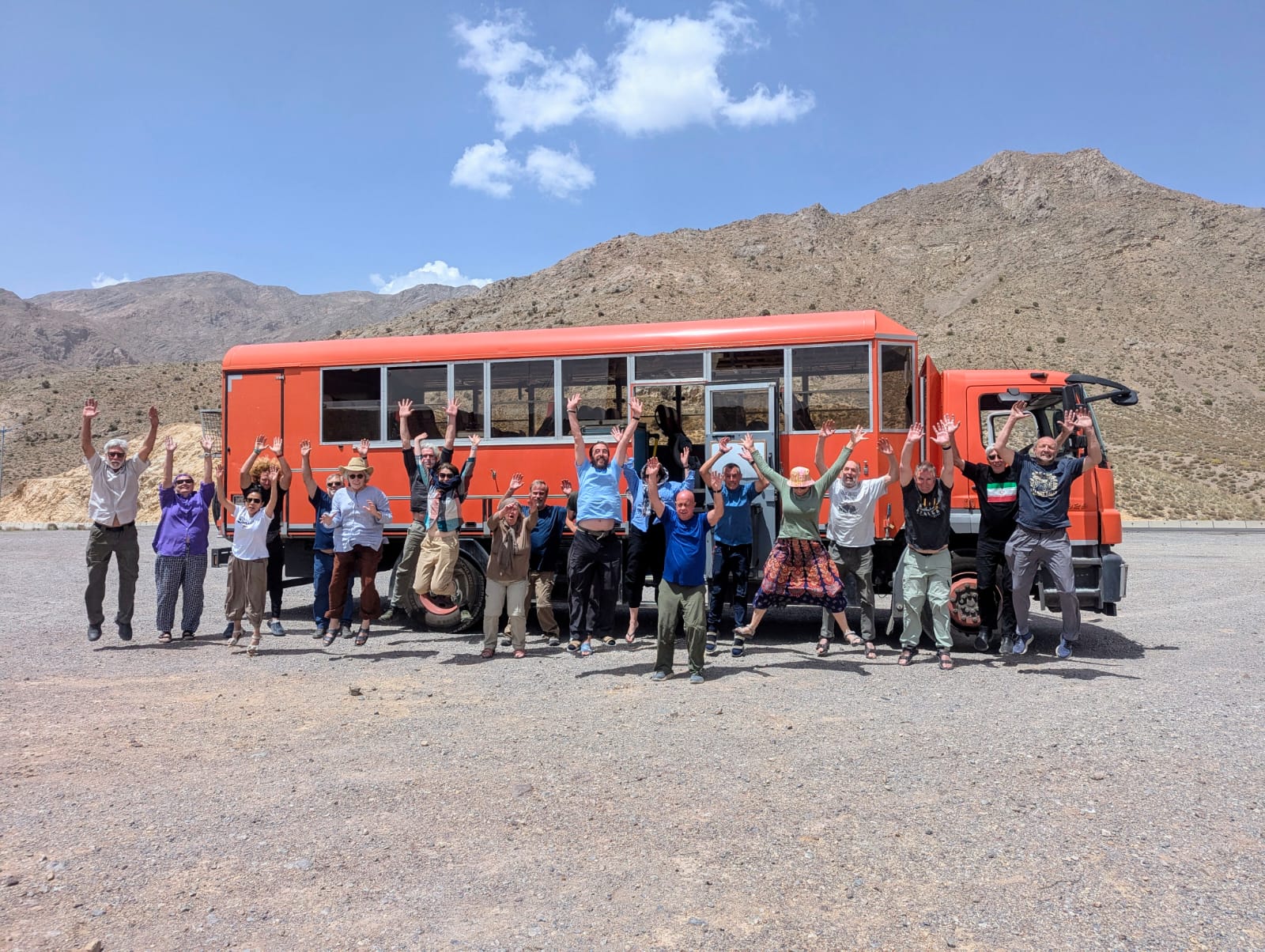
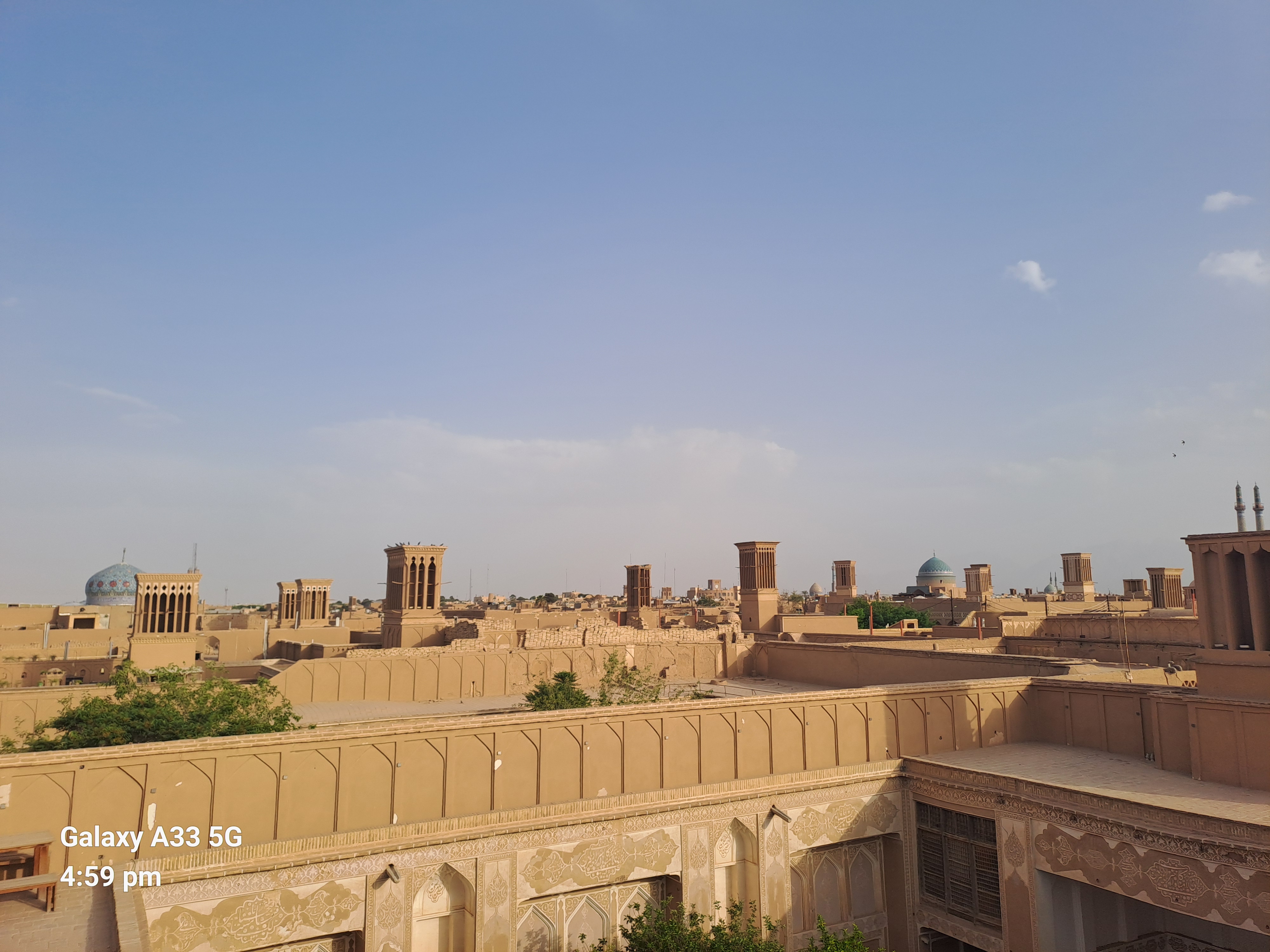
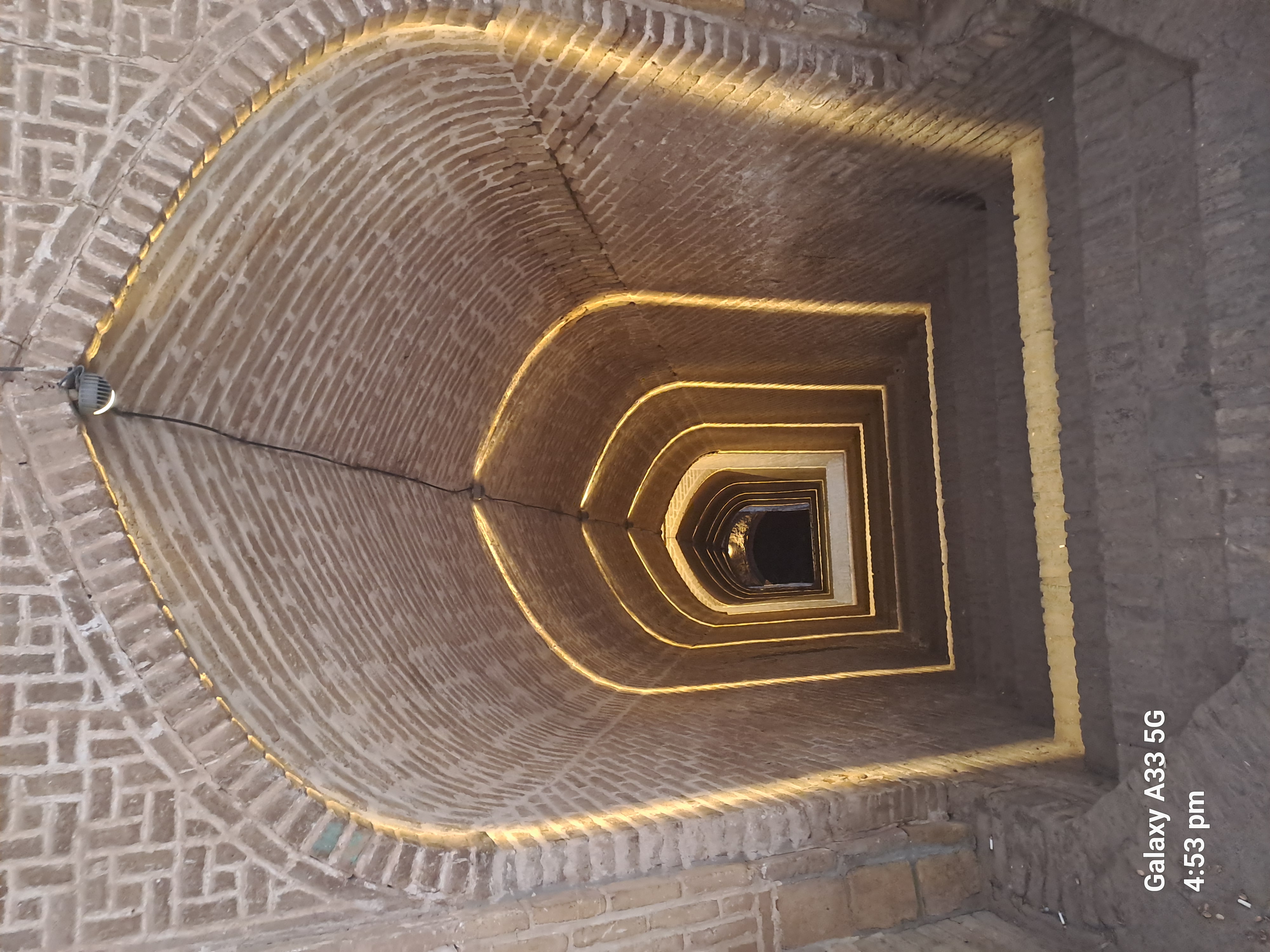
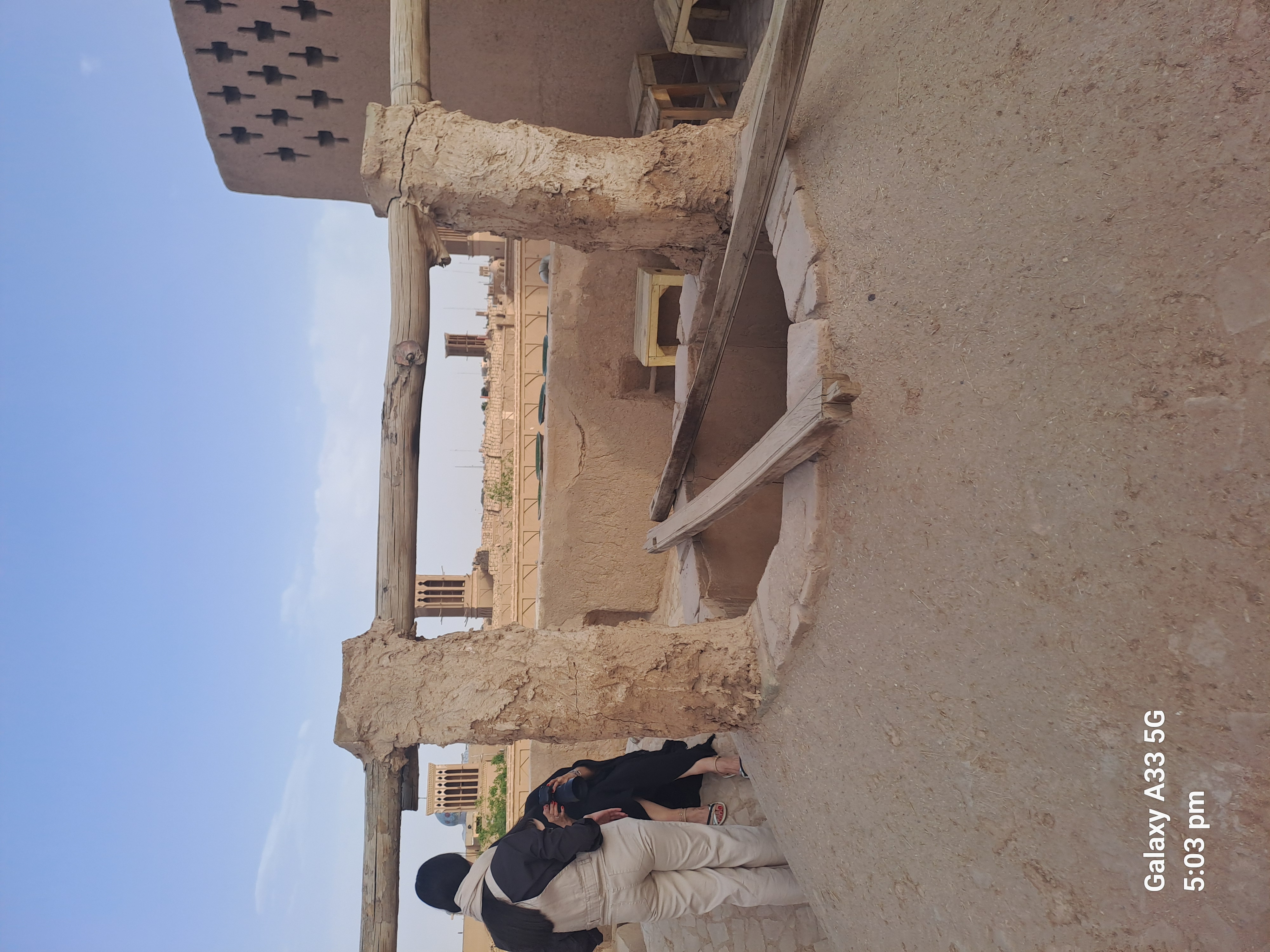
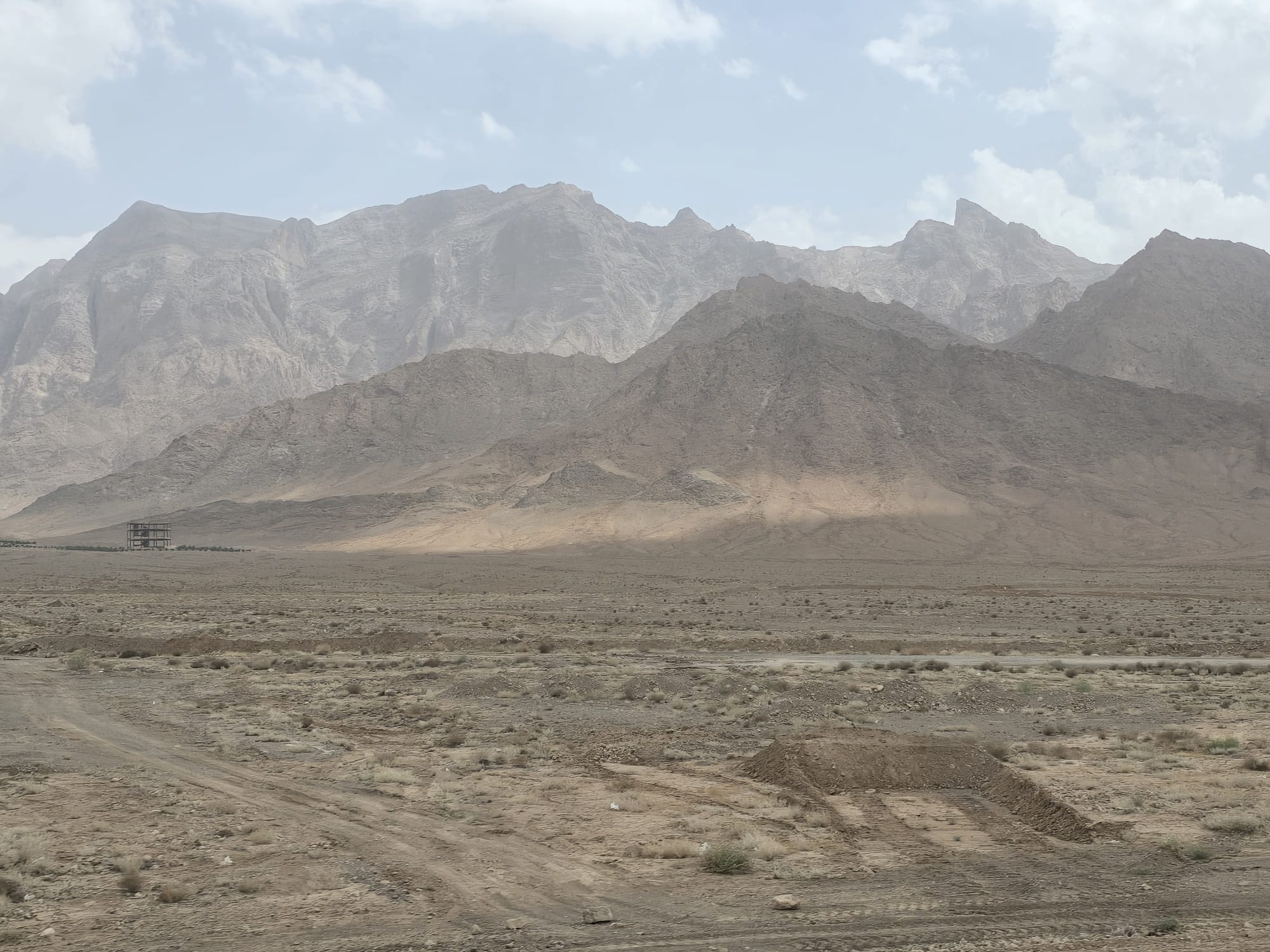
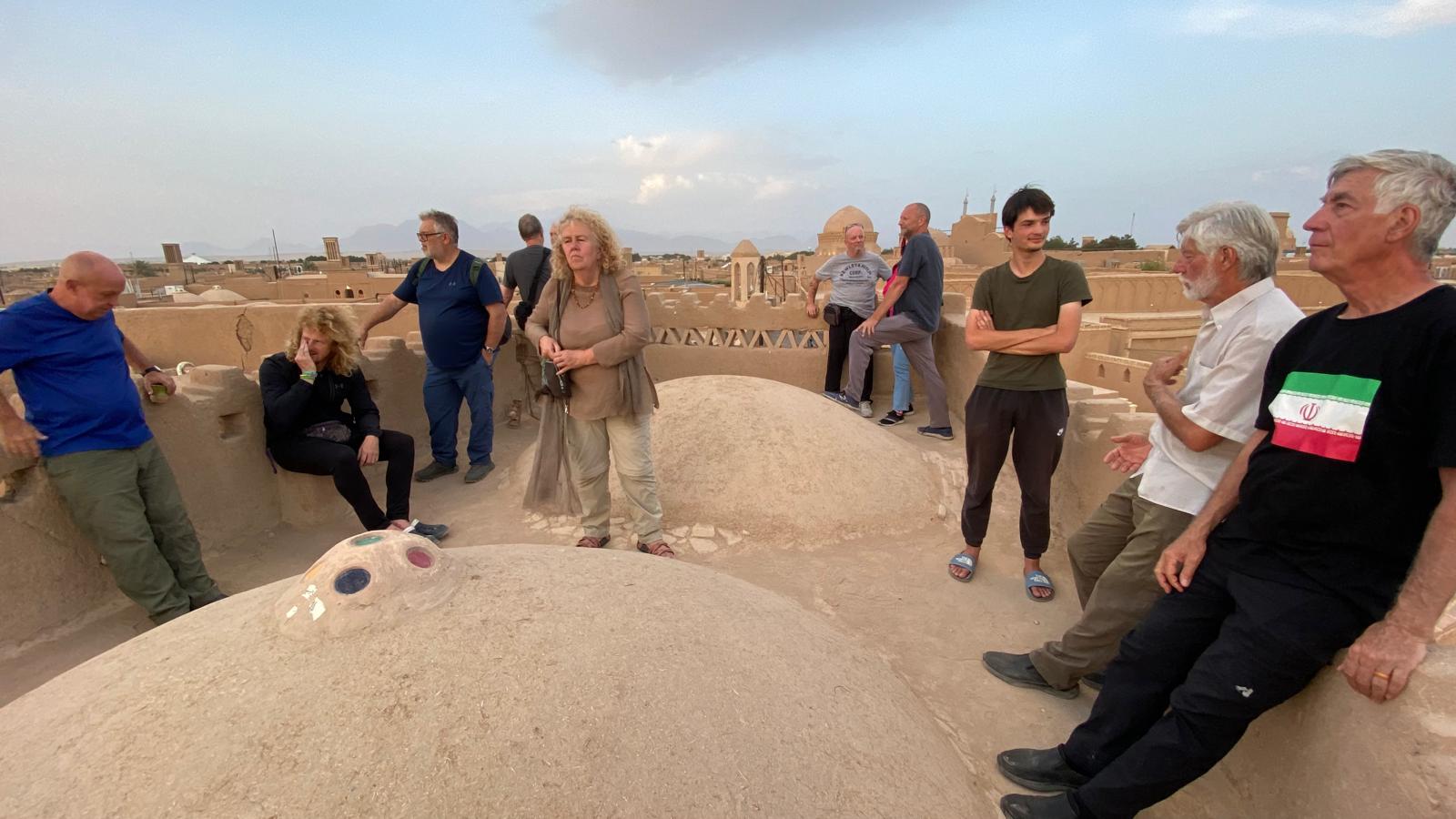
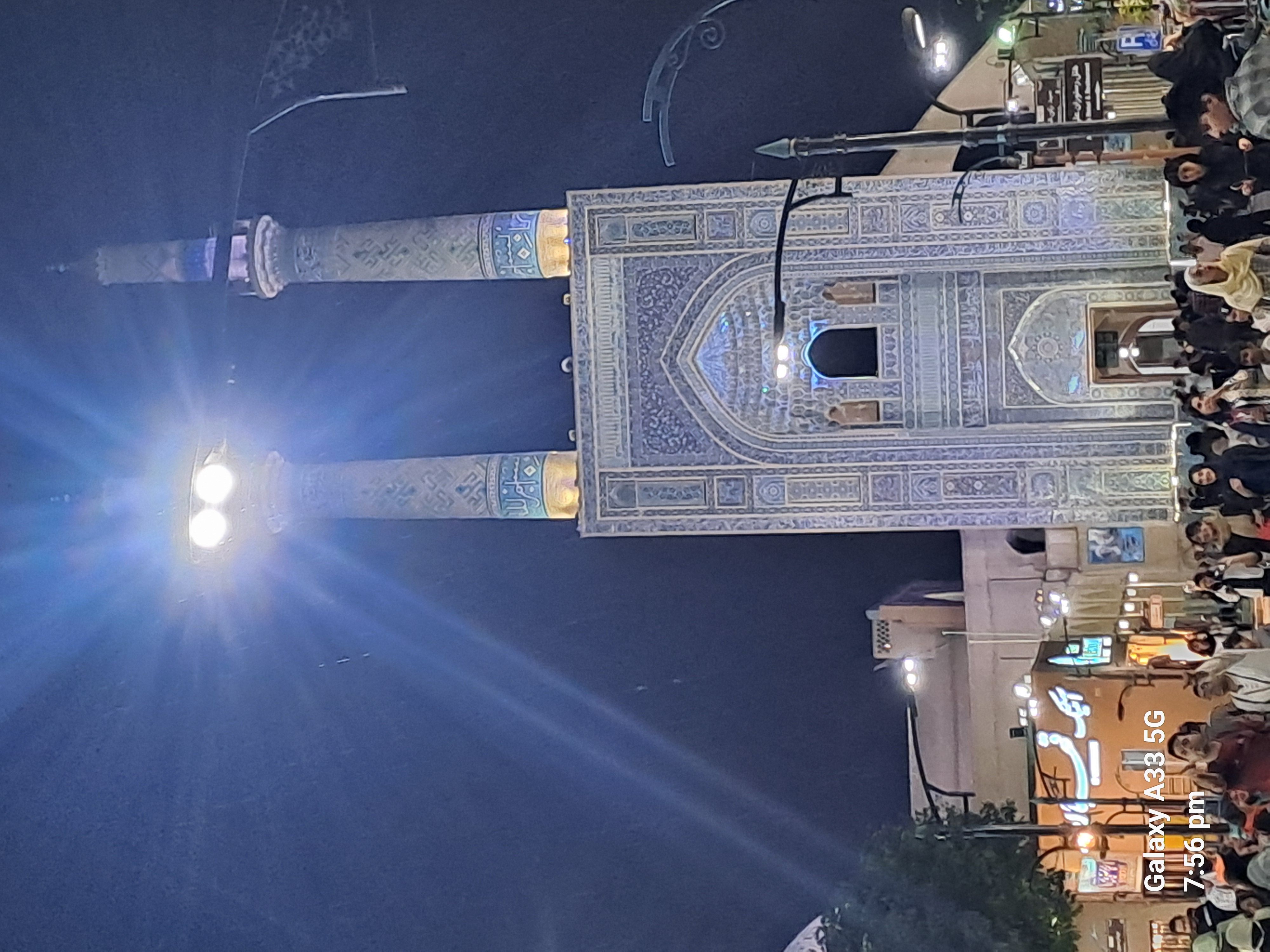
Here we went to see the silent tower. In Zorostrian tradition the dead have three days for relatives to mourn and are then moved to the silent tower and left there for the vultures to eat before the remains being put in a Place of God. This tower had to be away from the city because of the smell. There was housing there for the relatives when they travelled there due to the distance. The keeper of the site also lived there. Due to their contact with the dead and communicable disease they had to stay there.
Zorostrians aren’t burnt after death as the fire is holy and must stay pure.
When we visited the site was closed due to filming. We behaved badly and got as close as we could and met some actresses arriving for the day who wanted our picture so we got theirs as well

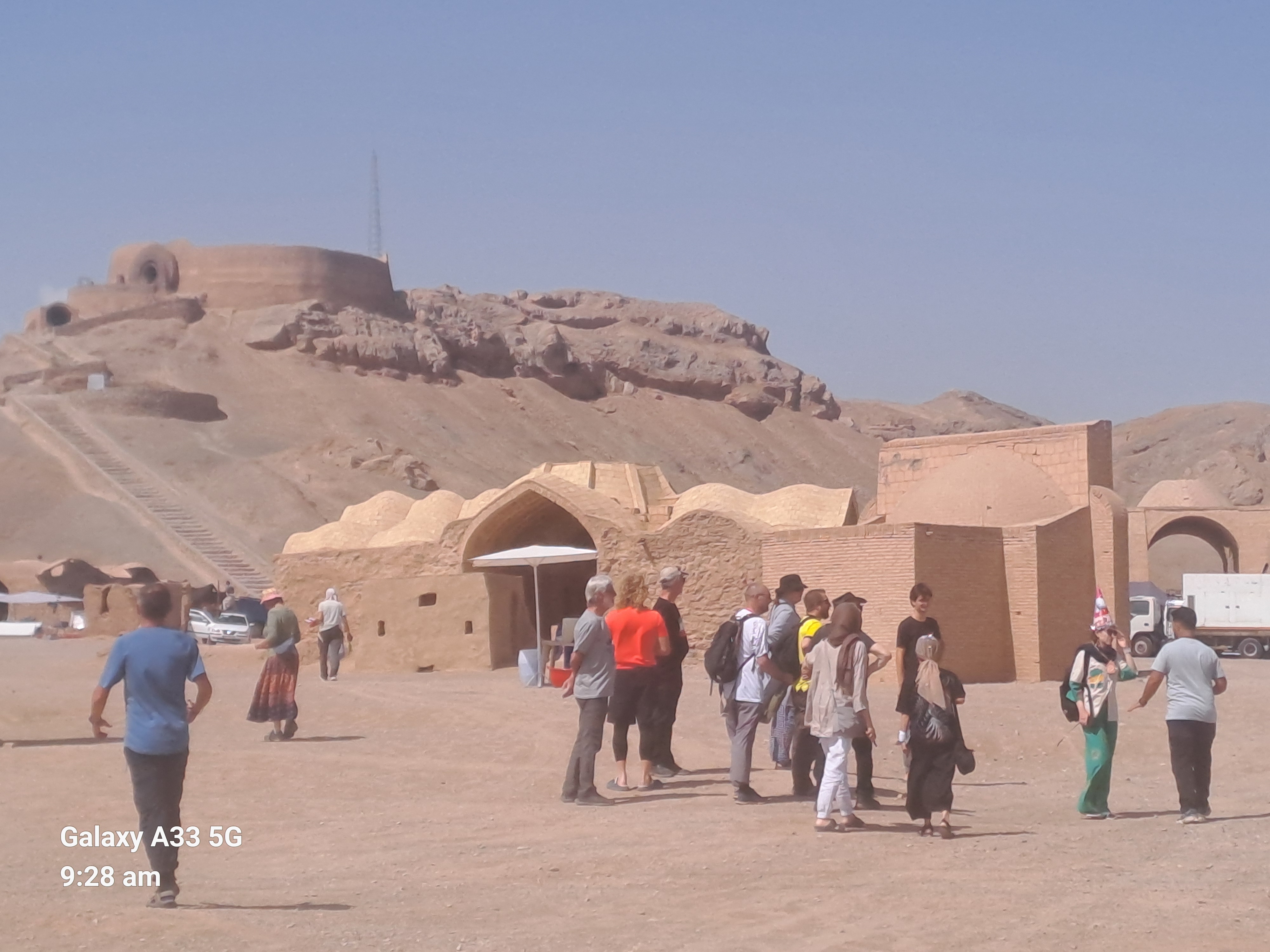


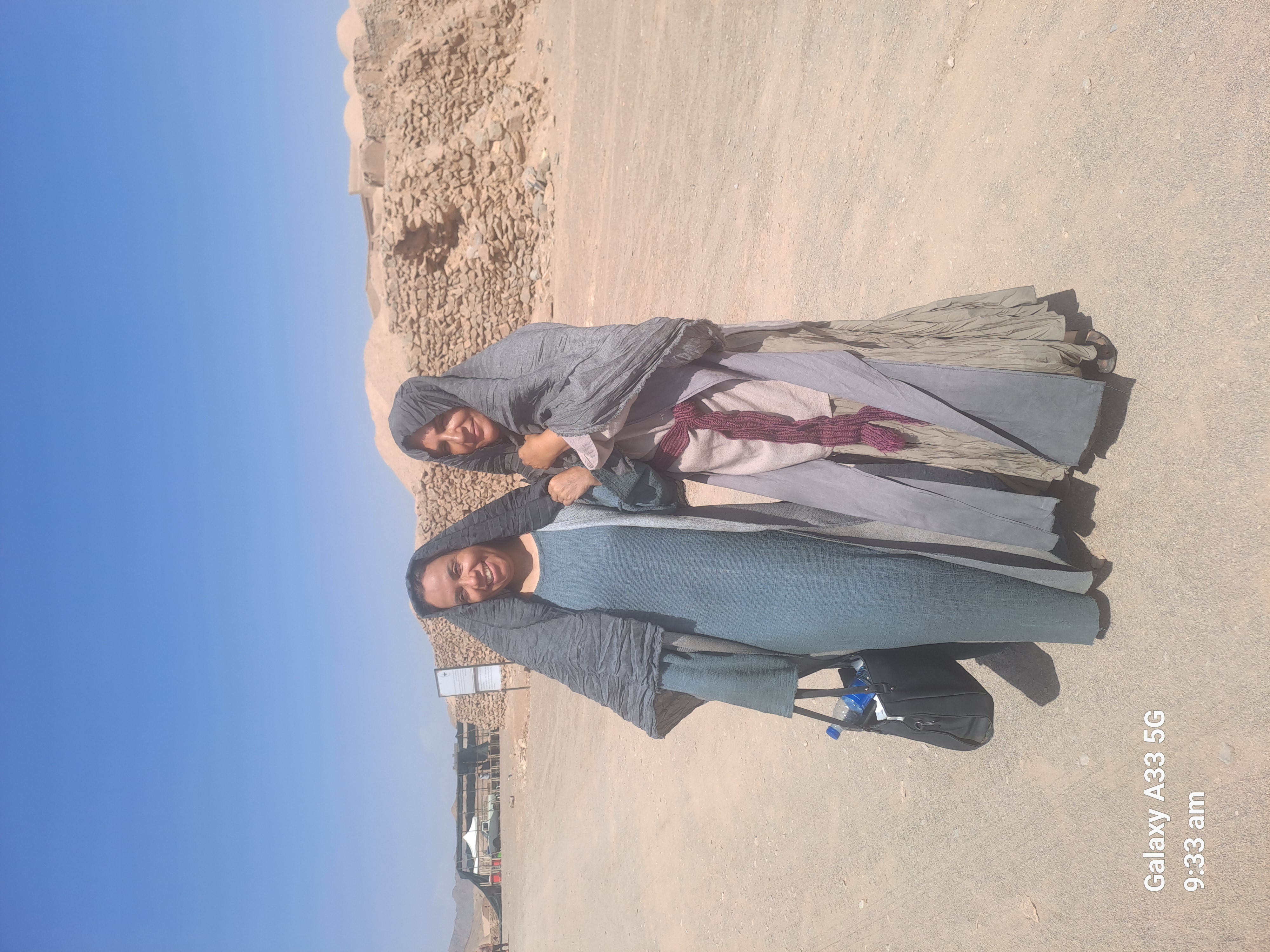
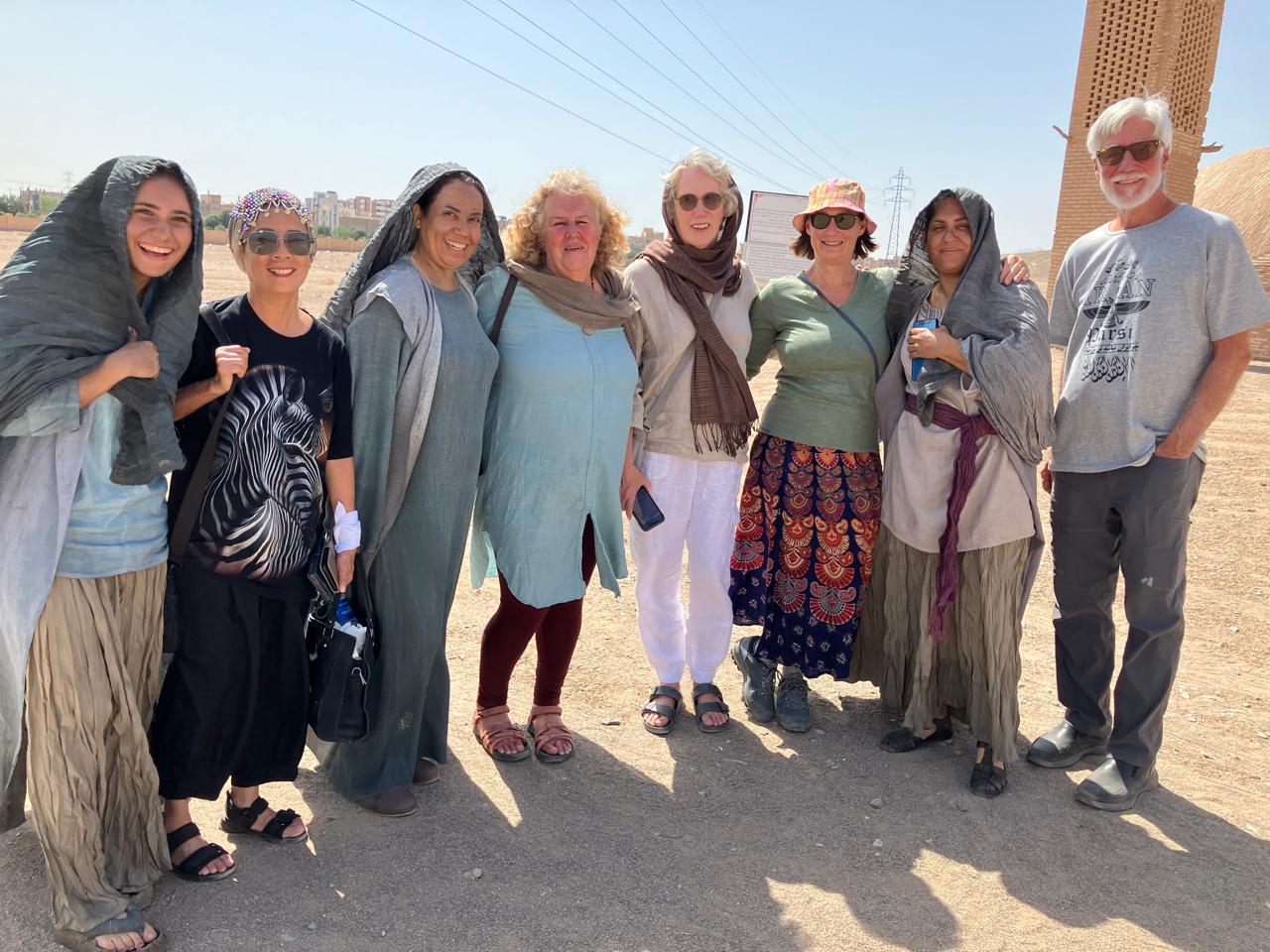
After this we went to the Zorostrian museum where we saw the eternal flame which has been lit for 1200 years. The Zorostrians believe in the four elements with fire as the most important. They often have a four pointed cross to depict this. The wing symbol is also important. The wings have three parts, good thoughts, good words and good deeds. The raised hand is to pray to God and be grateful .
Zarathustra the messenger from God was born in Iran in 1767 BC. After 10 years of retreat in his 20s he became a prophet at 30, and at 42 he persuaded the king to adopt his religion.
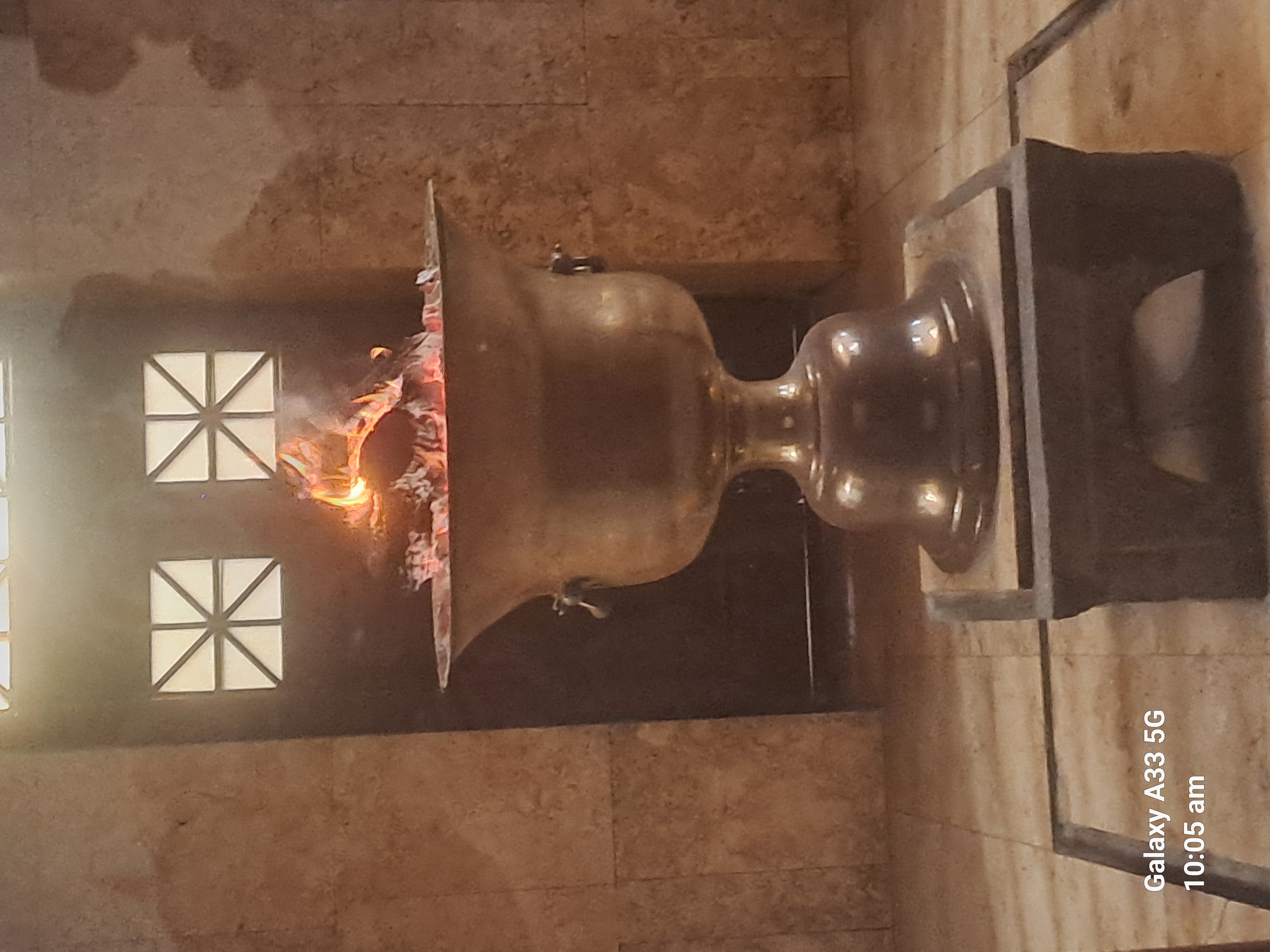
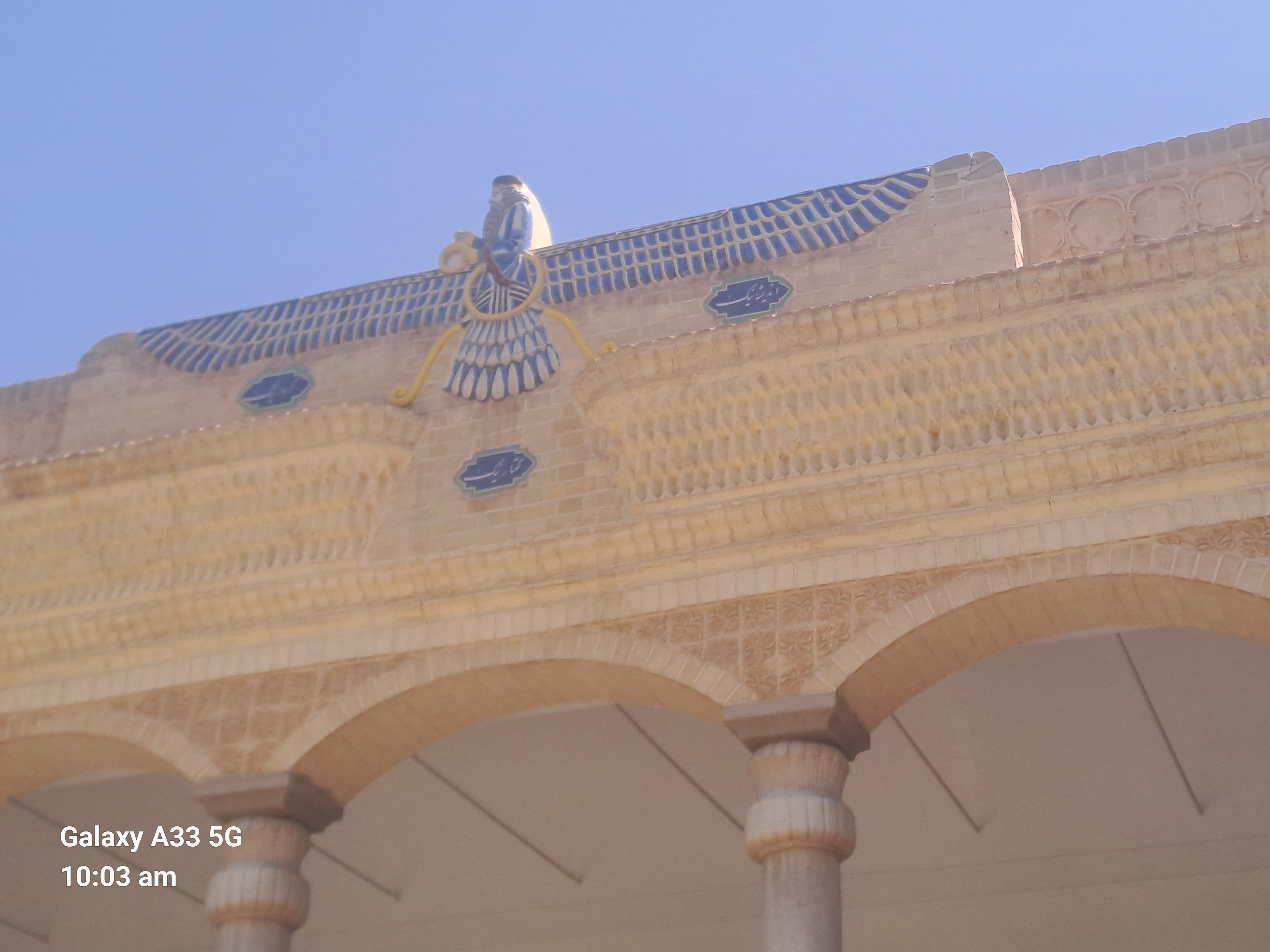
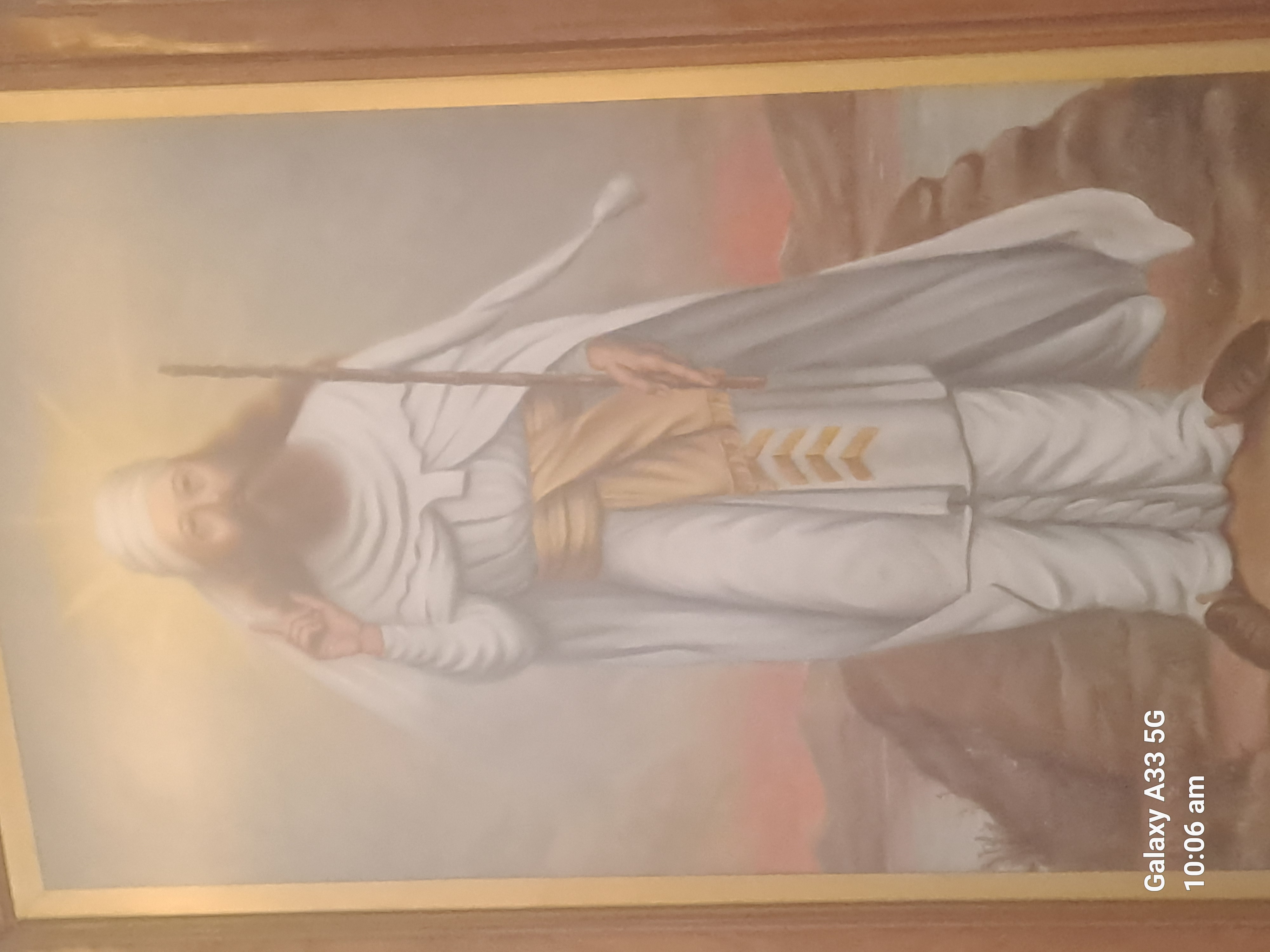
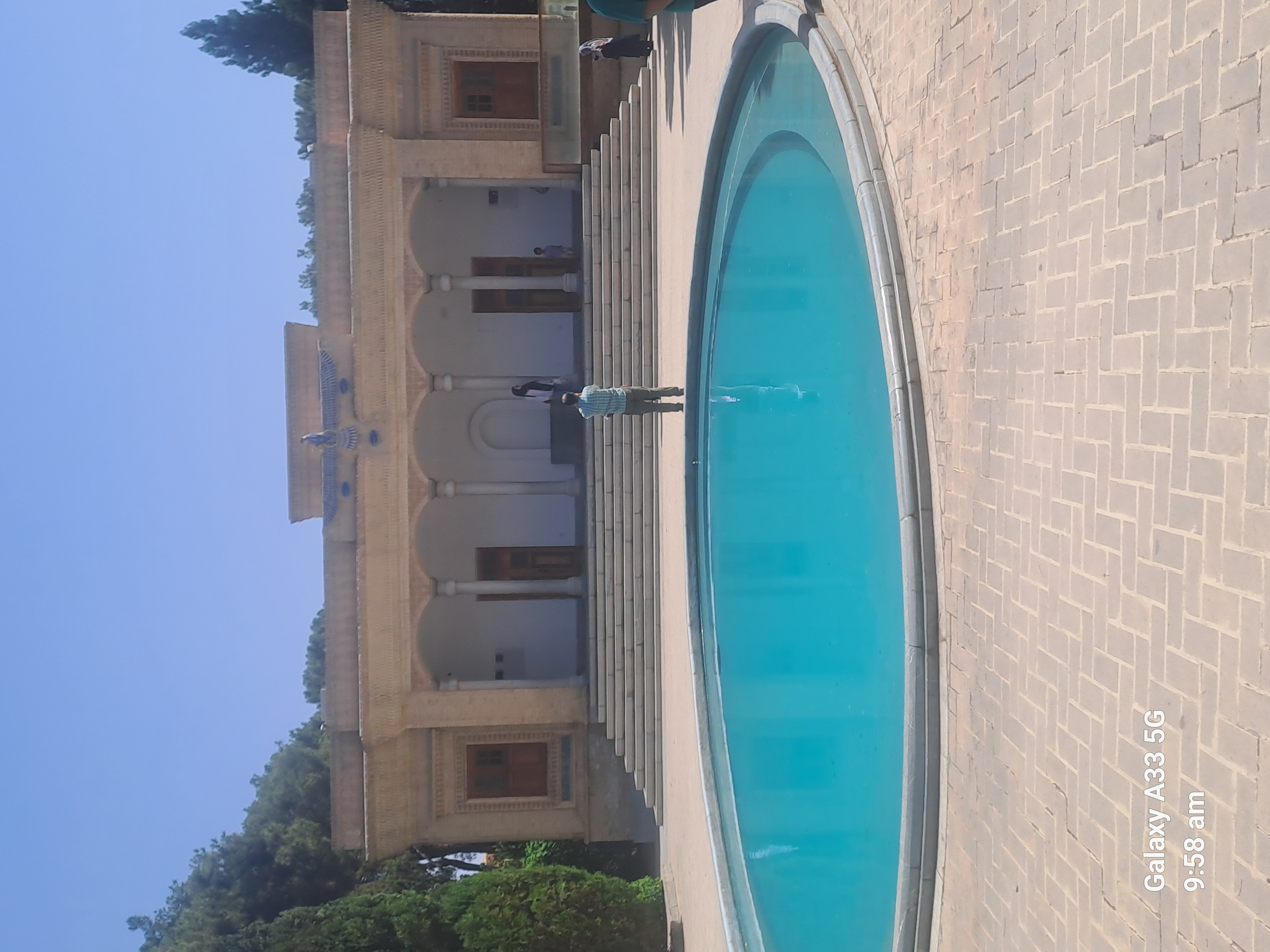
One of the features of this city is wind catchers. These are towers that are designed to pass cool air down to chambers below. We visited one at the gardens. Complete with water and shade of course. There were also stained windows to catch the light and an art class outside.
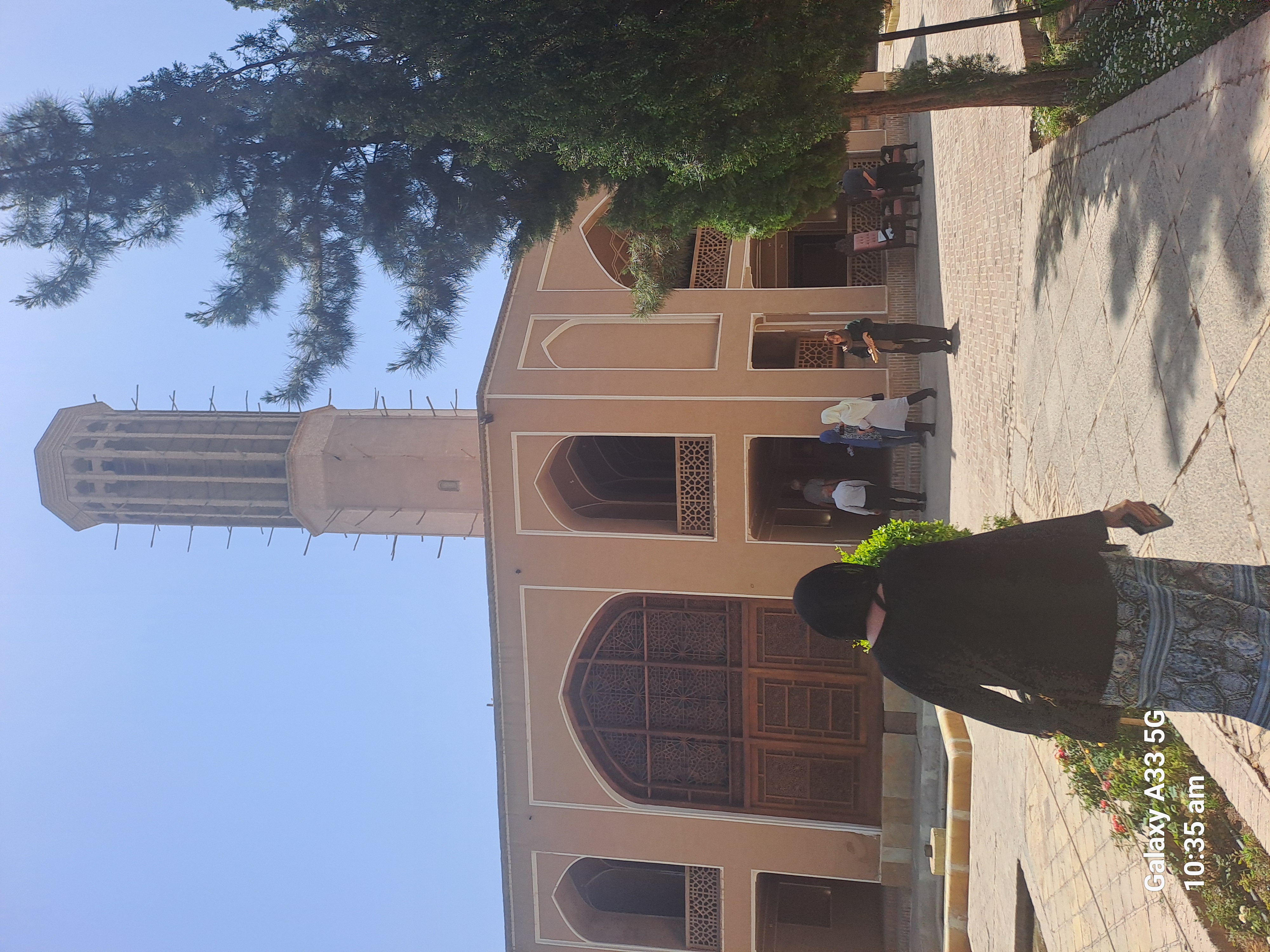

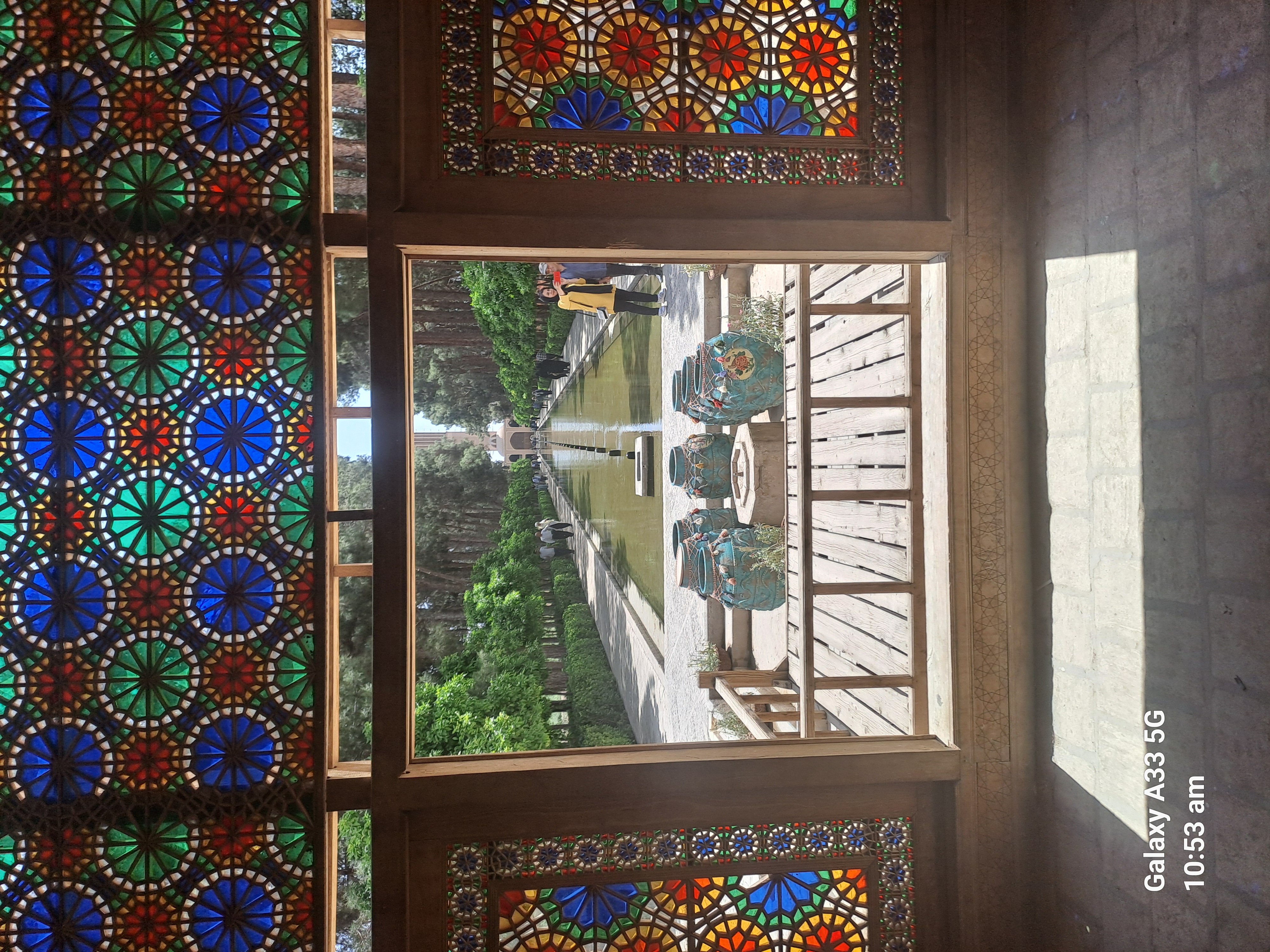
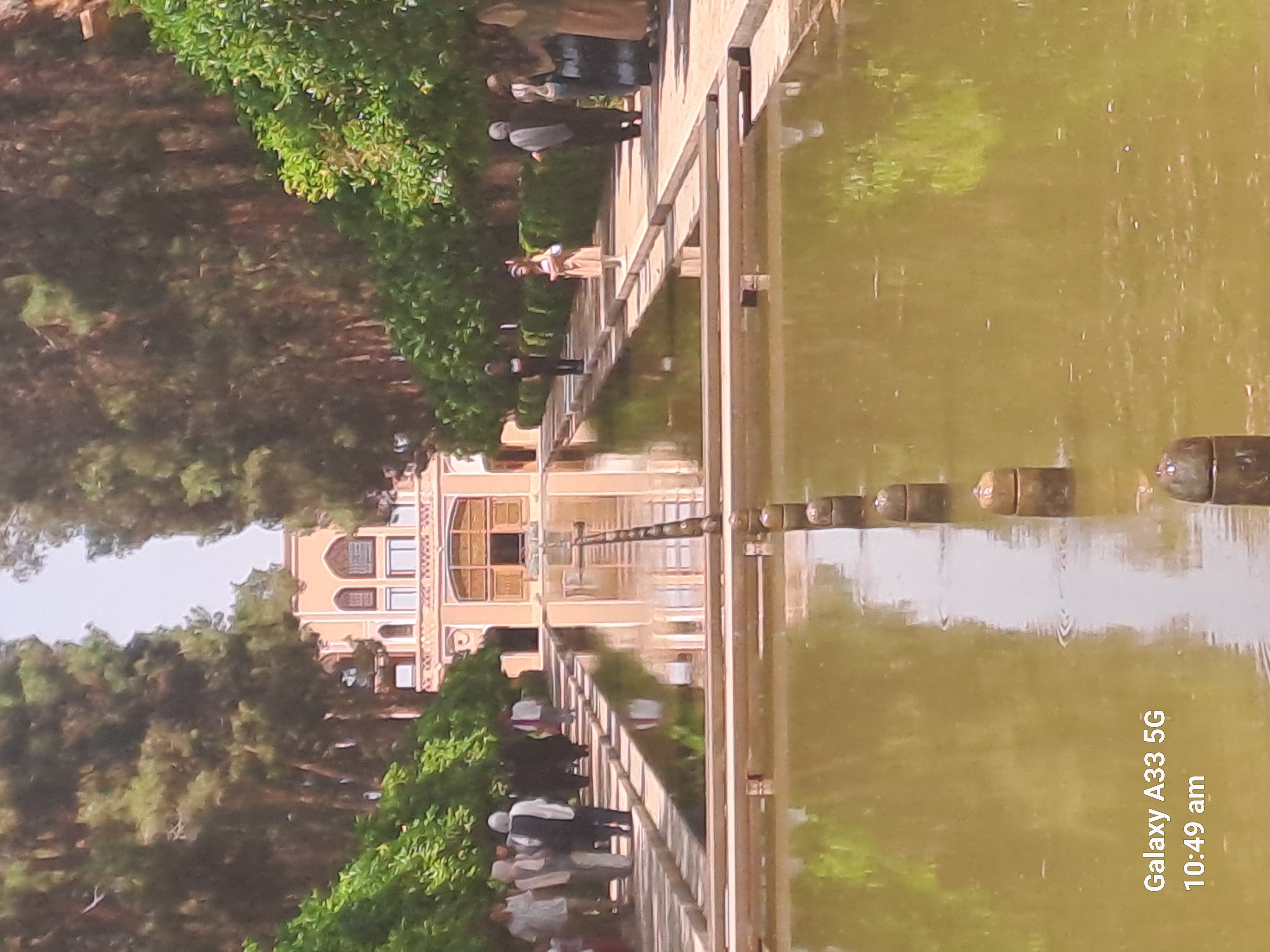
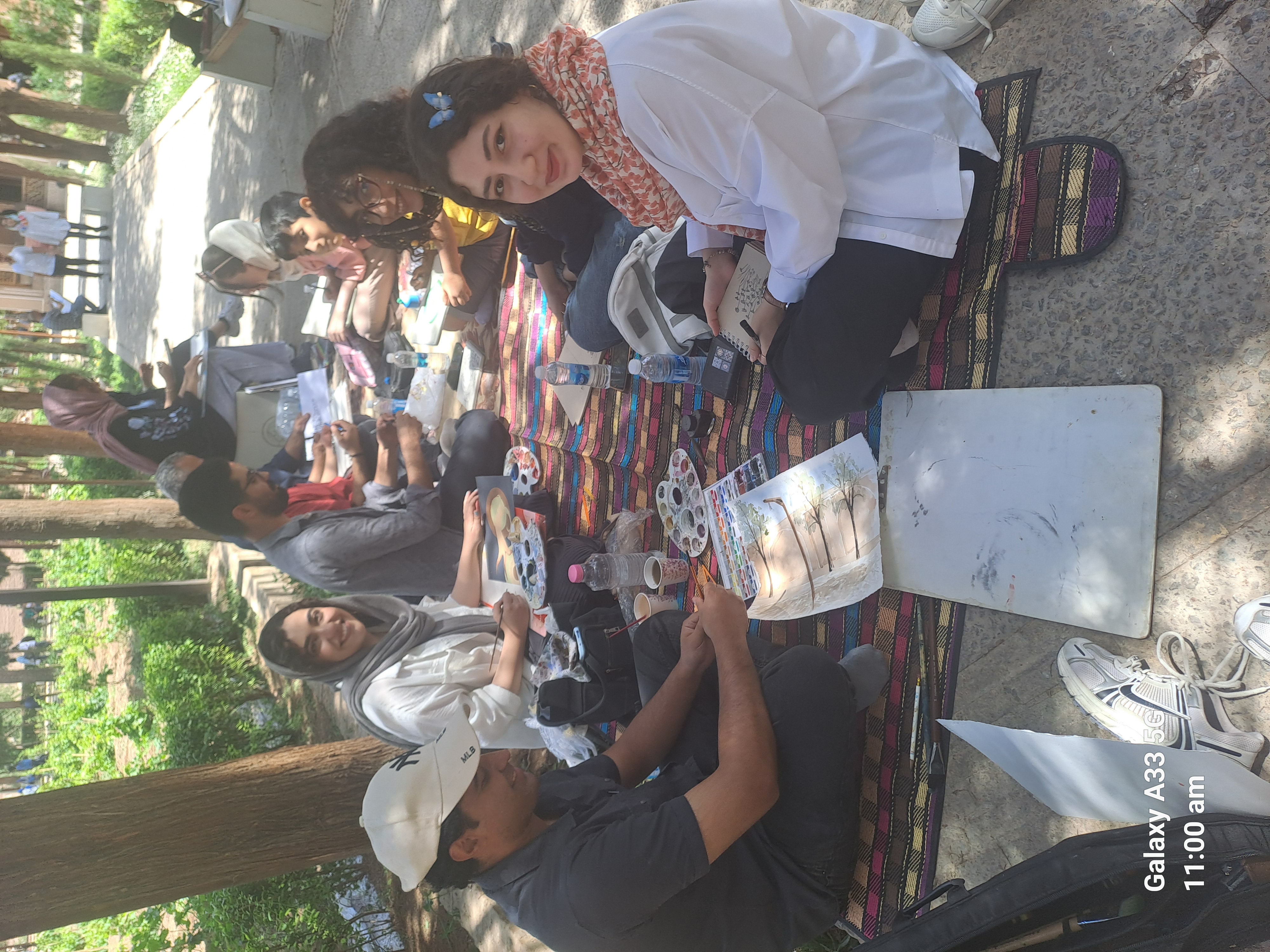
We did a visit to the square to see the nakhl a structure to represent a coffin which is moved around on the anniversary of the 3rd imam’s death. This is a big event each year with large crowds, readings etc.
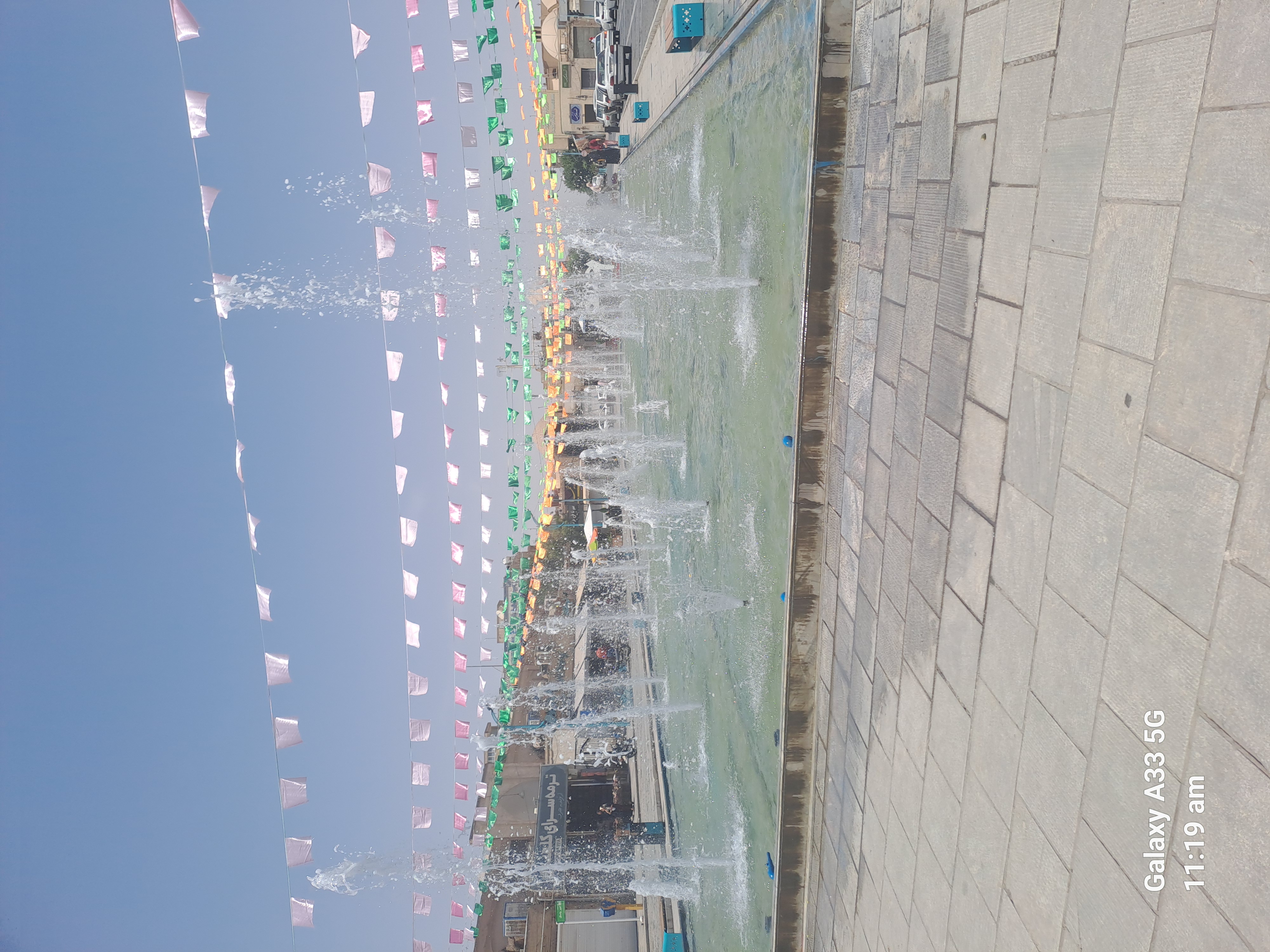
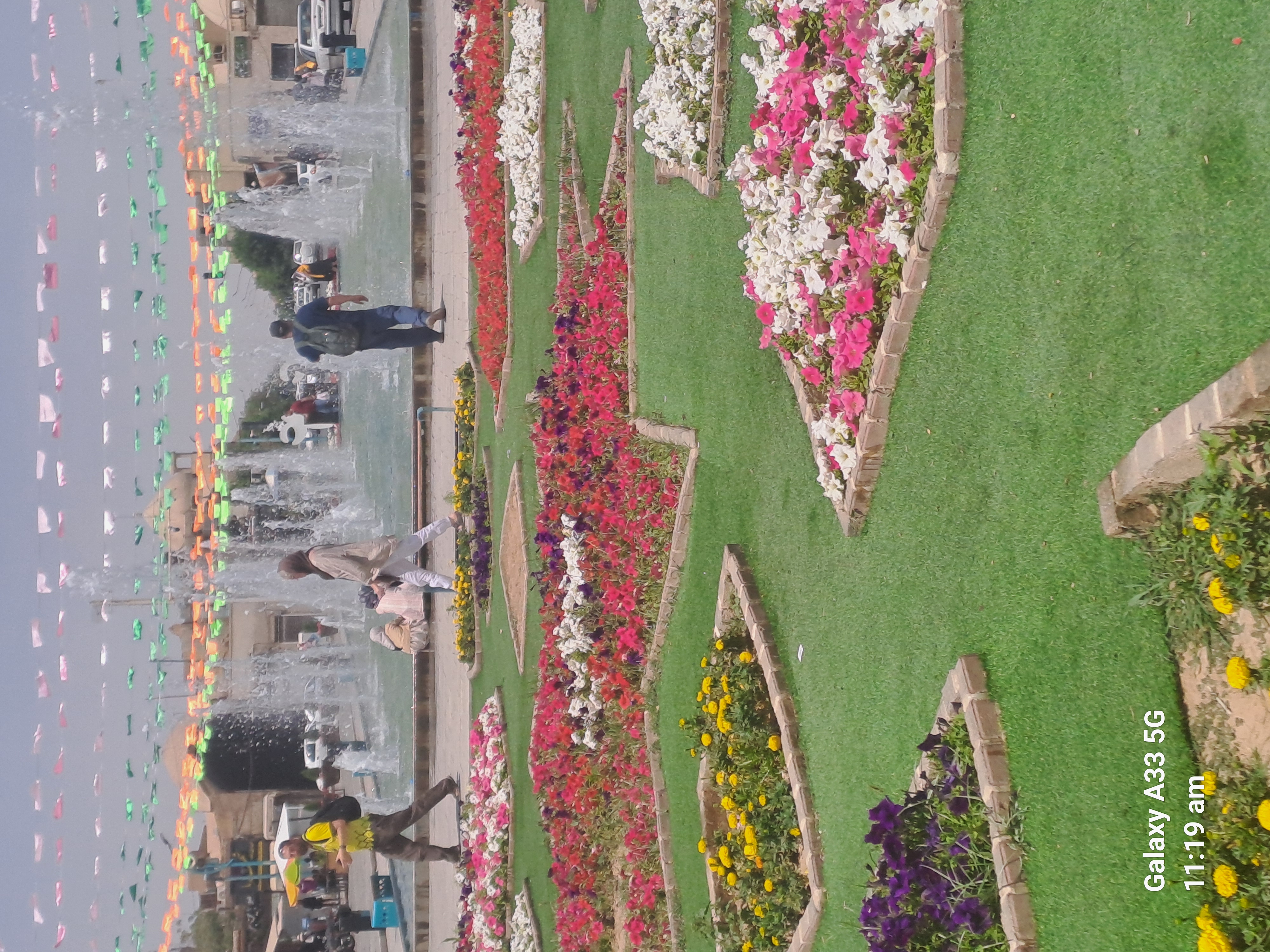

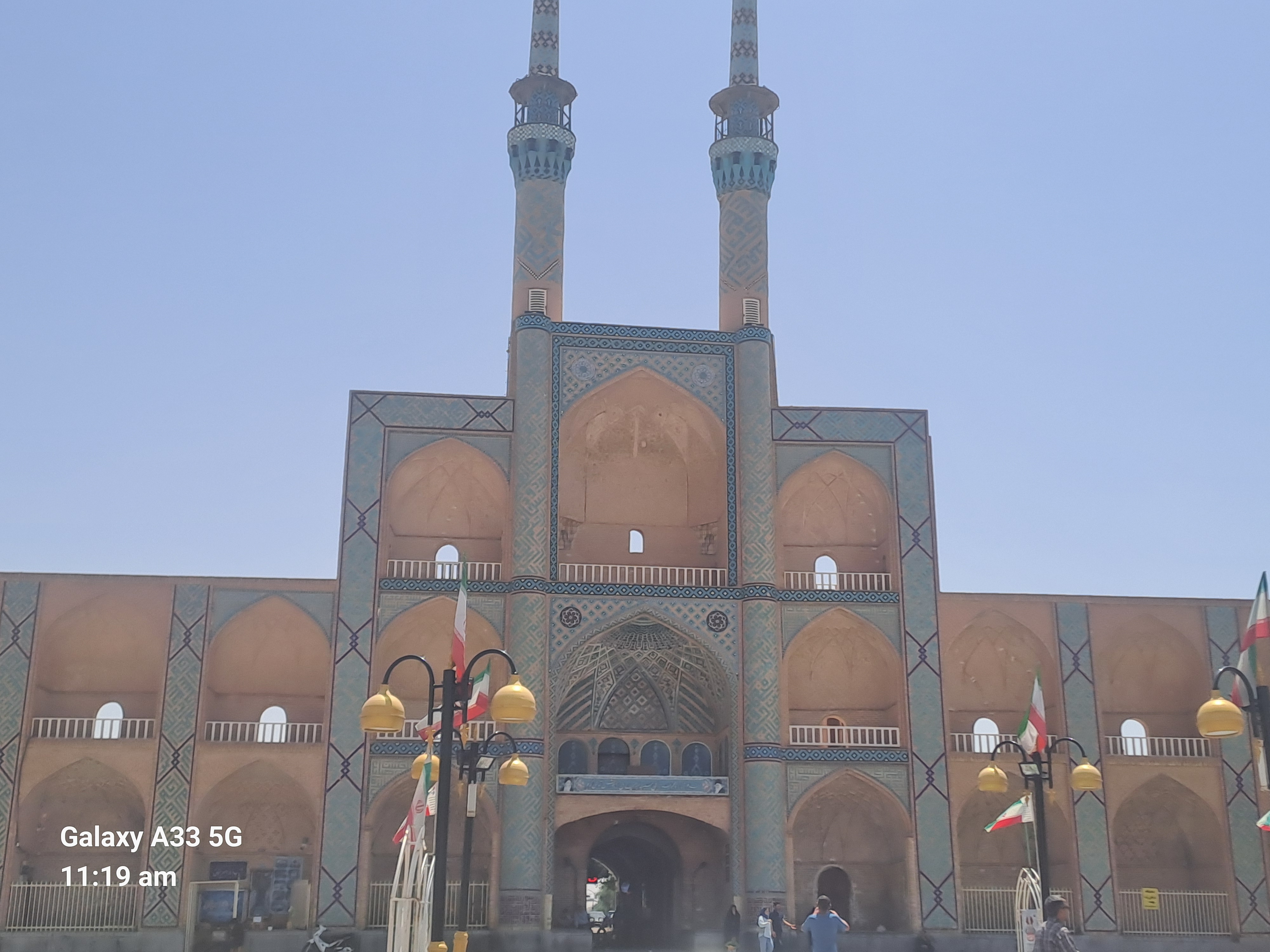
Our next visit was to Esfahak. This is a 1,000 year old mud village. It was virtually destroyed by an earthquake in 1978, In 2008 a group of young villagers collaborated with research institutions to restore the village and use tourism for economic and social benefits.
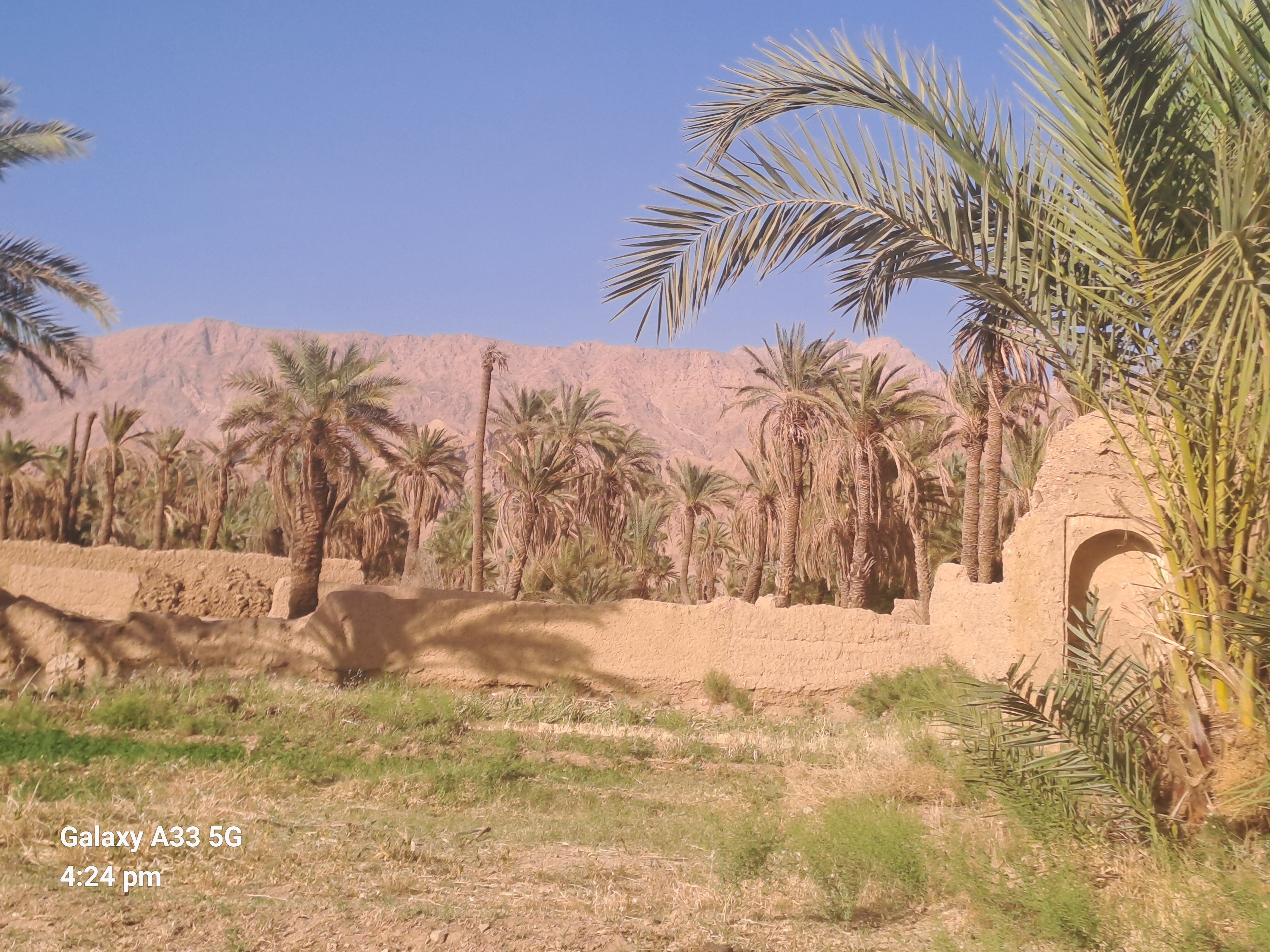

It is still being rebuilt and the rebuilding is offering an opportunity for research and training, so this is an added feature of the village going forward and a model for other villages. The building material is soil, water and sand. No straw because the insects eat it. A top layer is plastered on with straw, the roof has a top layer of wheat stems added in, and this needs replacing every 4 years.
In summer the bricks take 3 days to dry. after day 2 they are put on edge to allow them to dry faster. Everyone builds their own house. The flooring is more difficult it takes a whole day with 8 to 10 people, they say it needs 10 lovers to do it as it is hard work.

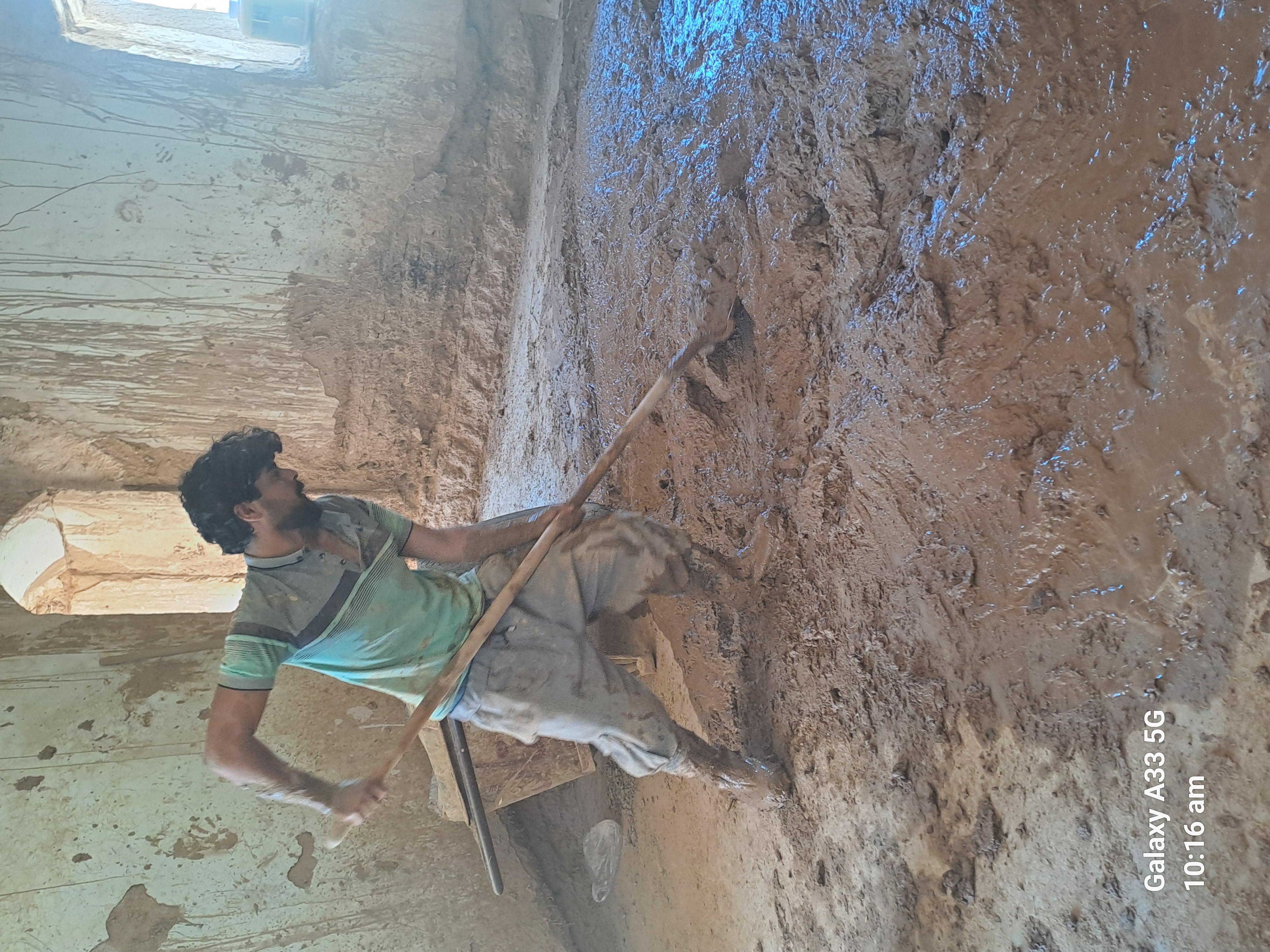
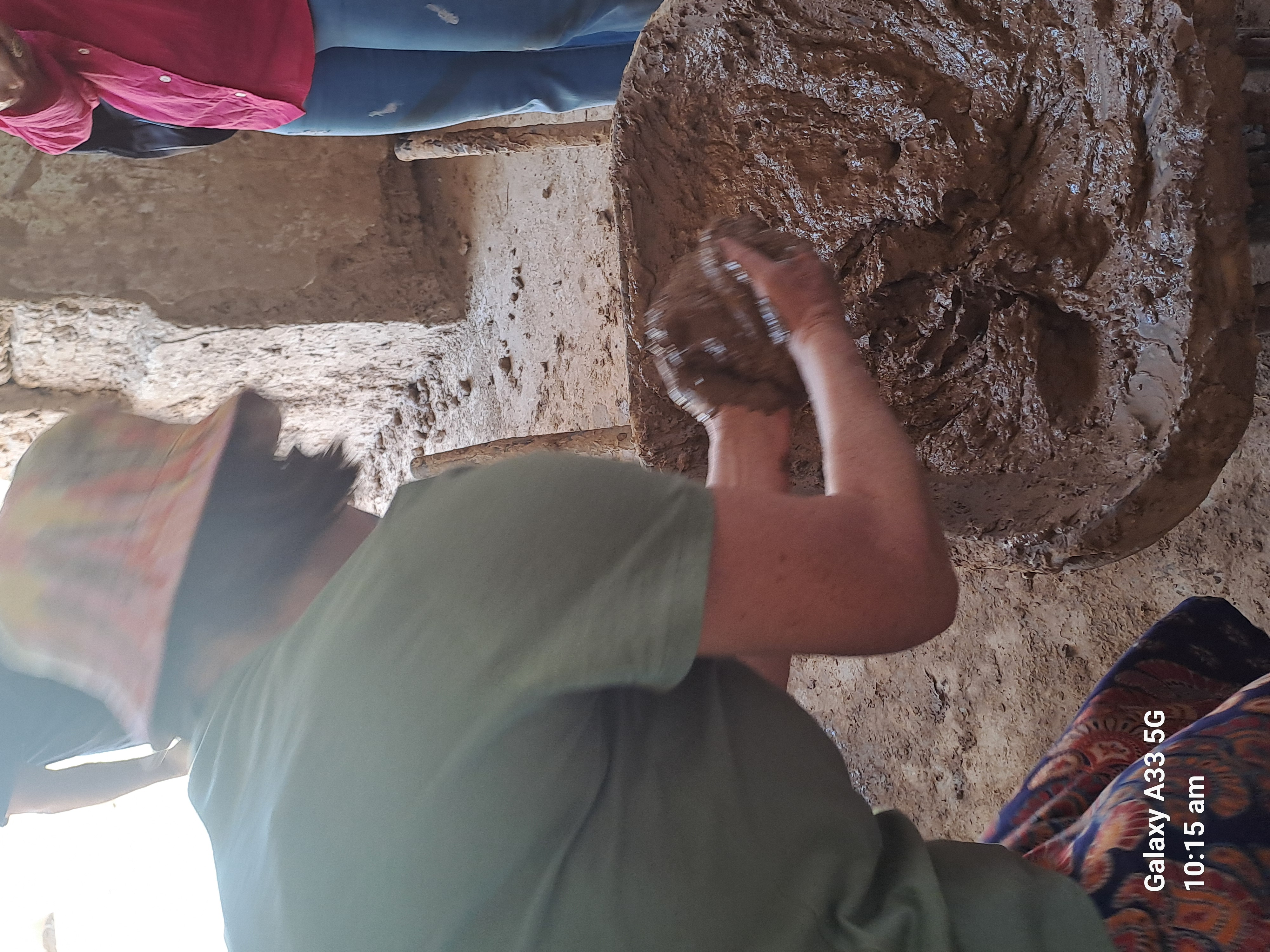
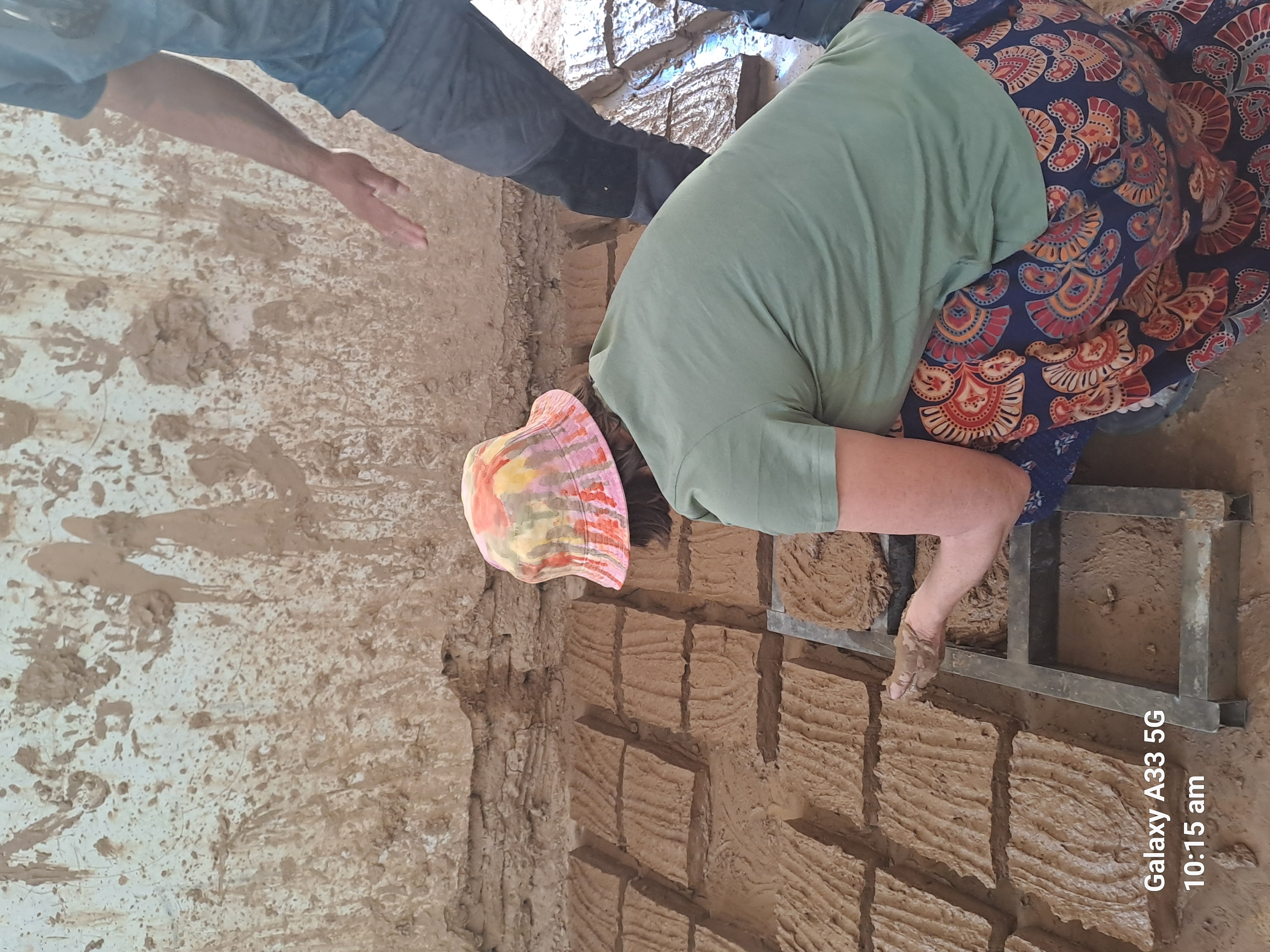
This is a centre for students and researchers on this kind of building technique. New students come here to learn from experience. The domes start from the four corners at an angle of 15 degrees. The sections between the corners are them filled in and a dome gradually formed.
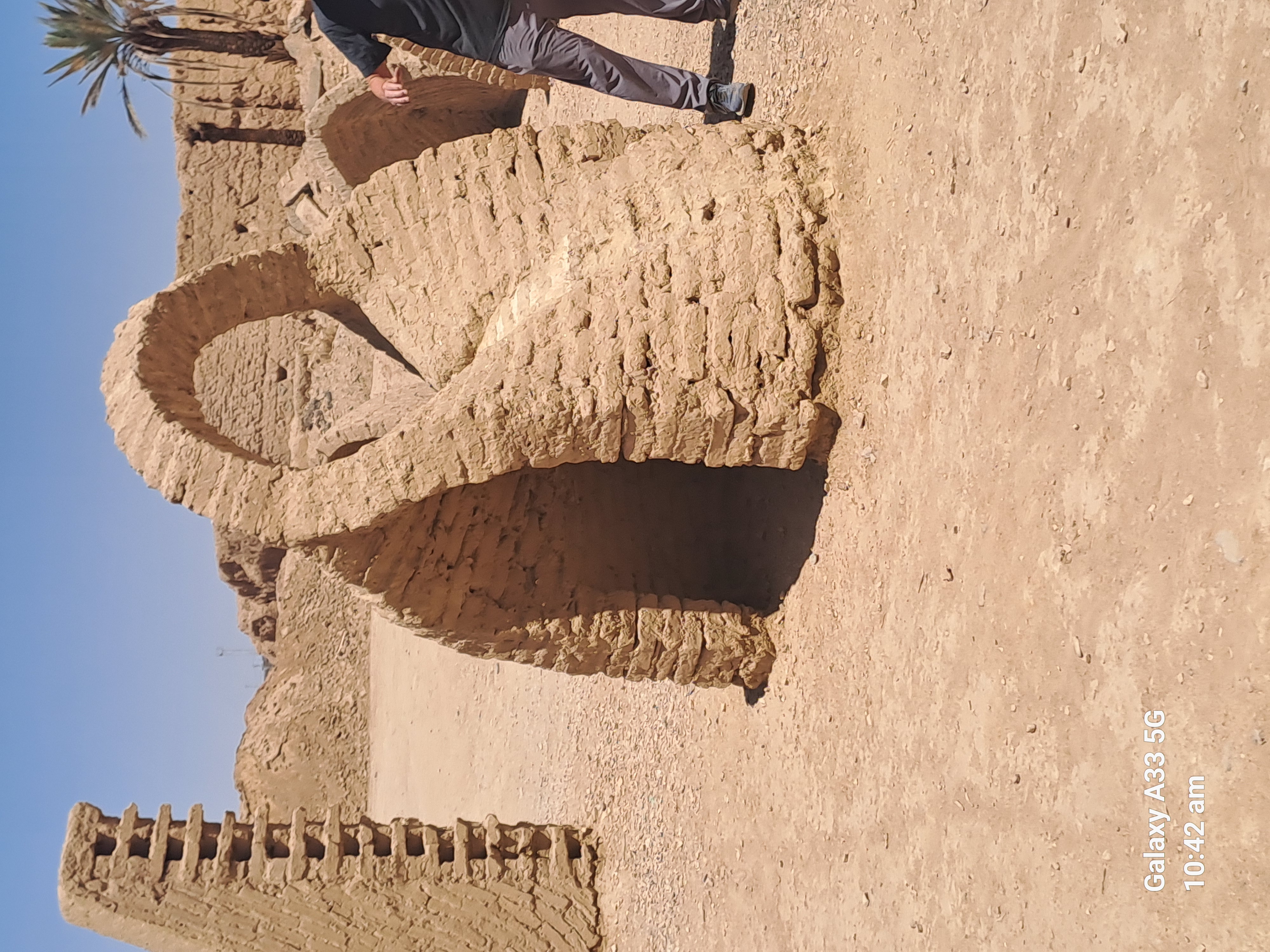
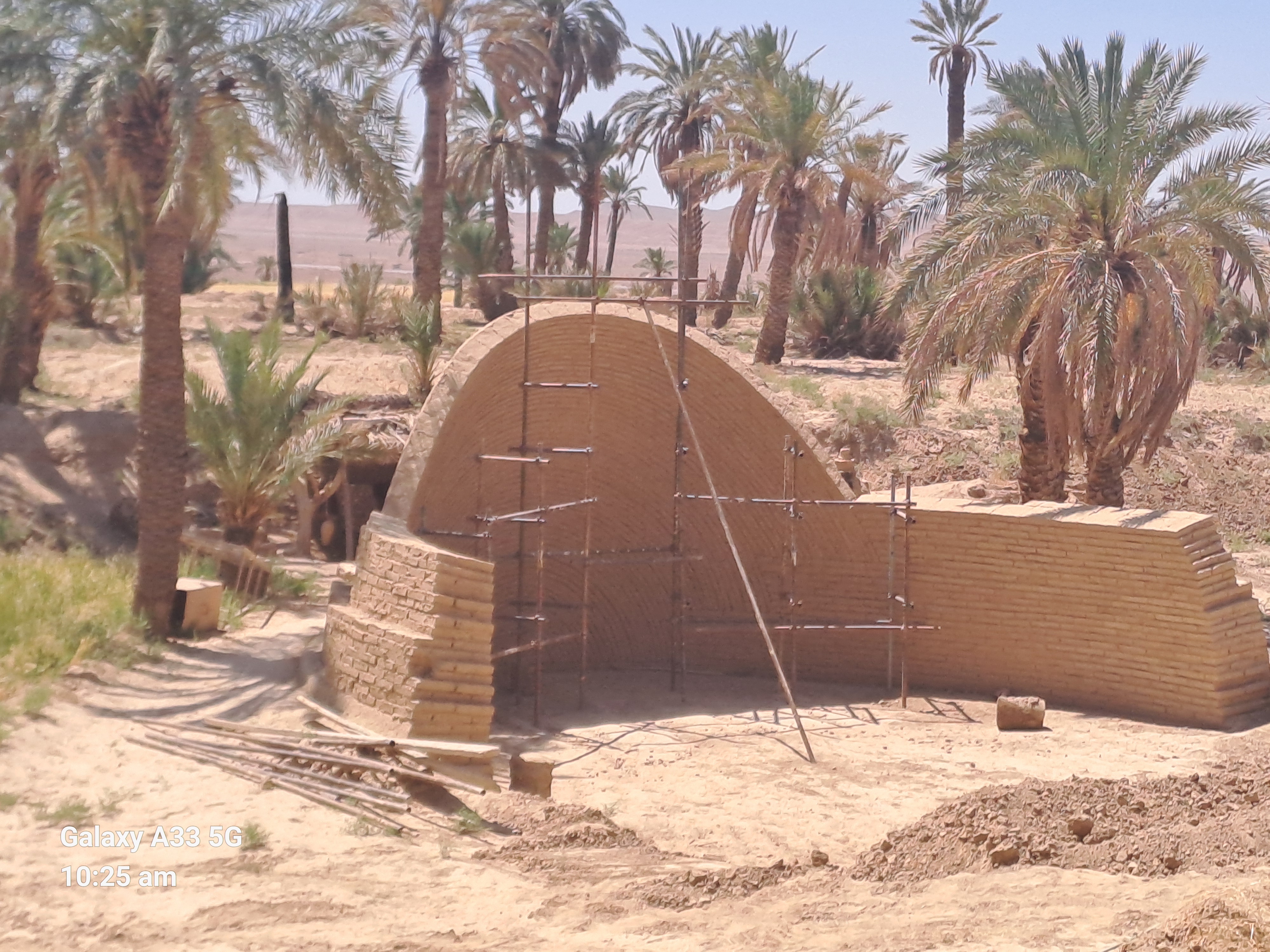
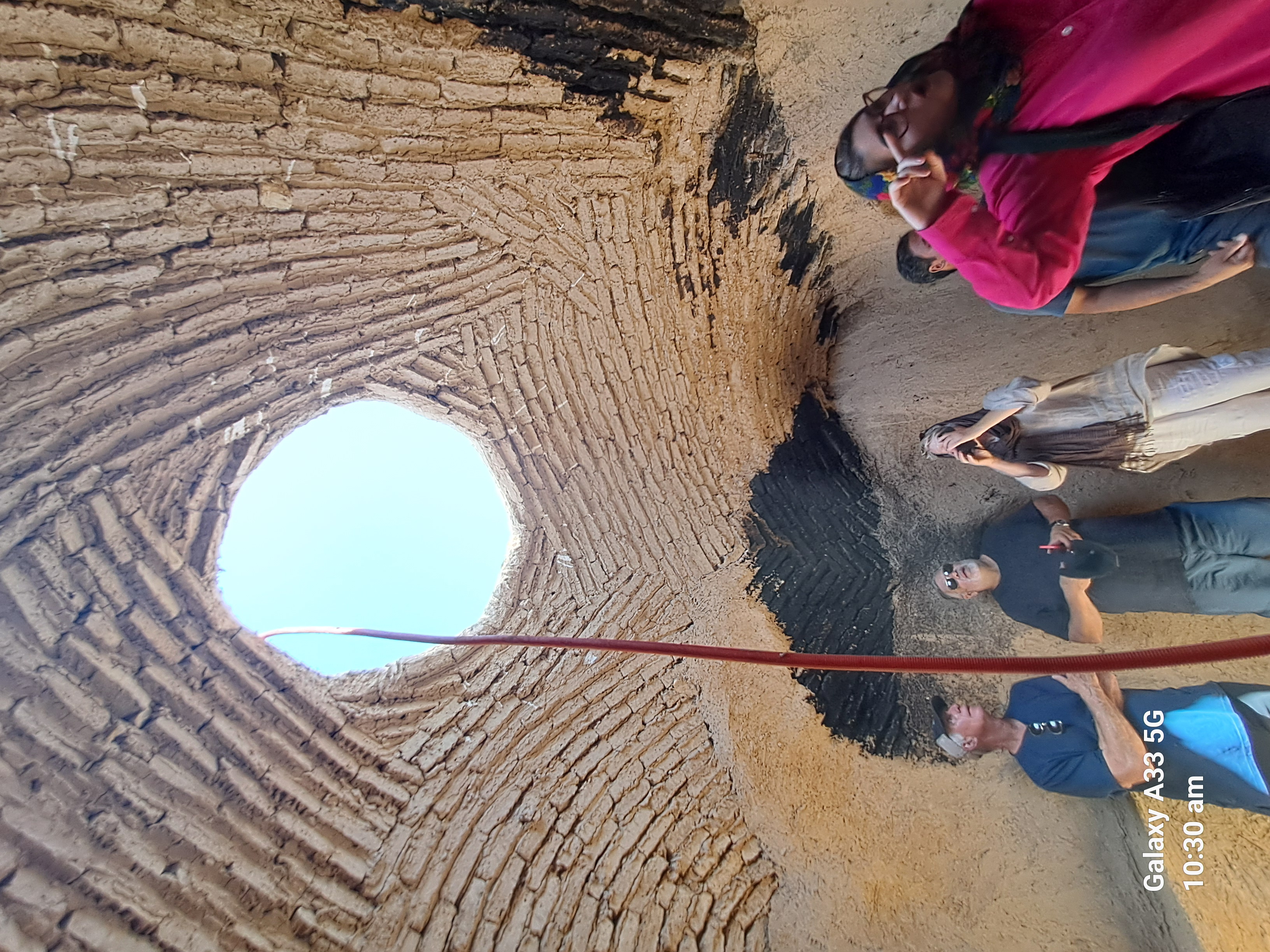
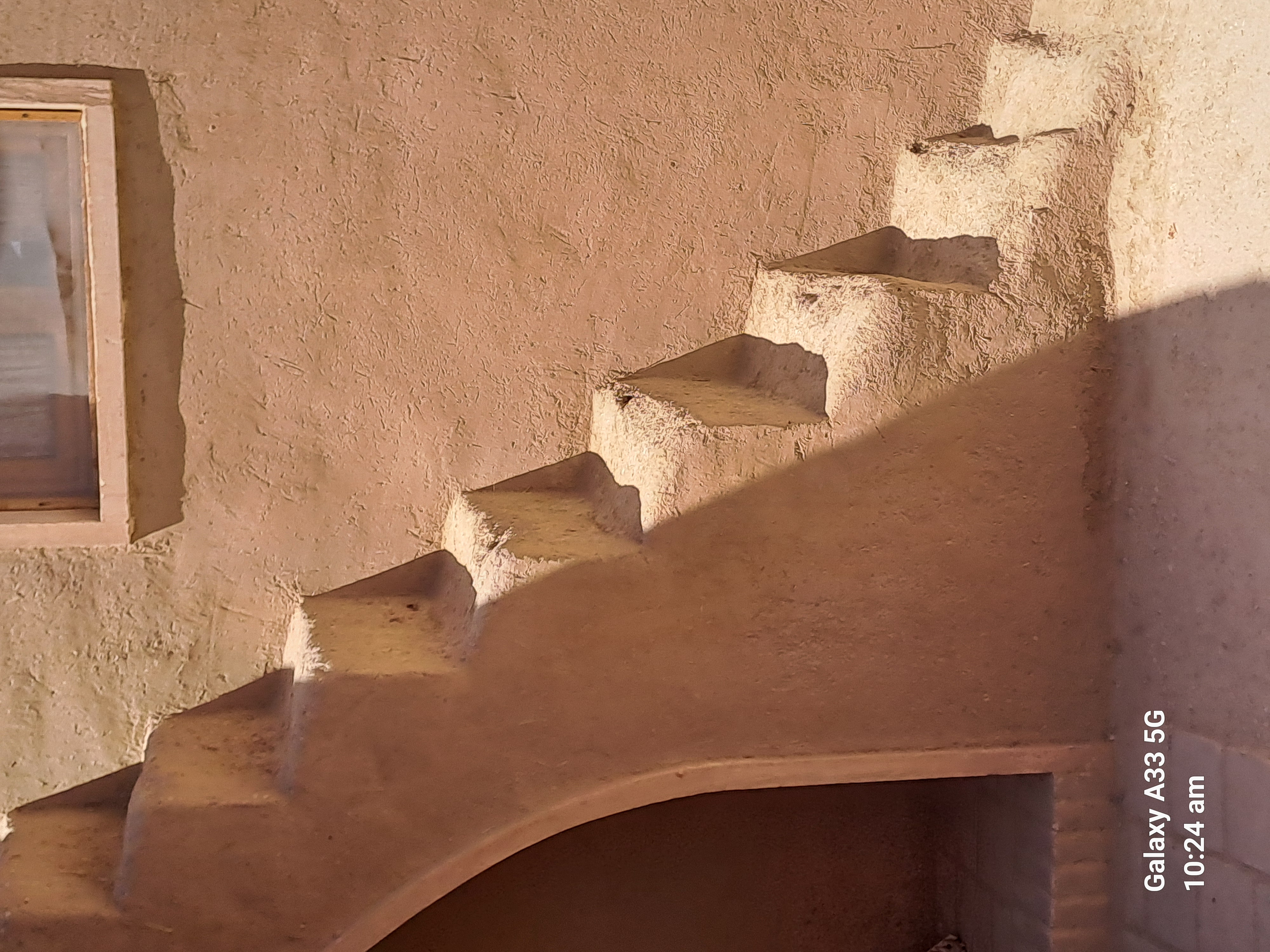
In the centre is the Hammam we had a tour as a group and then could book separate sessions for the girls and the boys. No scrub and massage here though and the water was very cool to combat the intense heat outside.
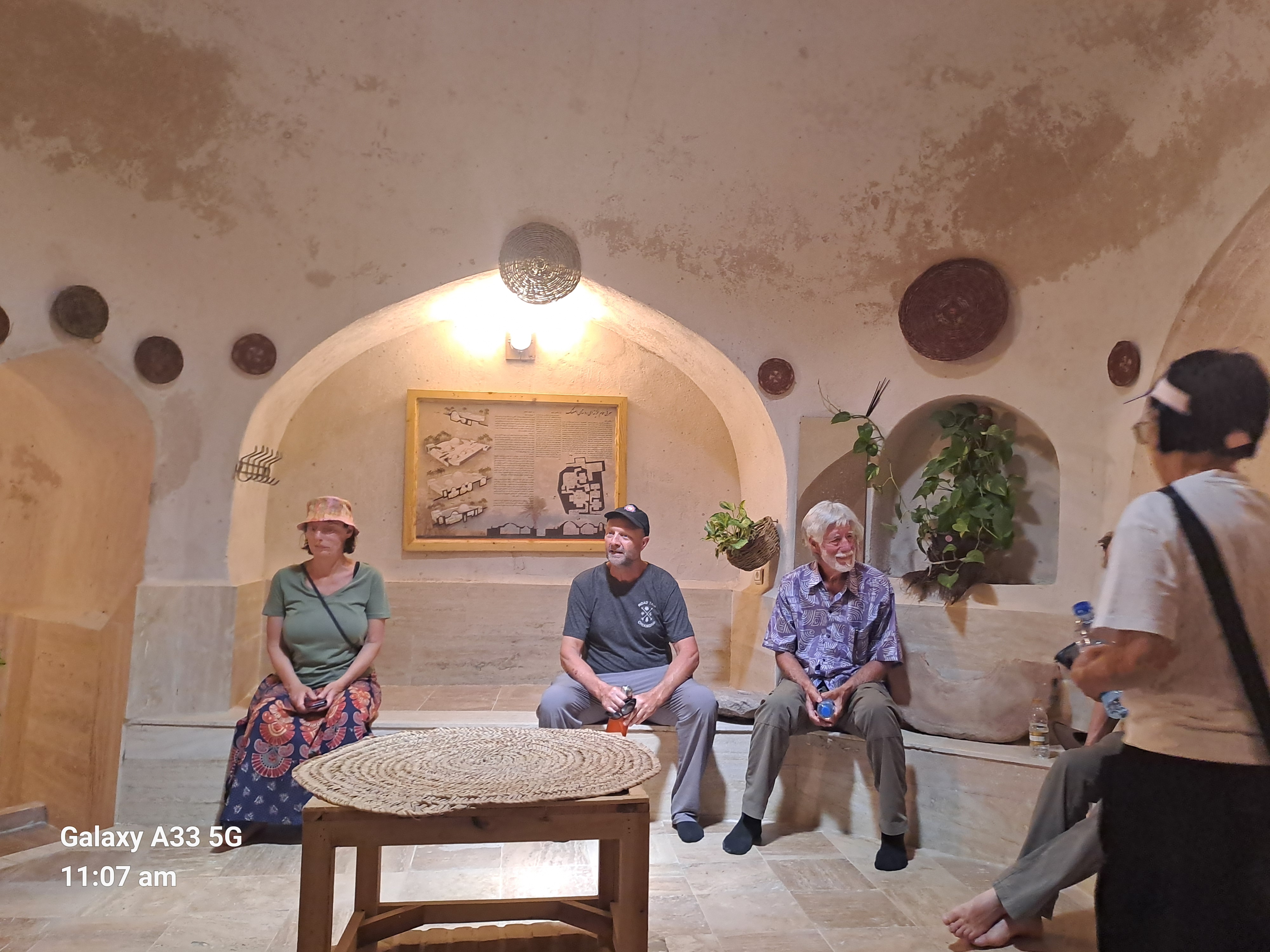
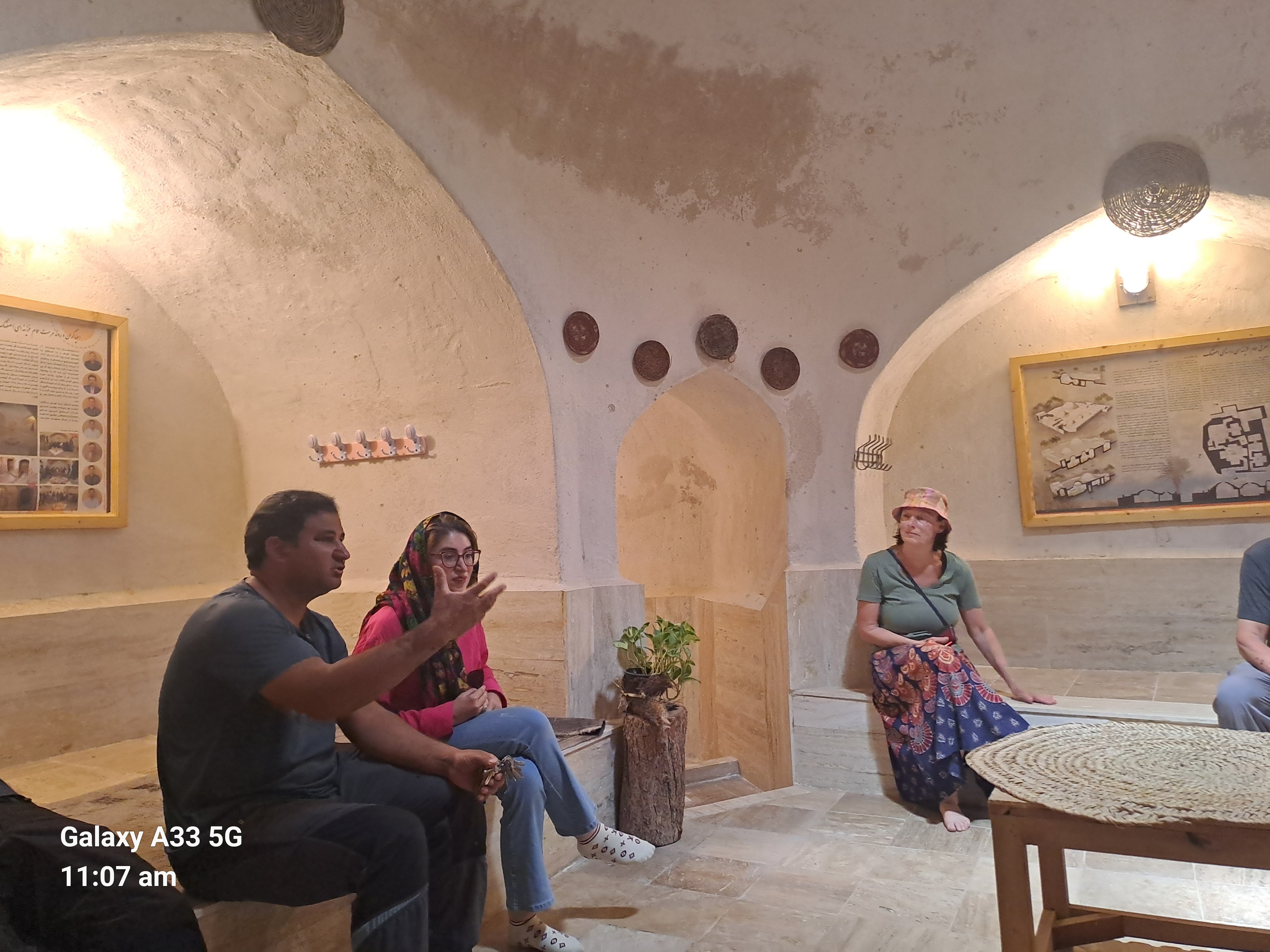
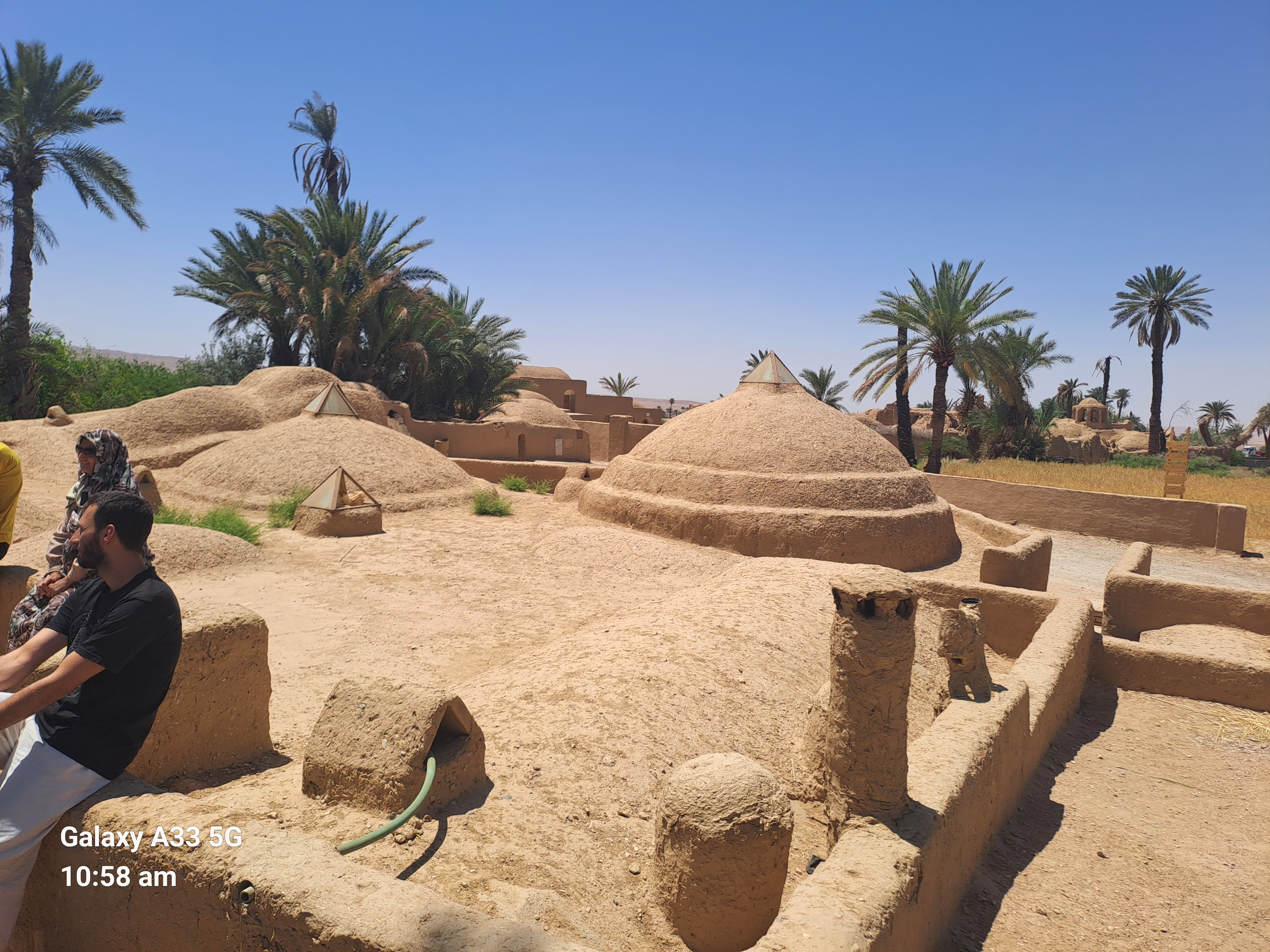
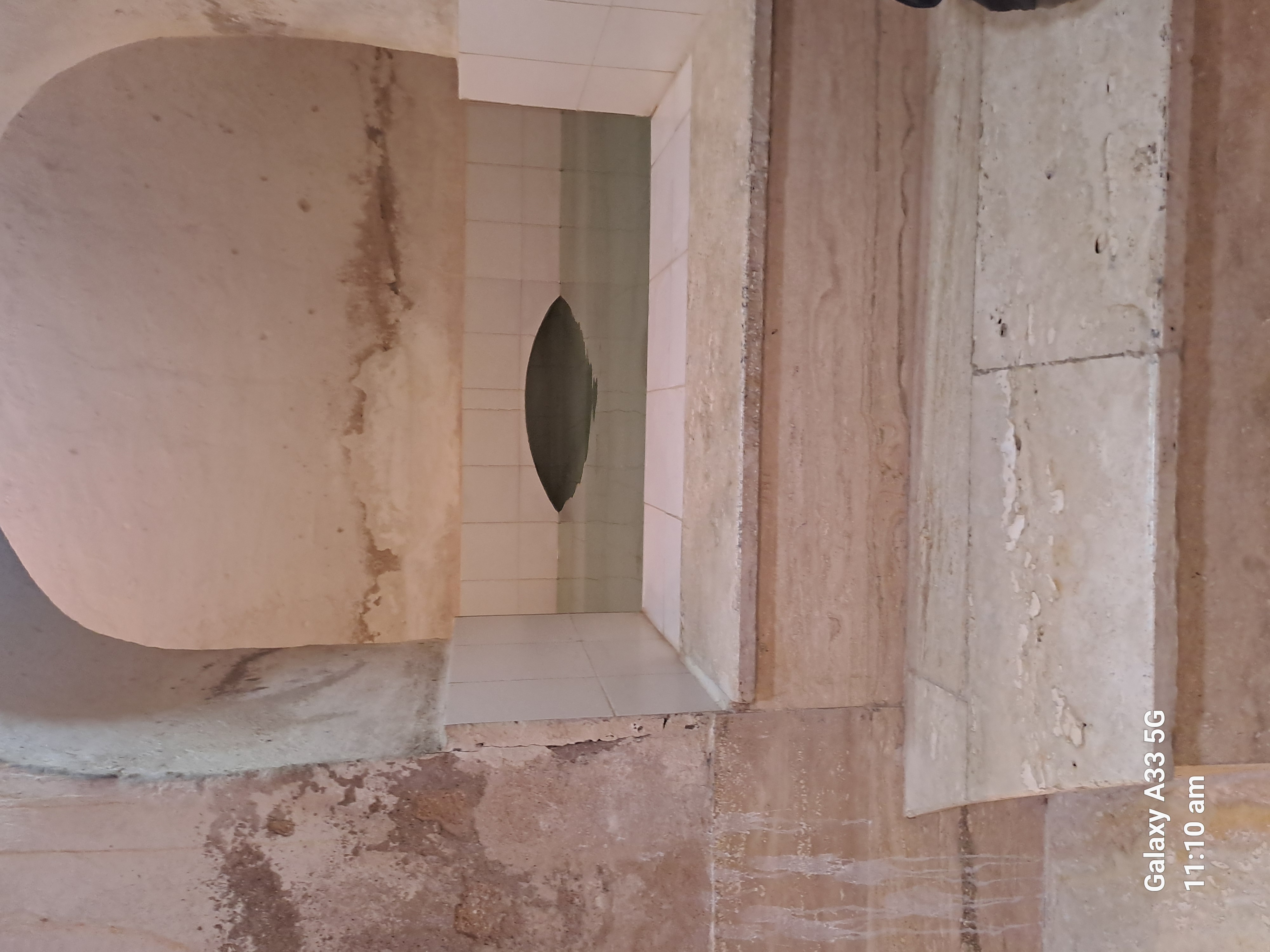
We had a cooking demonstration of a meal used for special occasions. It took a while to stew and seemed to be a family occasion cooking as we had music played and singing while the cooking was taking place and the cooking as much as the eating was a social event.
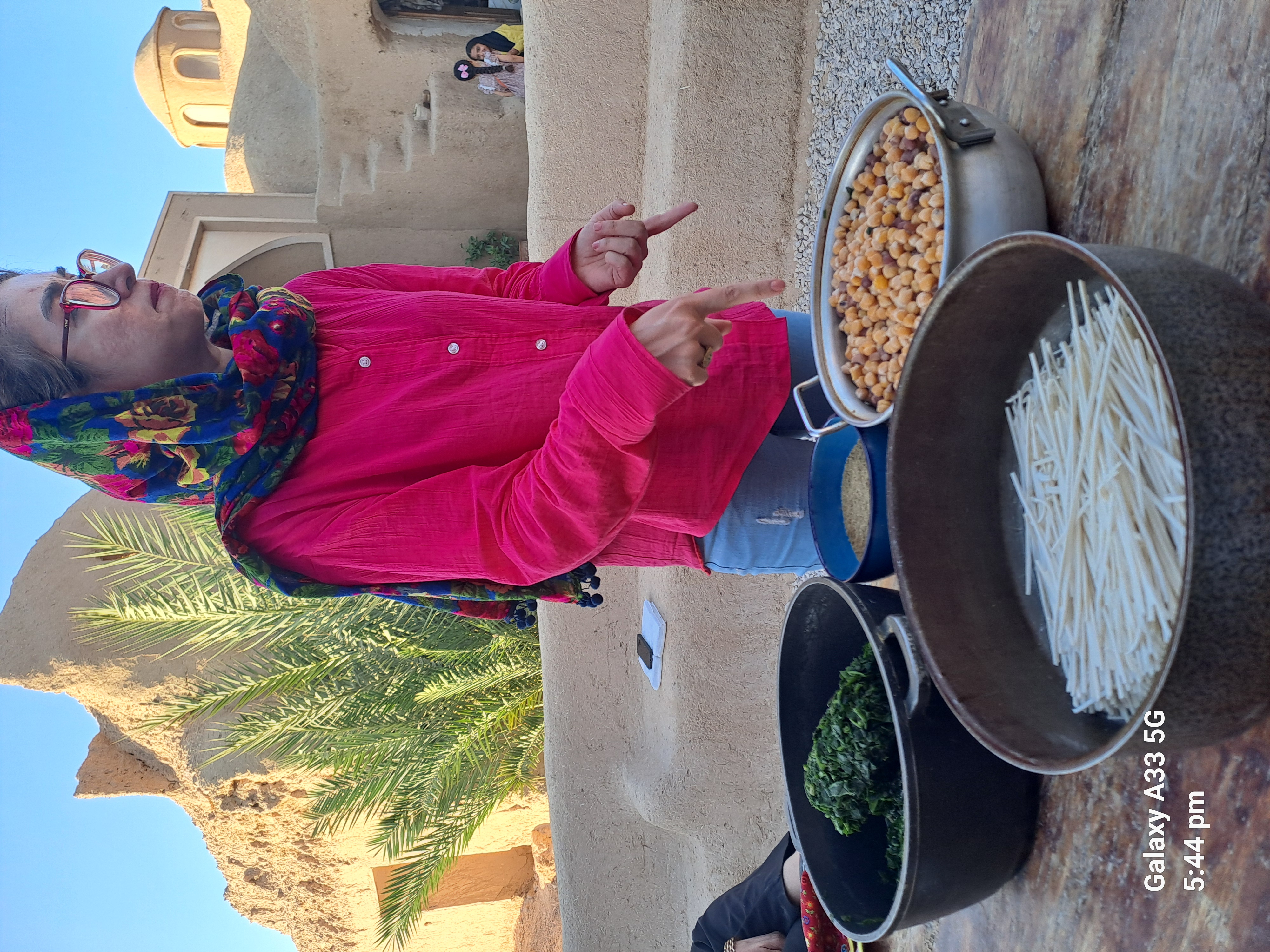
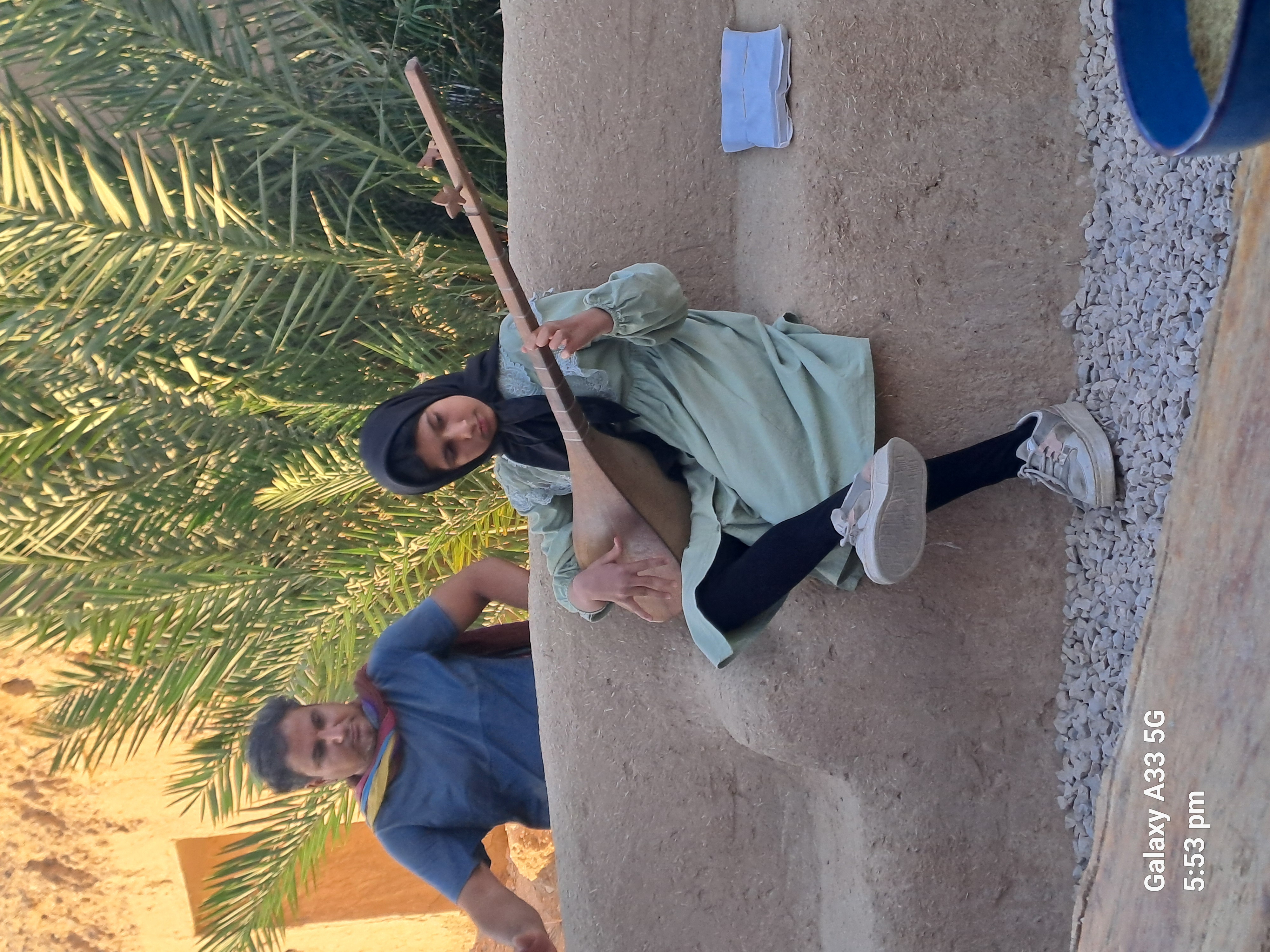

It was great stay but very hot and sticky days and nights. The rooms were basic with a mat on the floor and a couple of sockets in the wall. This was a fun stay but too hot to really explore.
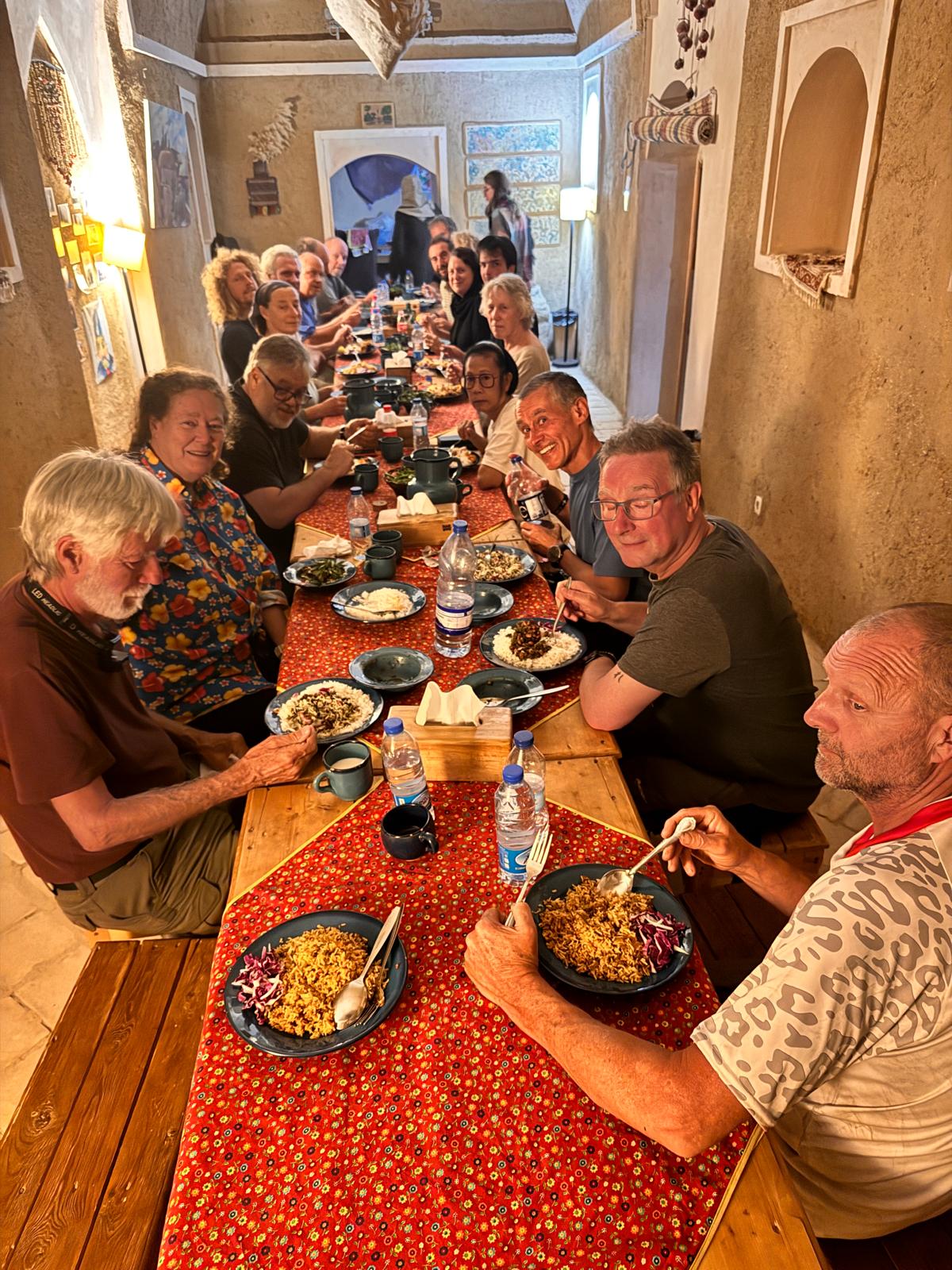
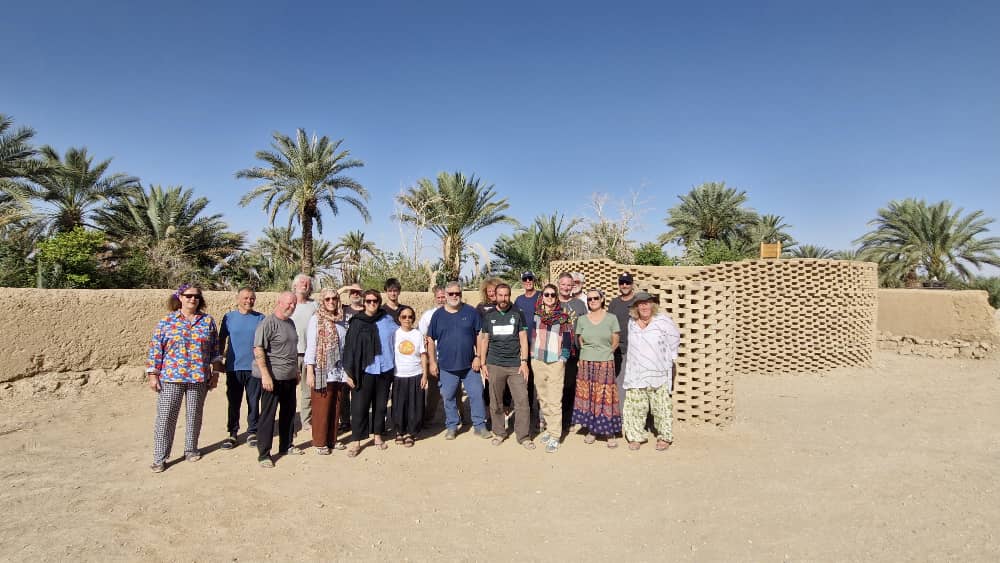
Our last stop was the city of Mashhad. This is a super holy city as it houses the shrine of the eighth Imam of Shia Muslims. Us poor females had to be doubly careful about our head scarves, no loose hair here!
The main trip here was to the mosque and we had a full tour here with our guide and two mosque guides (one male one female). This started by being met outside with the appropriate extra layer for women- as if it wasn’t hot enough!
These garments were more than the bedsheets previously provided they had sleeves and a head piece with elastic so just your face was exposed.
This mosque is the largest mosque in the world by capacity. This is the home of the shrine of 8th Imam Reza and the holy grave is under a golden dome. The largest courtyard holds 100,000 pilgrims. This is the place of martyrdom and the history goes back 1,200 years, although it has been inhabited longer.

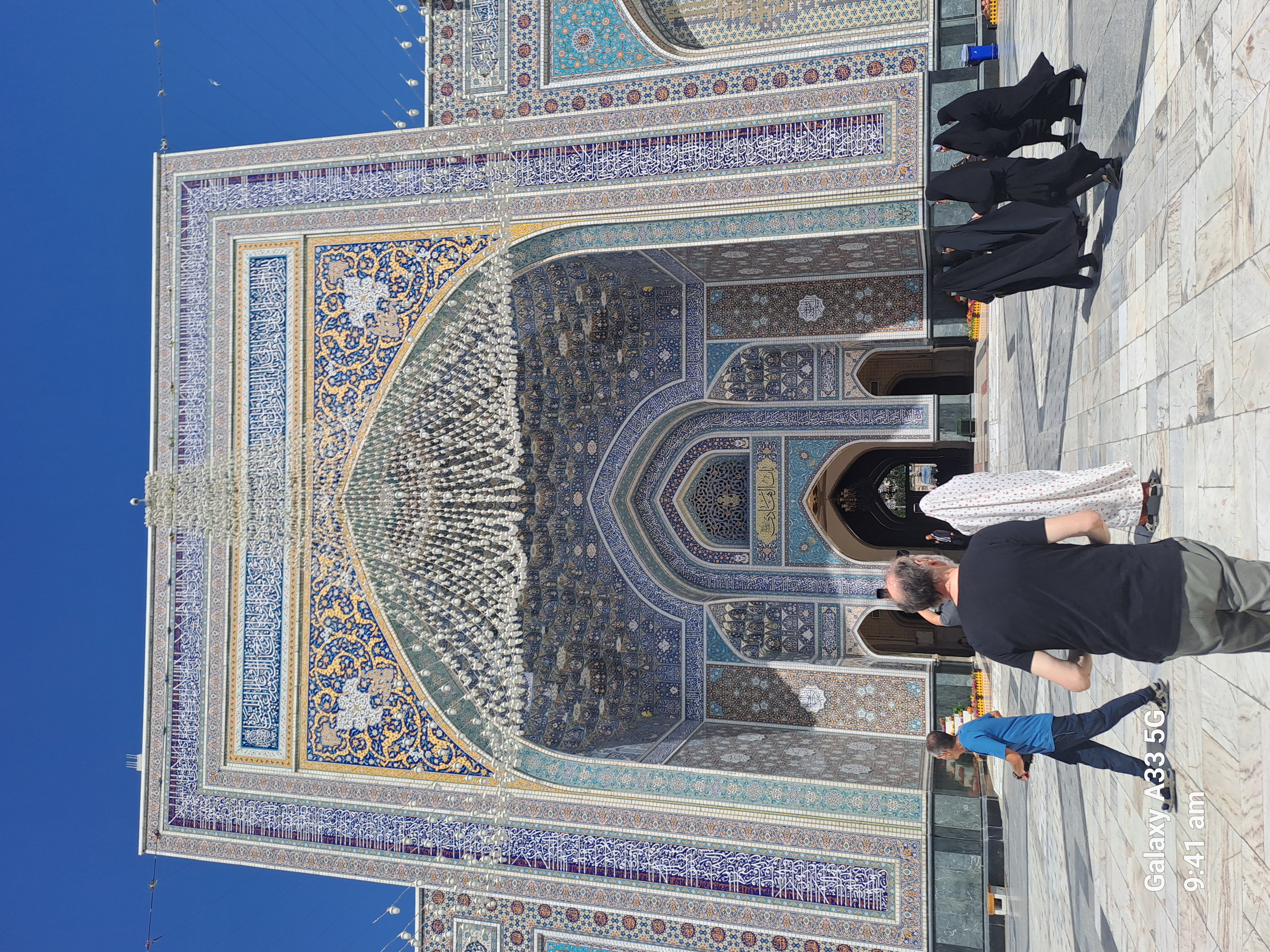
We had an induction video and talk to make sure that we were fully informed. We were even allowed to ask the cleric questions which I’m not sure he always appreciated. 27,000,000 pilgrims a year visit this site the holiest city in the world. Apparently Imams are free from sin, they are seen as a cross between the pope and a saint, intercessing between people and God and granting prayers. He lived in Medina 1300 years ago, but the Caliph saw his as a threat and invited him to visit him all the way across to the other side of Iran. He knew he wouldn’t come back to he said his final goodbye to his family when he left. He was aged 53, 2 and a half years later he was poisoned and died. The shrine was small to begin with and then gradually grew.
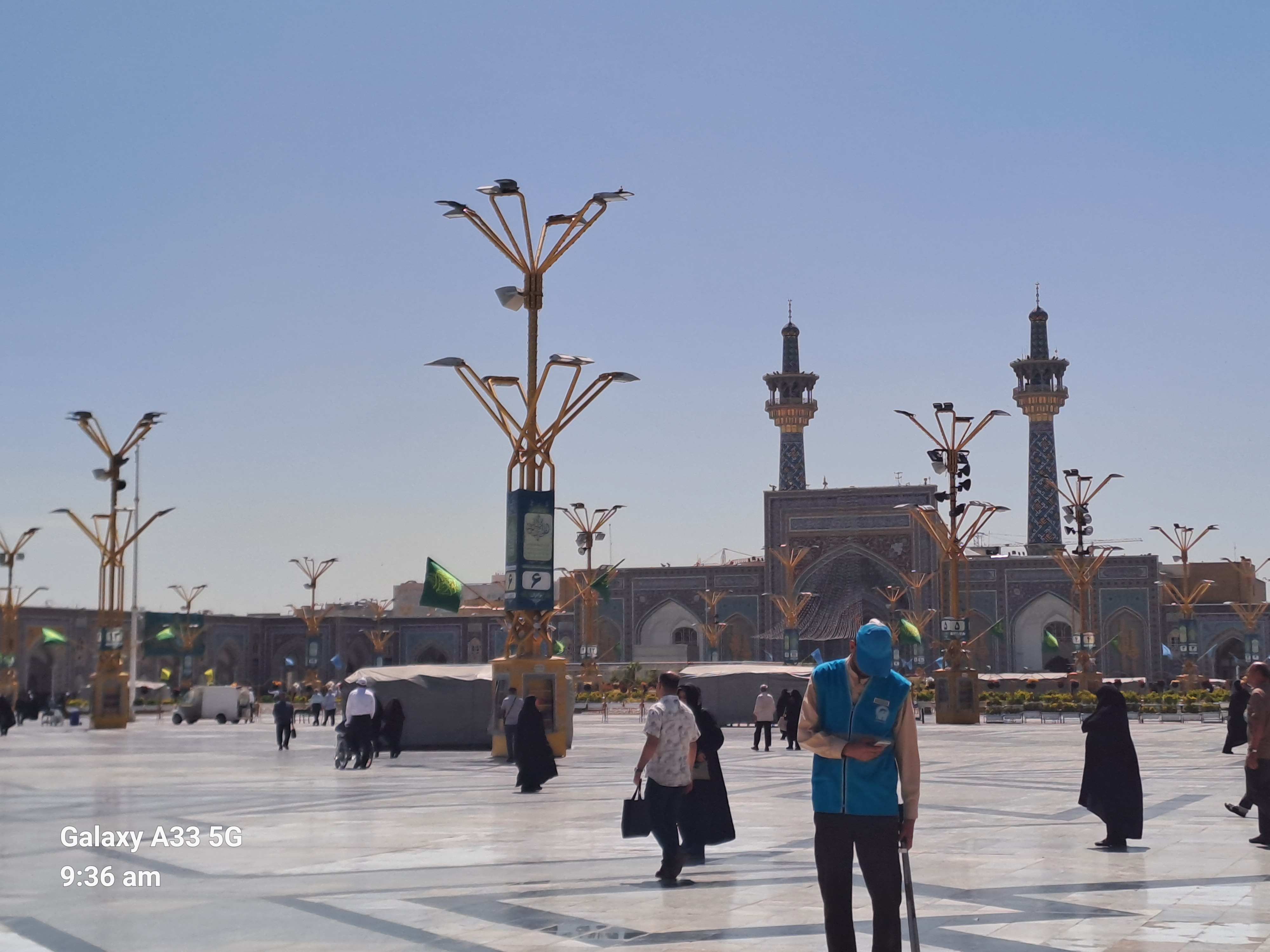
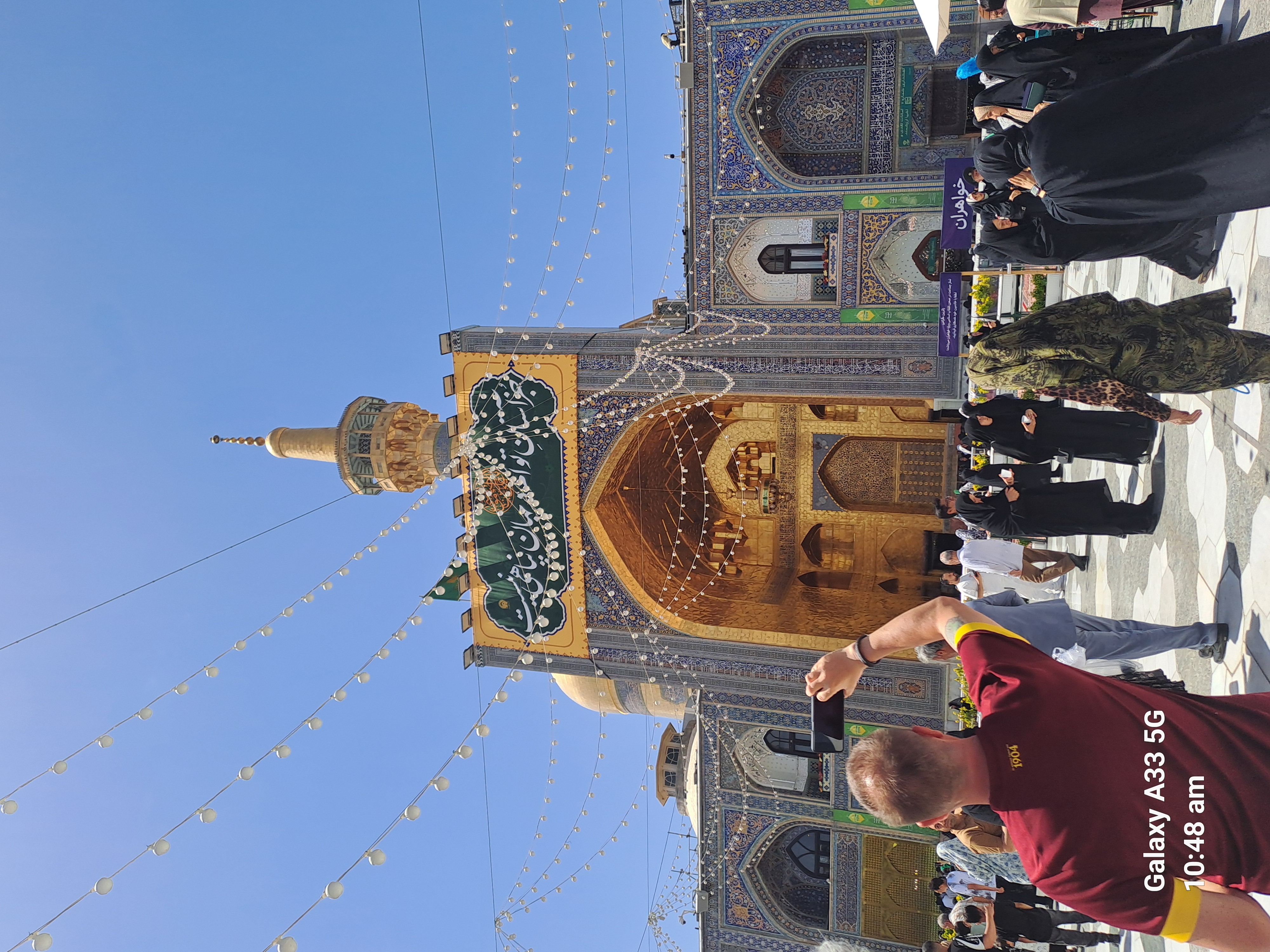
At the museum we could see carpet making ( although I think the phones were more interesting than the work ) and the old shrine and covering. The new one under the dome, is only available to Muslims to see.
Here I asked to remove my head piece as the elastic was too tight. With help from the guides I got it off and used my head scarf instead. However this caused new problems in that the chador wasn’t held up now and sagged at the back and got too long for me. It also meant I had several women come up to correct my dress and I was robustly defended by my guides each time. I also had several women come up to say welcome and even improperly dressed I felt very welcomed by everyone.
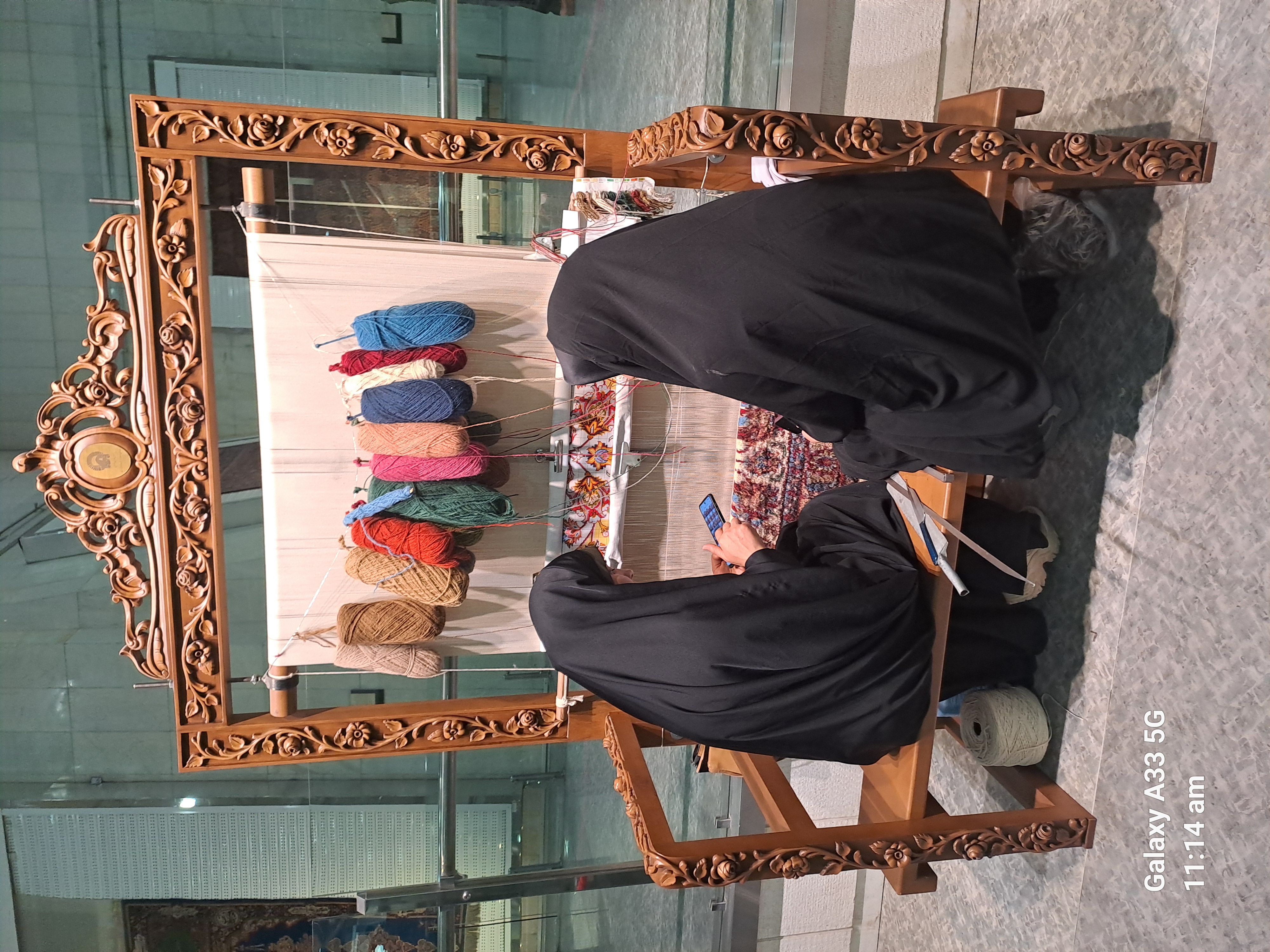
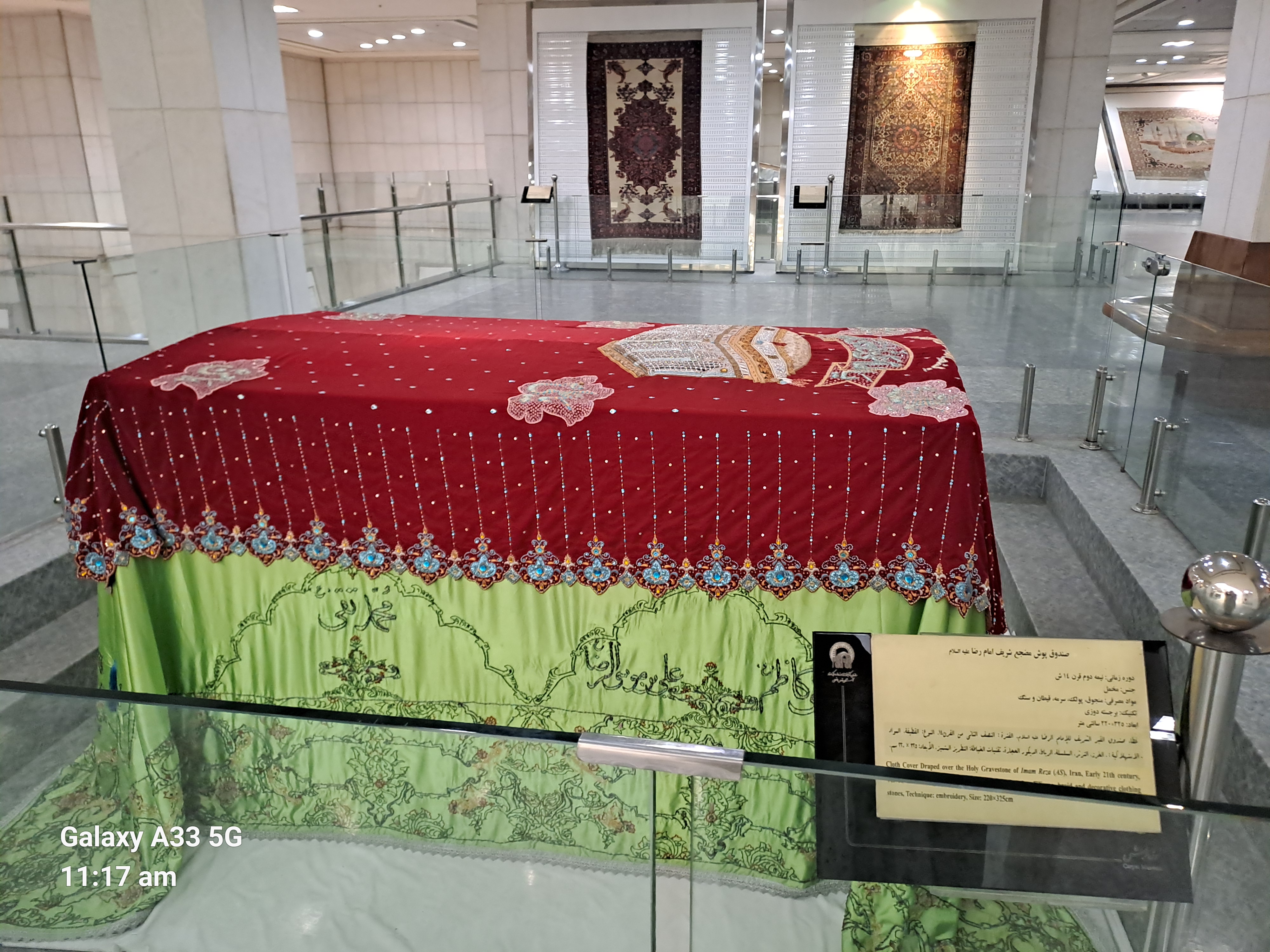
The map helped to illustrate the route Reza travelled.
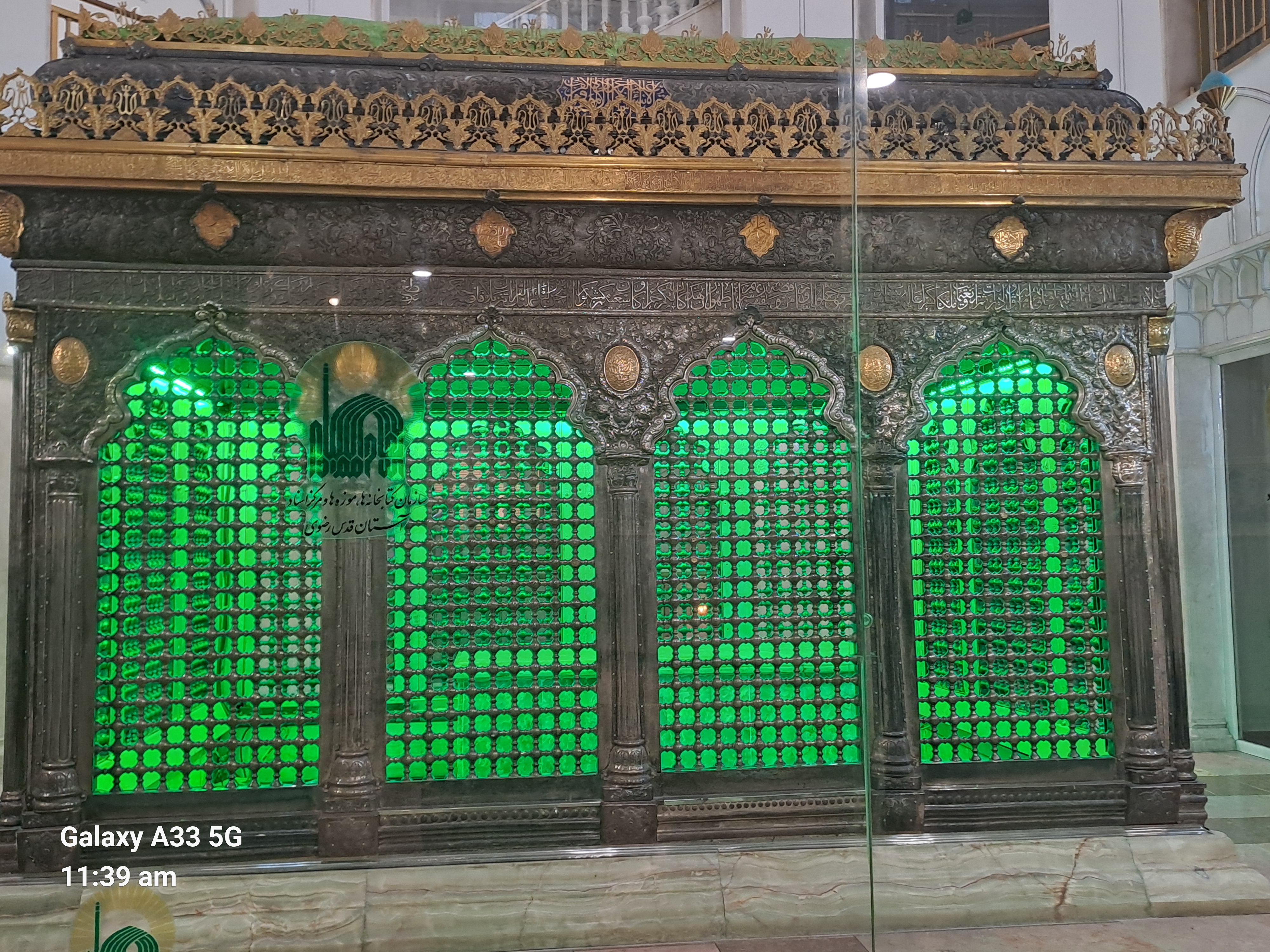

The prayer hall below the ground floor was all bling with mirror work all over. Escalators to get up as well!

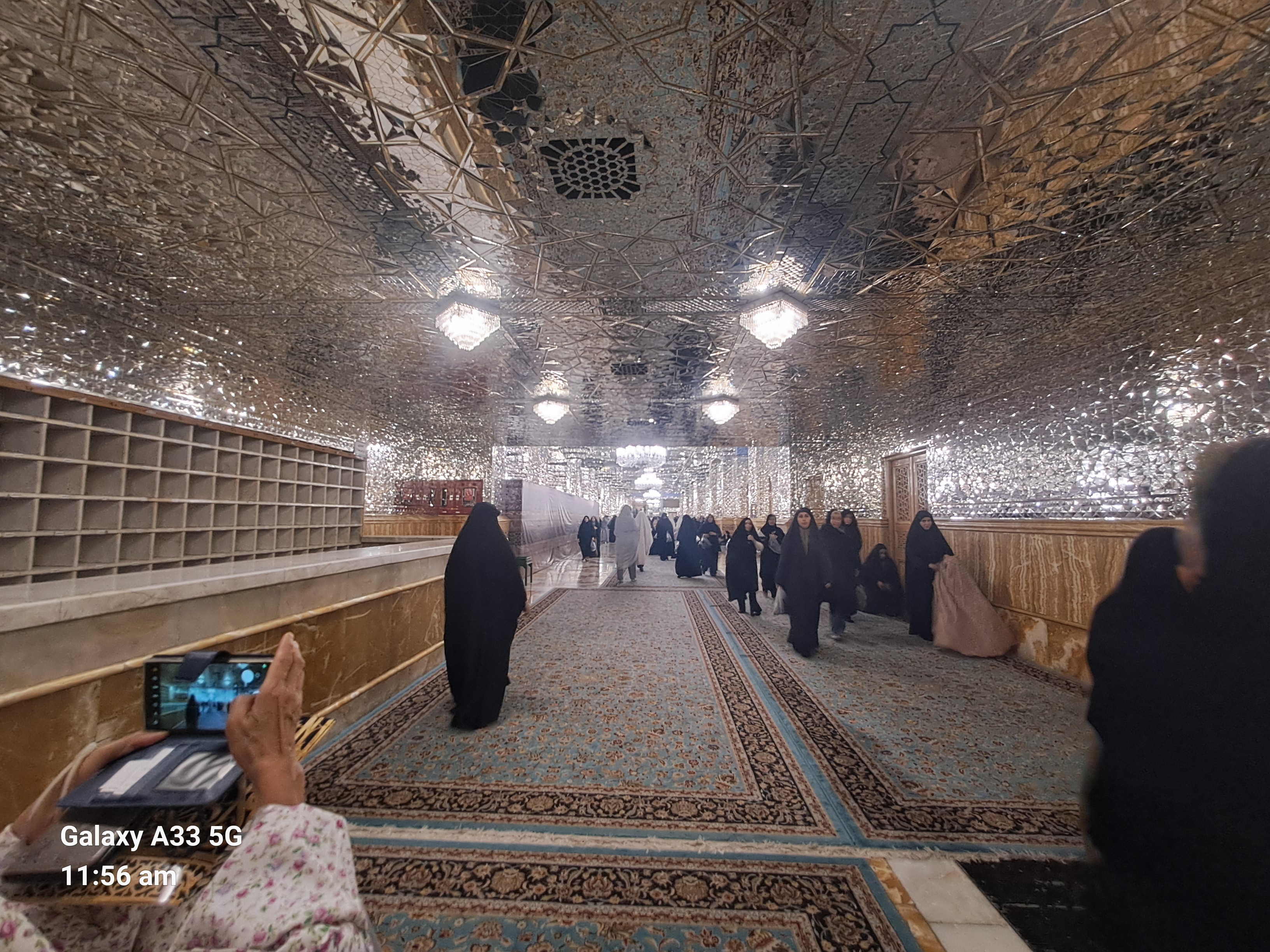
After the mosque we did a visit to the monument of the most powerful king of Iran and the East born 1688. Although he is revered he came to a sad end. He grew so suspicious of everyone in is old age that he killed many of his nearest and dearest as suspects. In the end his courtiers killed him for everyone’s safety.
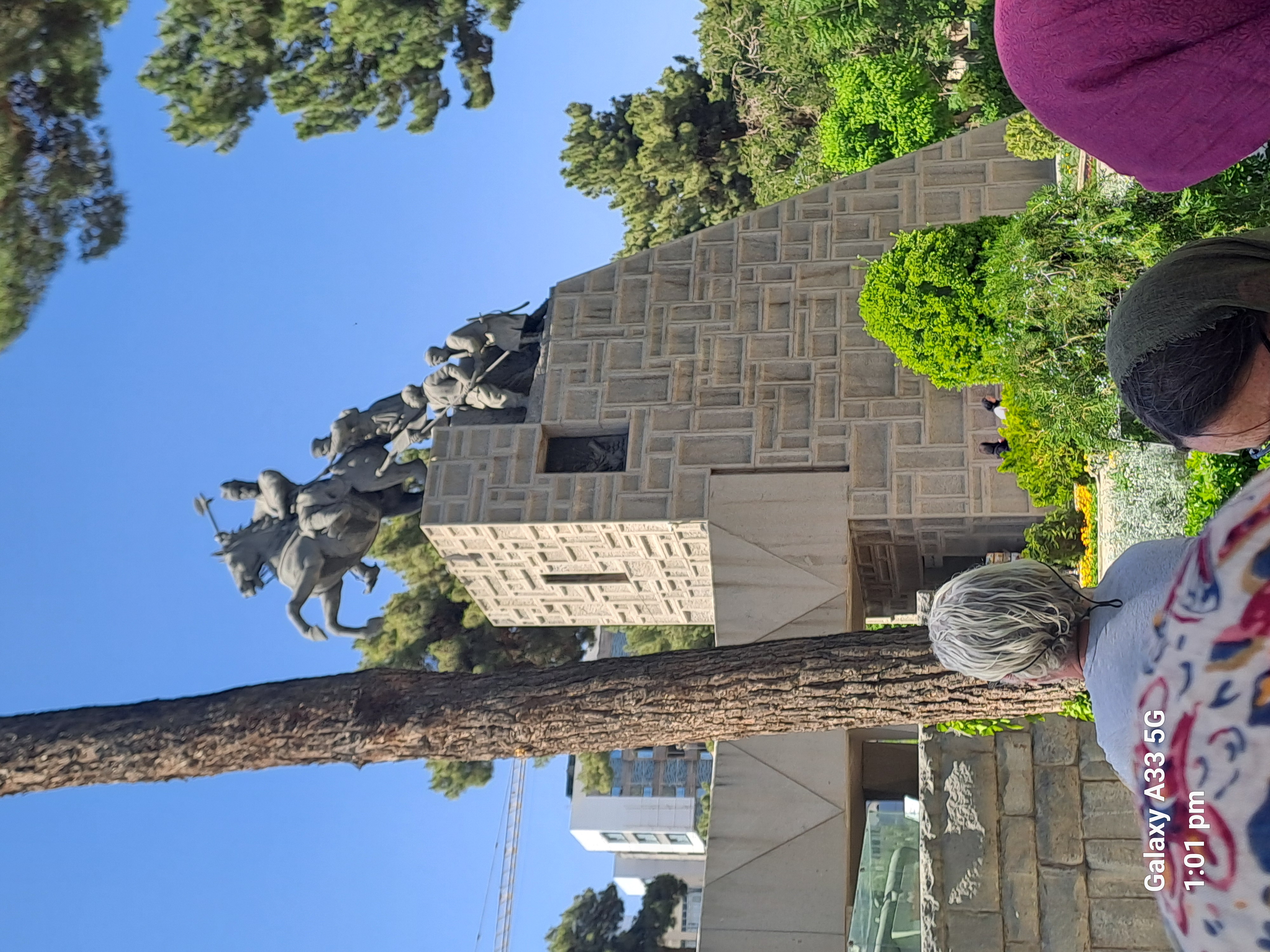
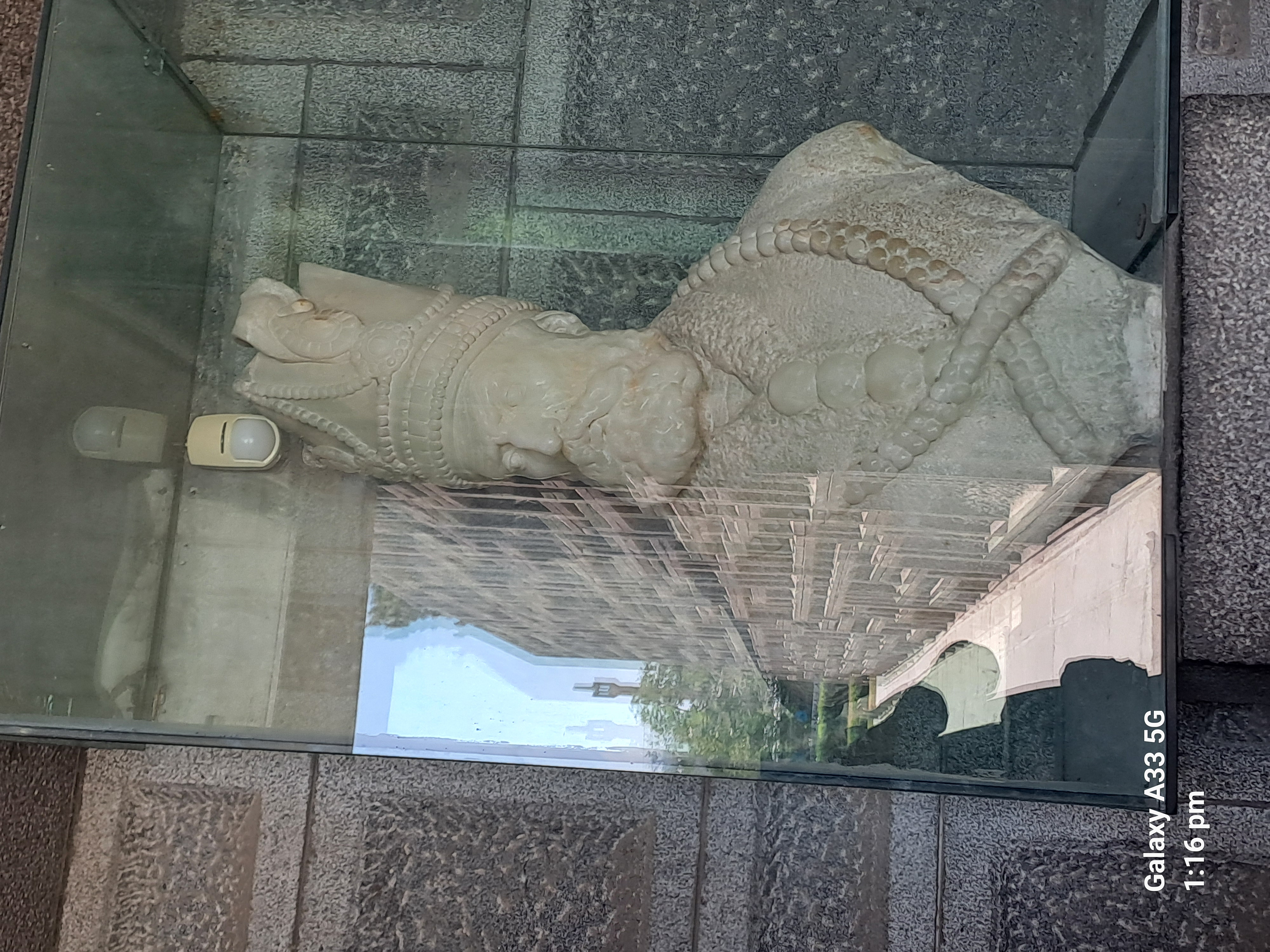
The monument is shaped like a tent in honour of him as he was born and died in a tent. It is of rough granite like his personality.
Our final leaving from a country that we had really enjoyed visiting was marred by towel gate. The staff carefully inspected all our towels before we left and wanted to charge for any slight stains. Apparently this isn’t unheard of here. We had a long delay while the cost of replacement towels was disputed and negotiated before we got our passports back.
